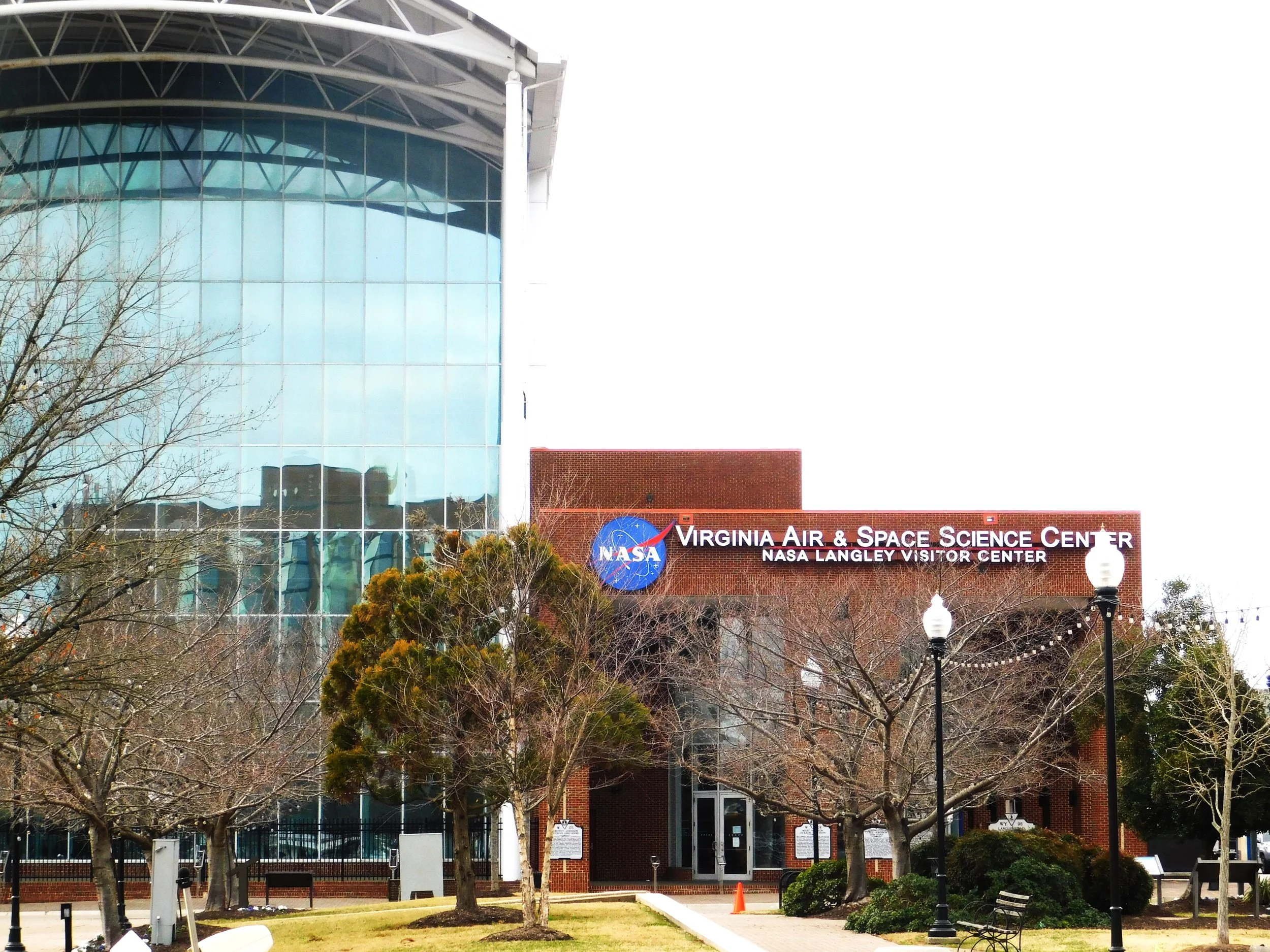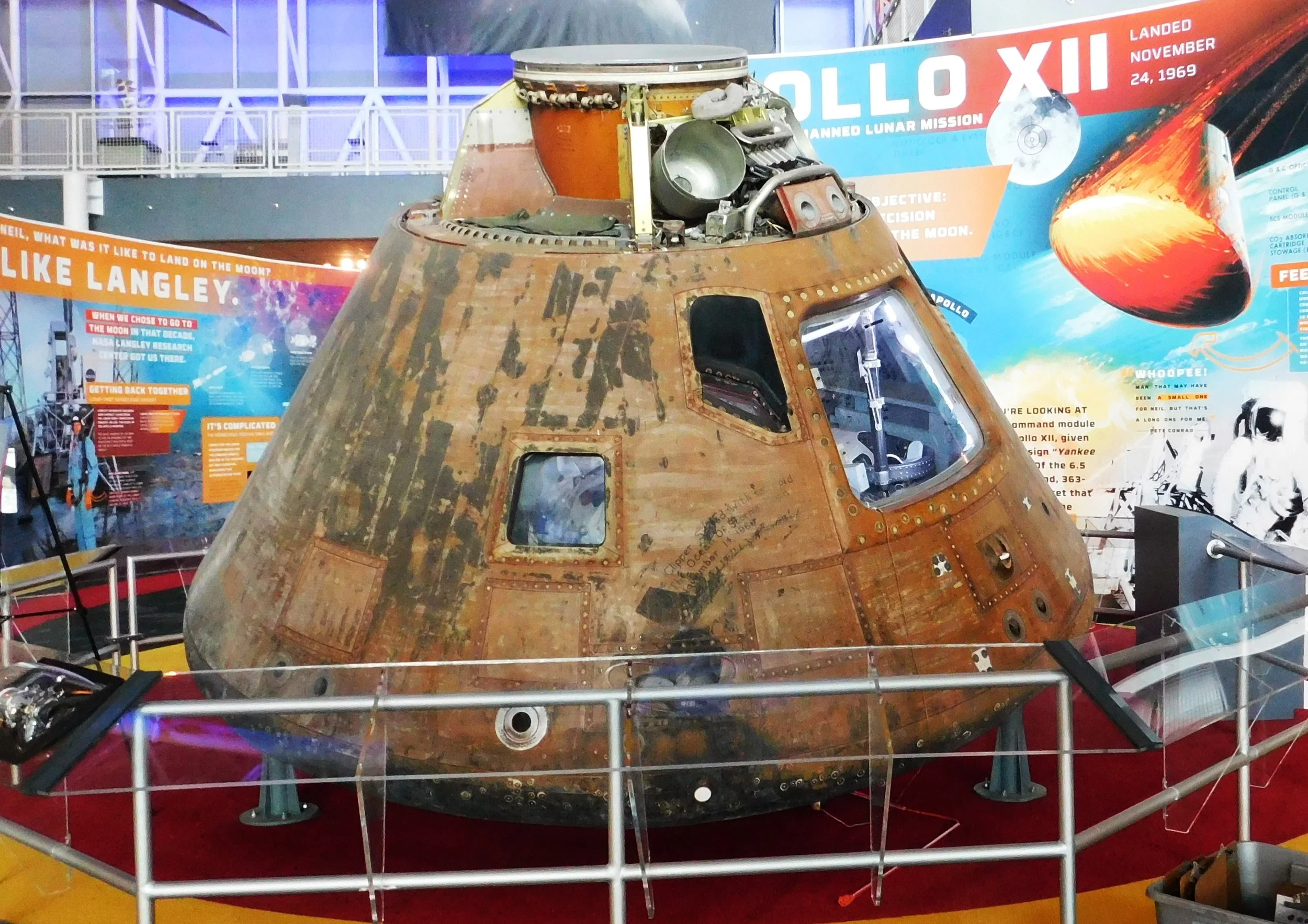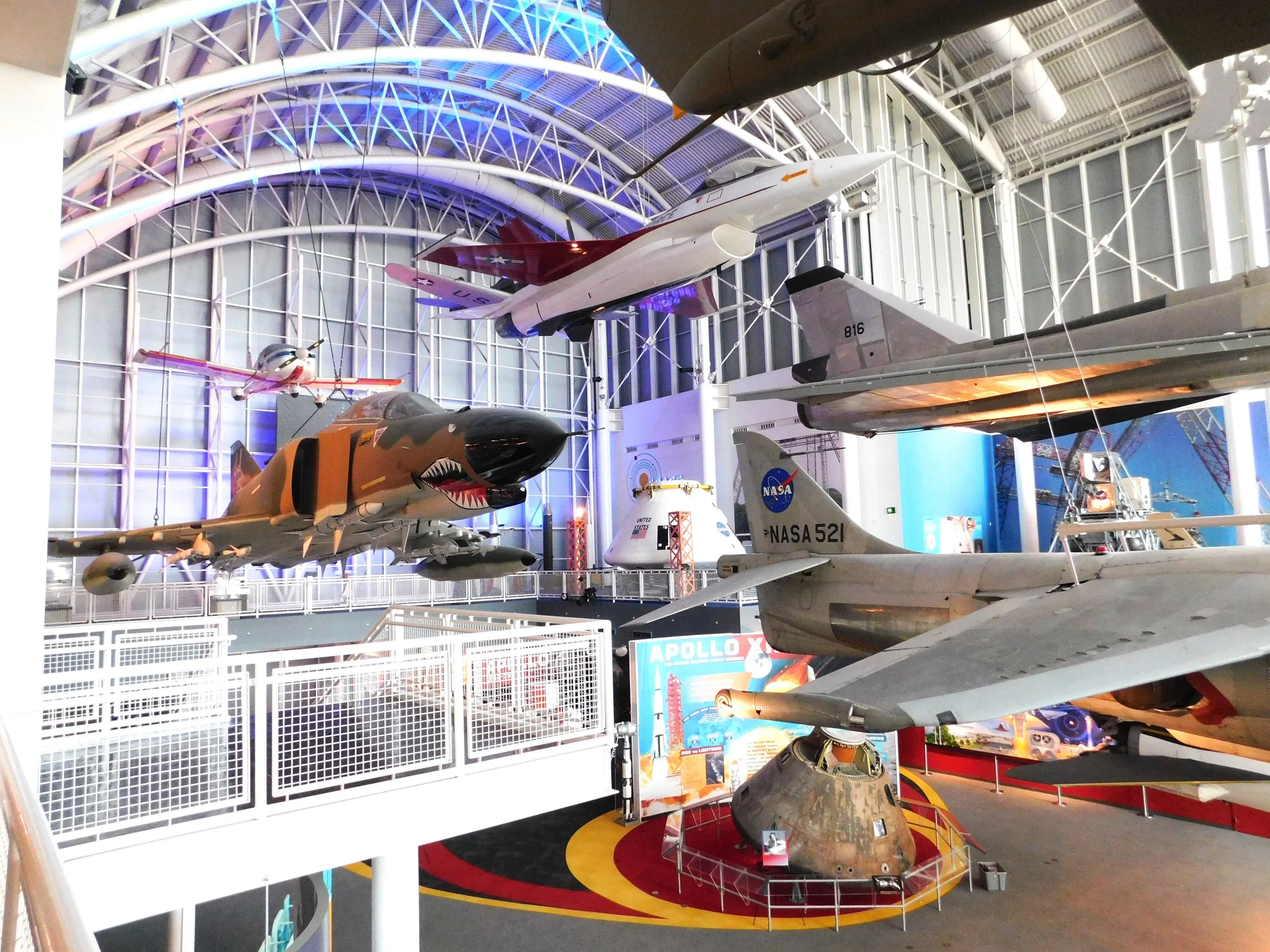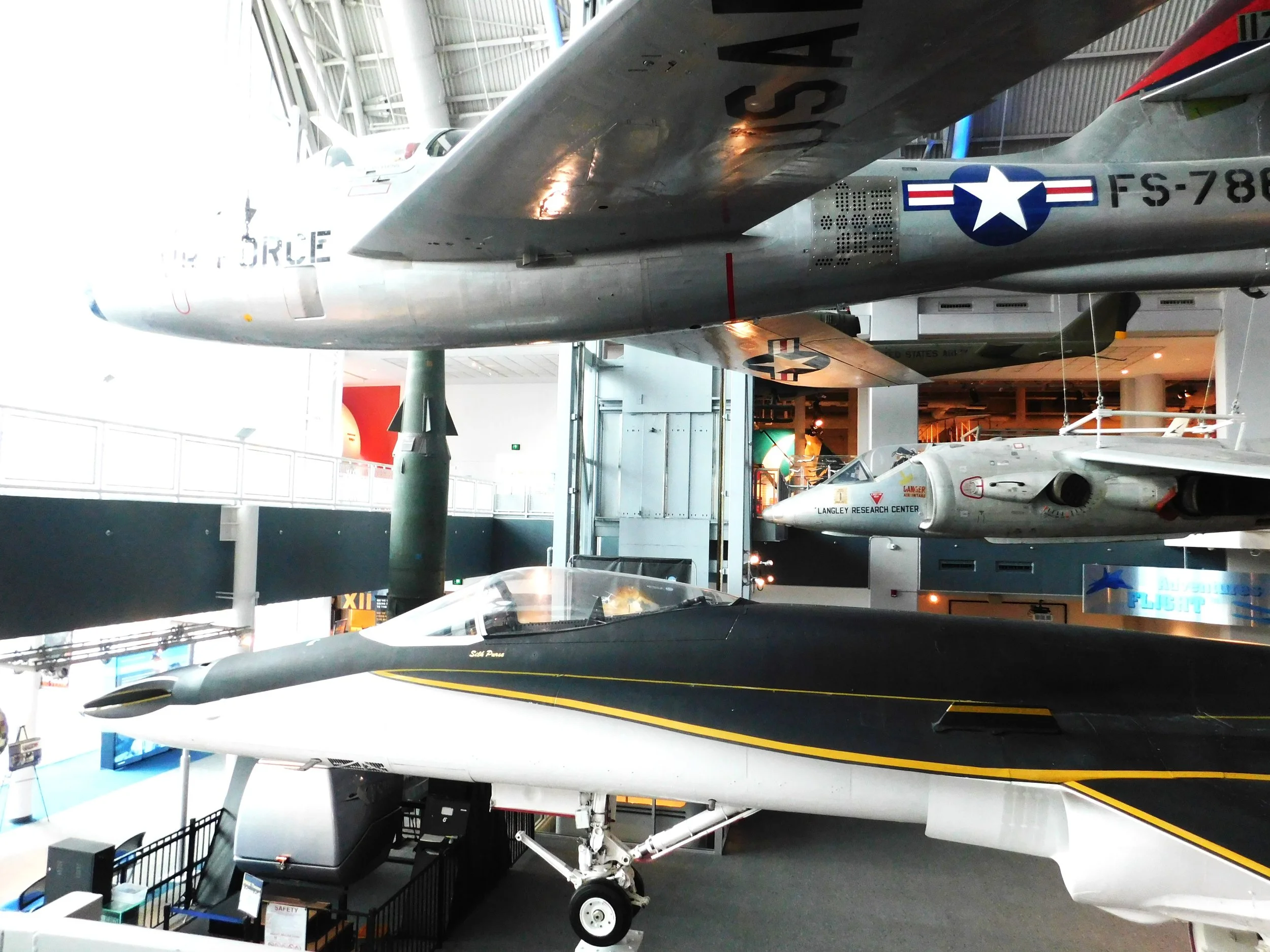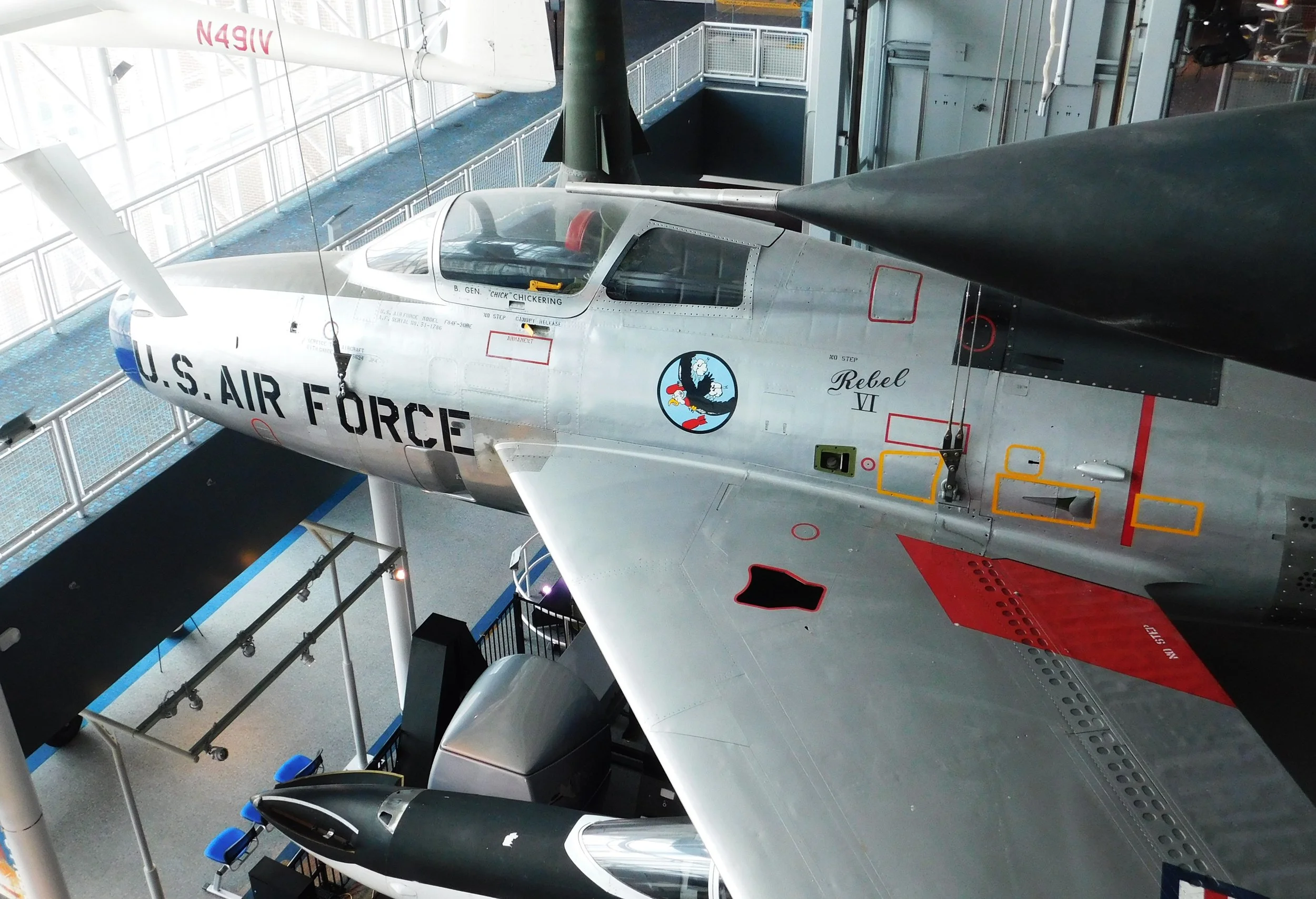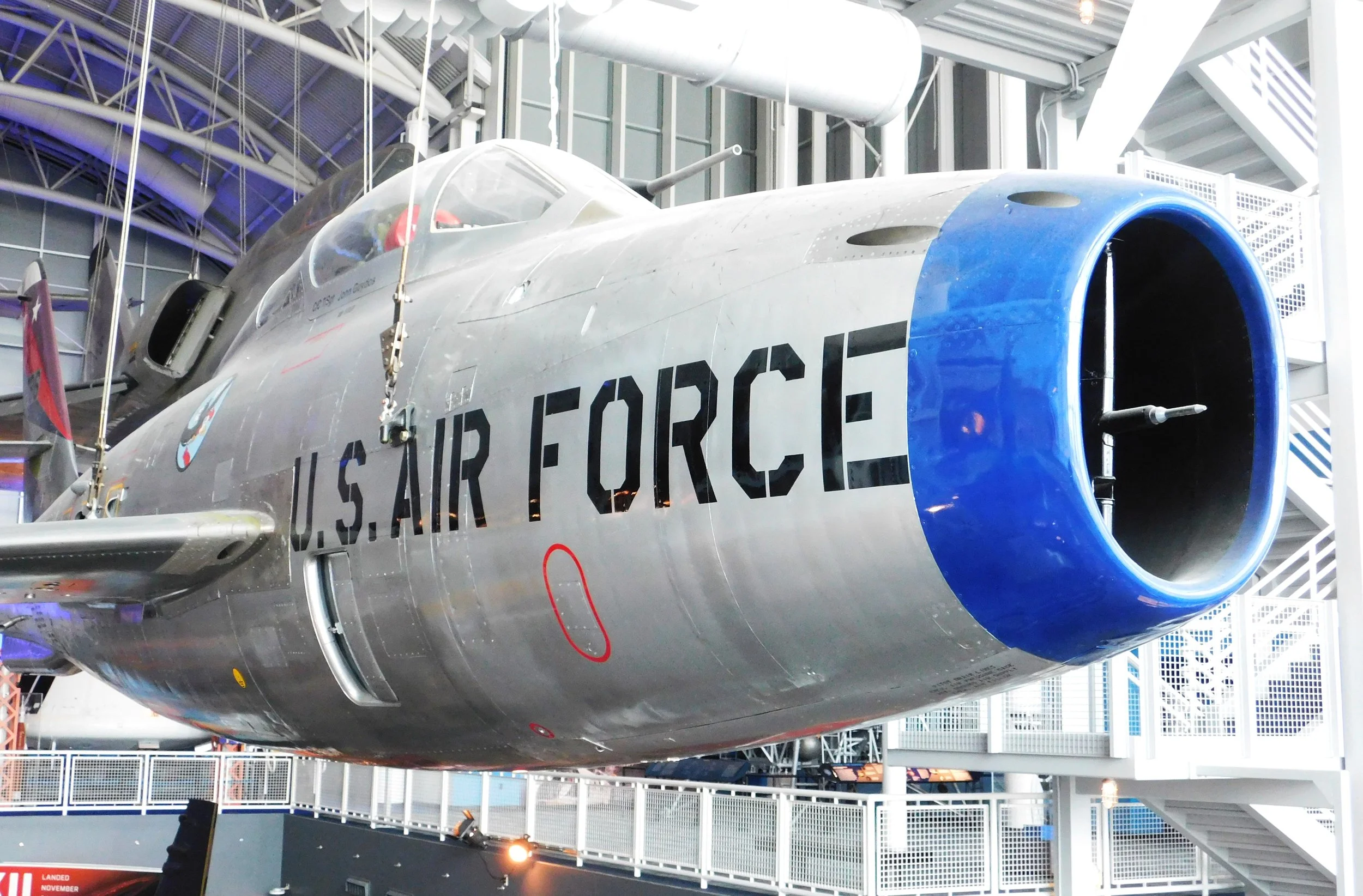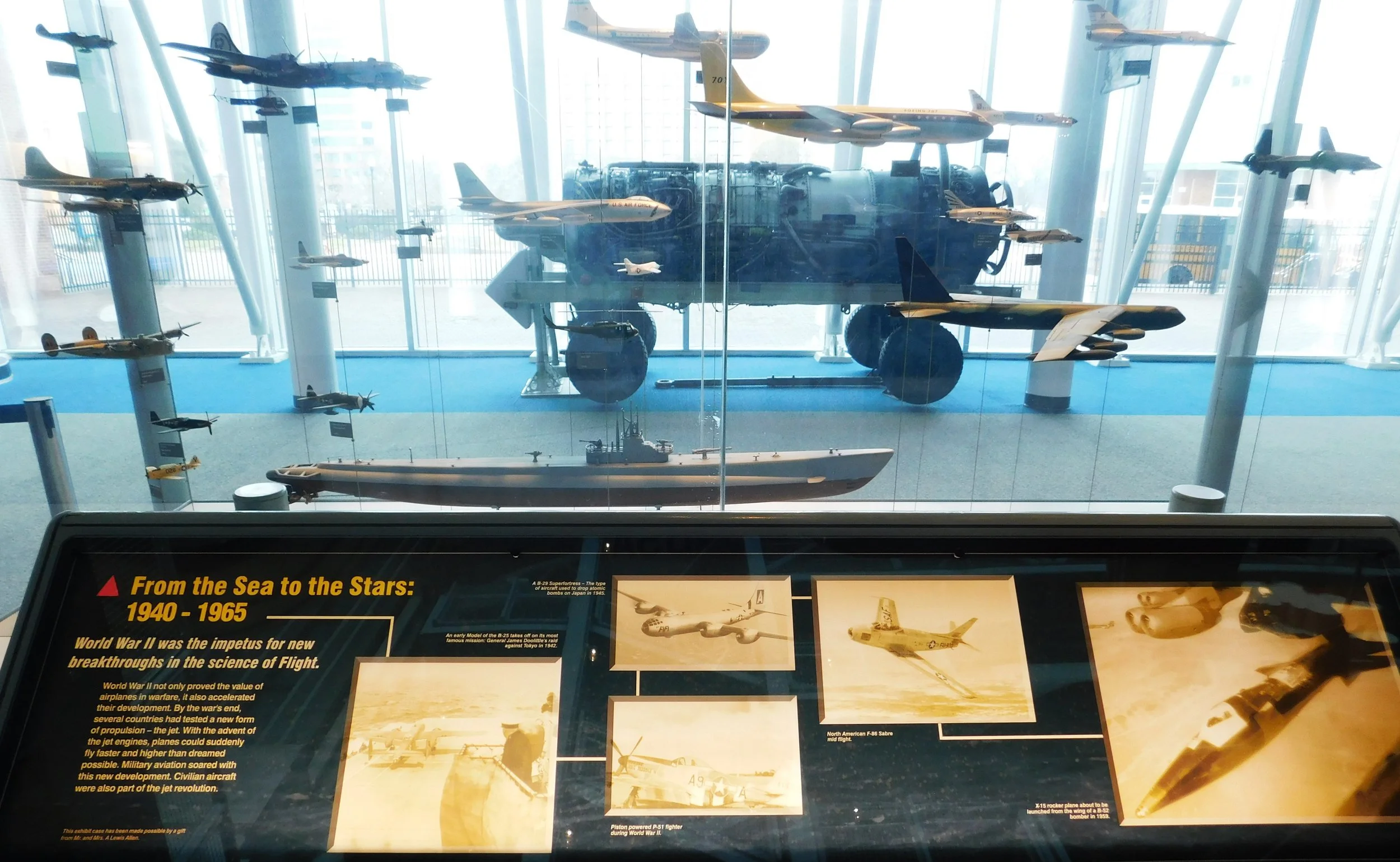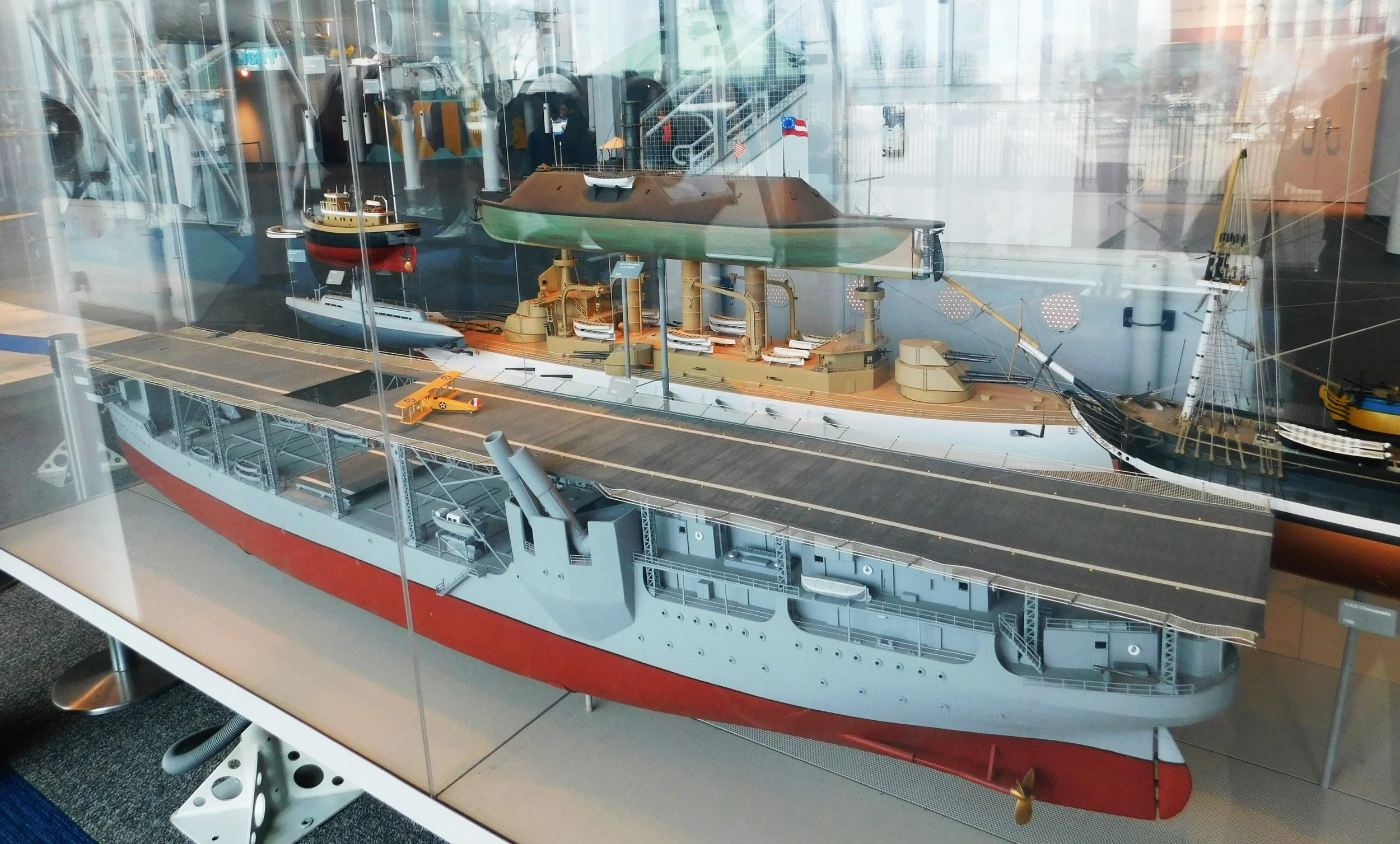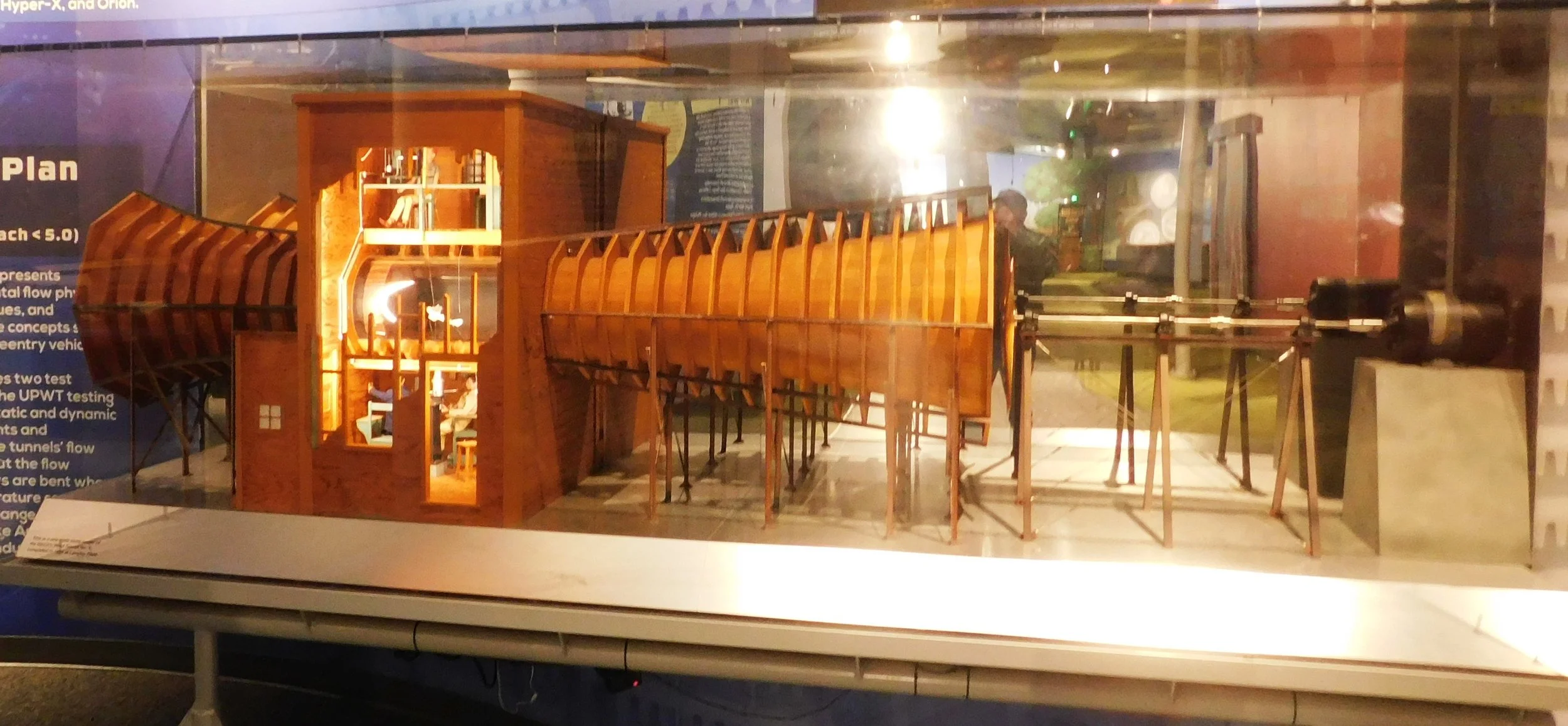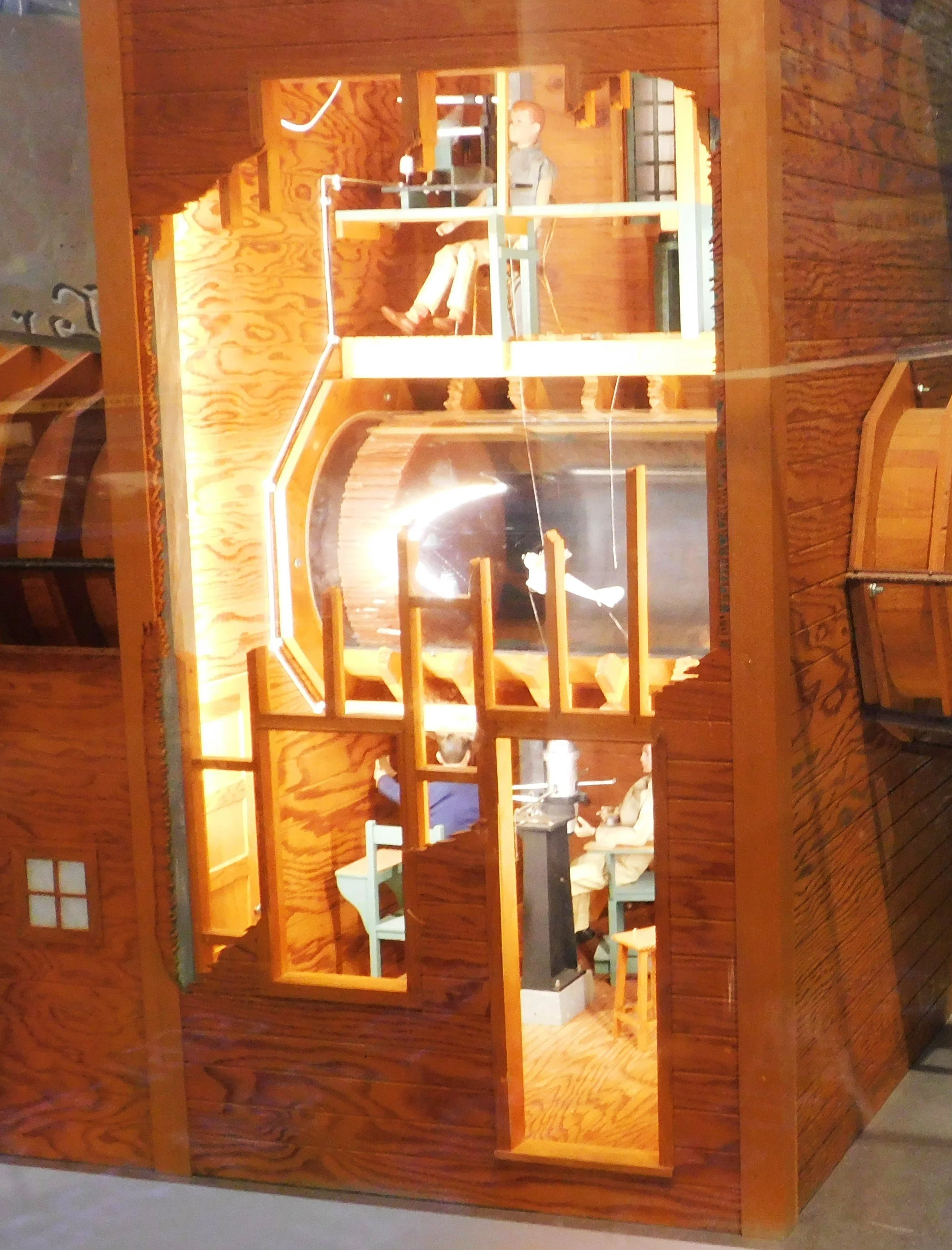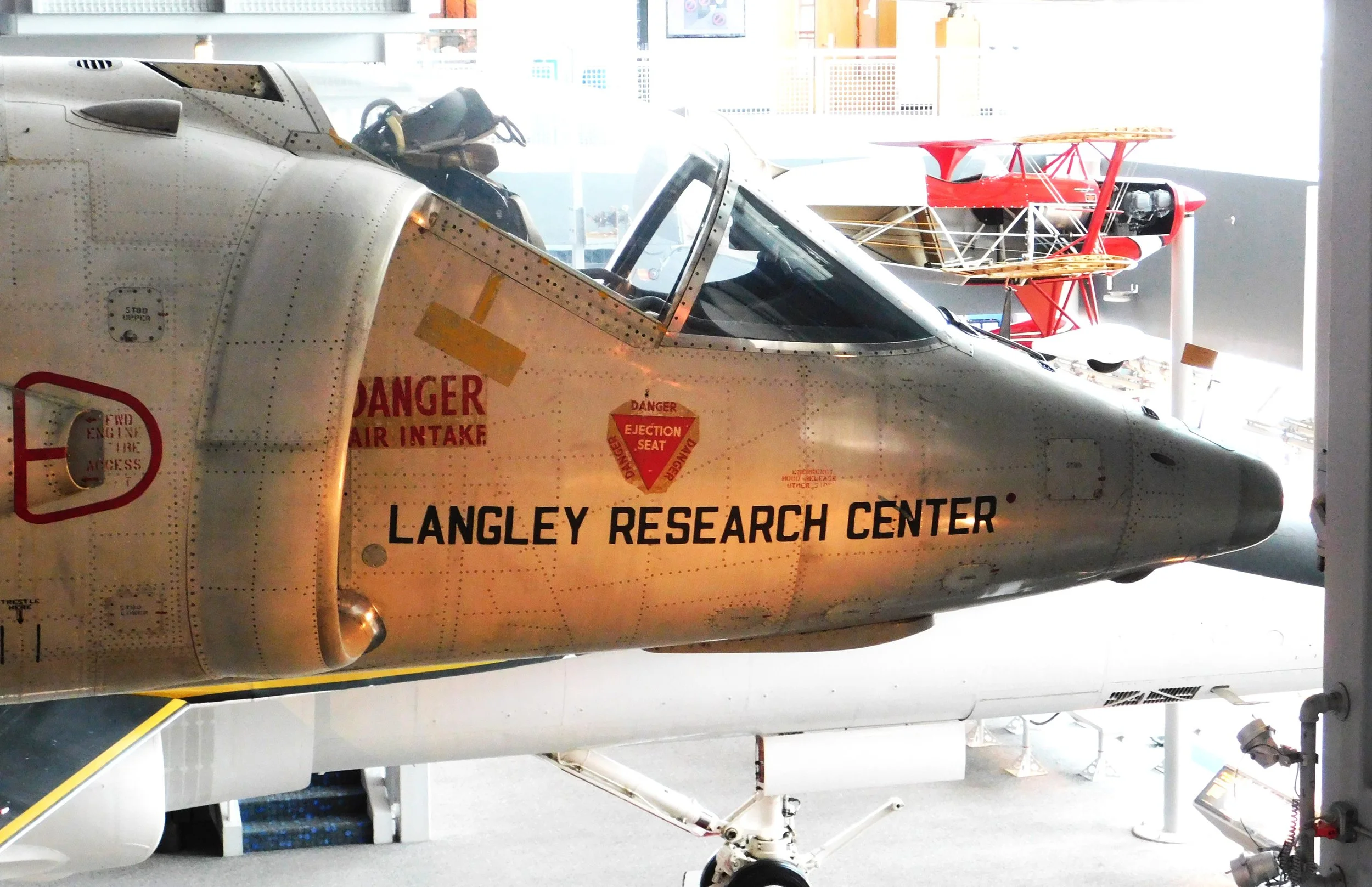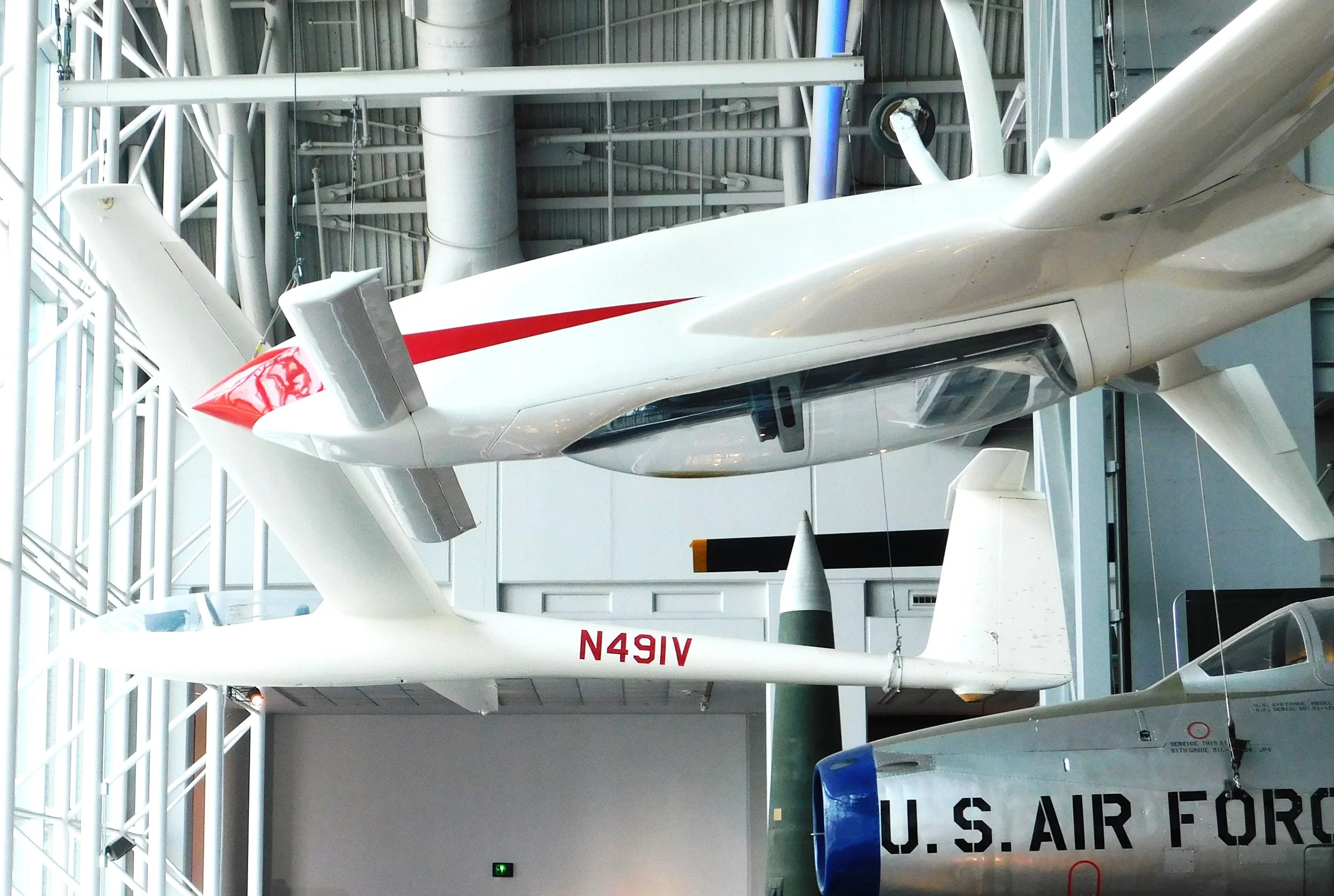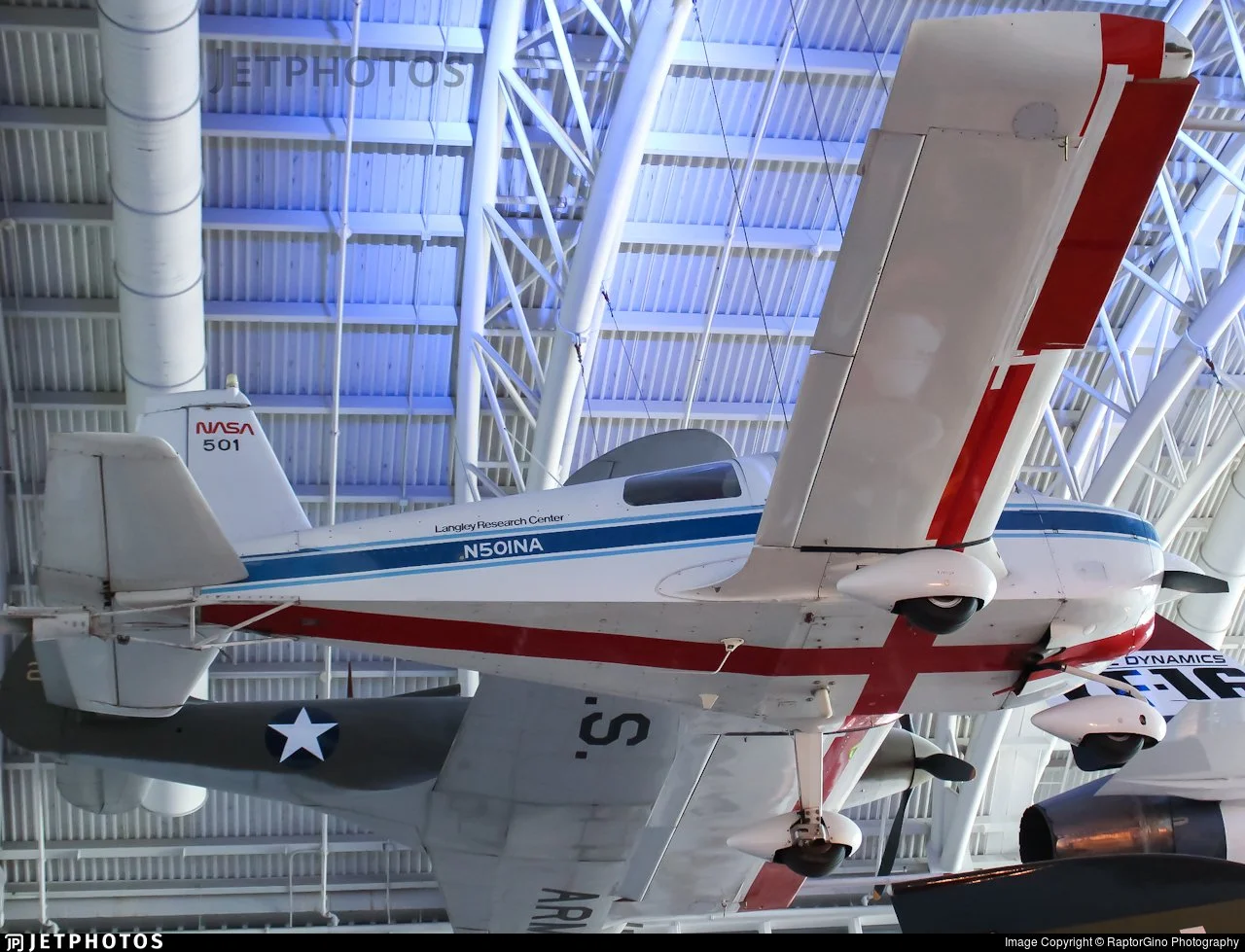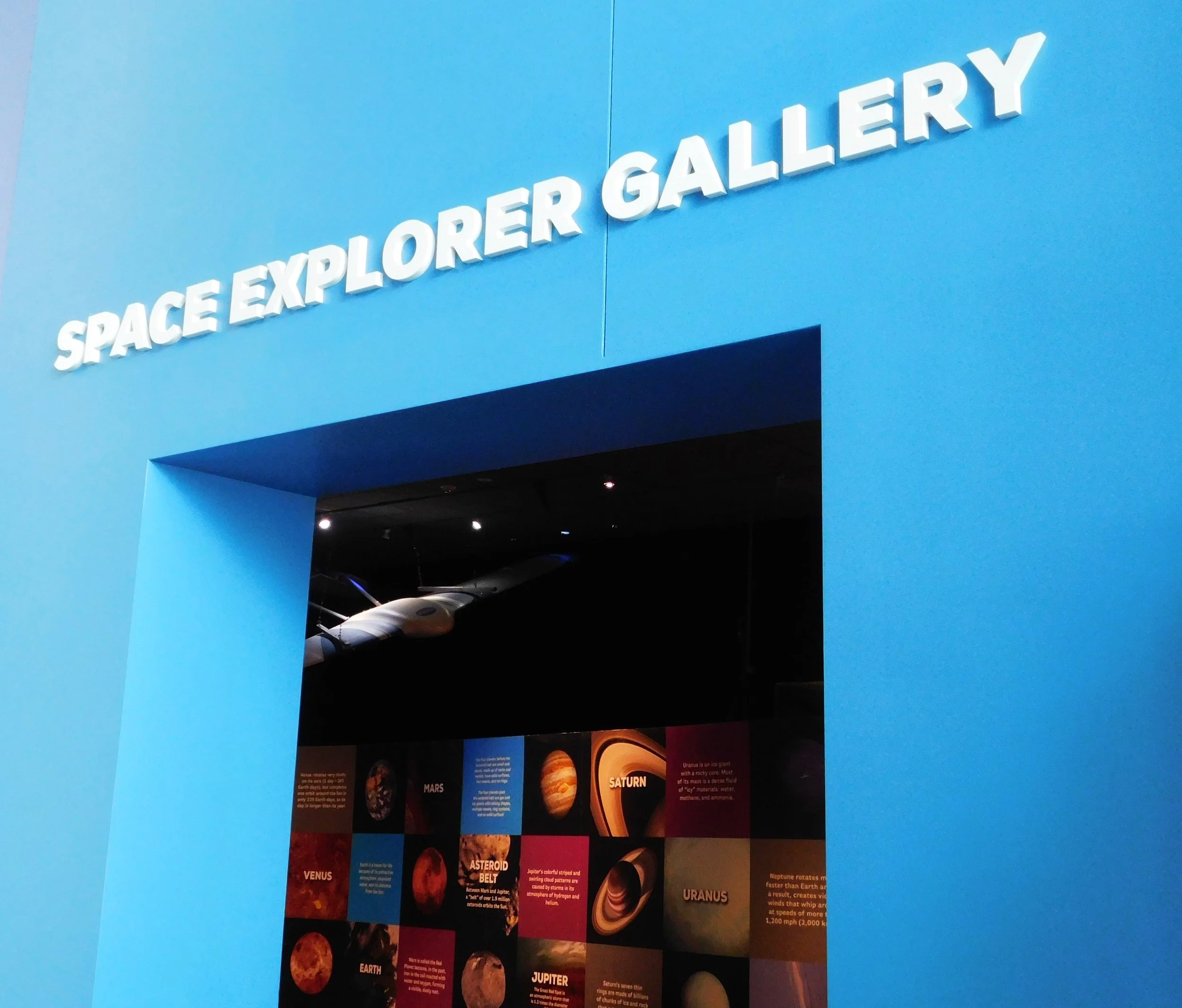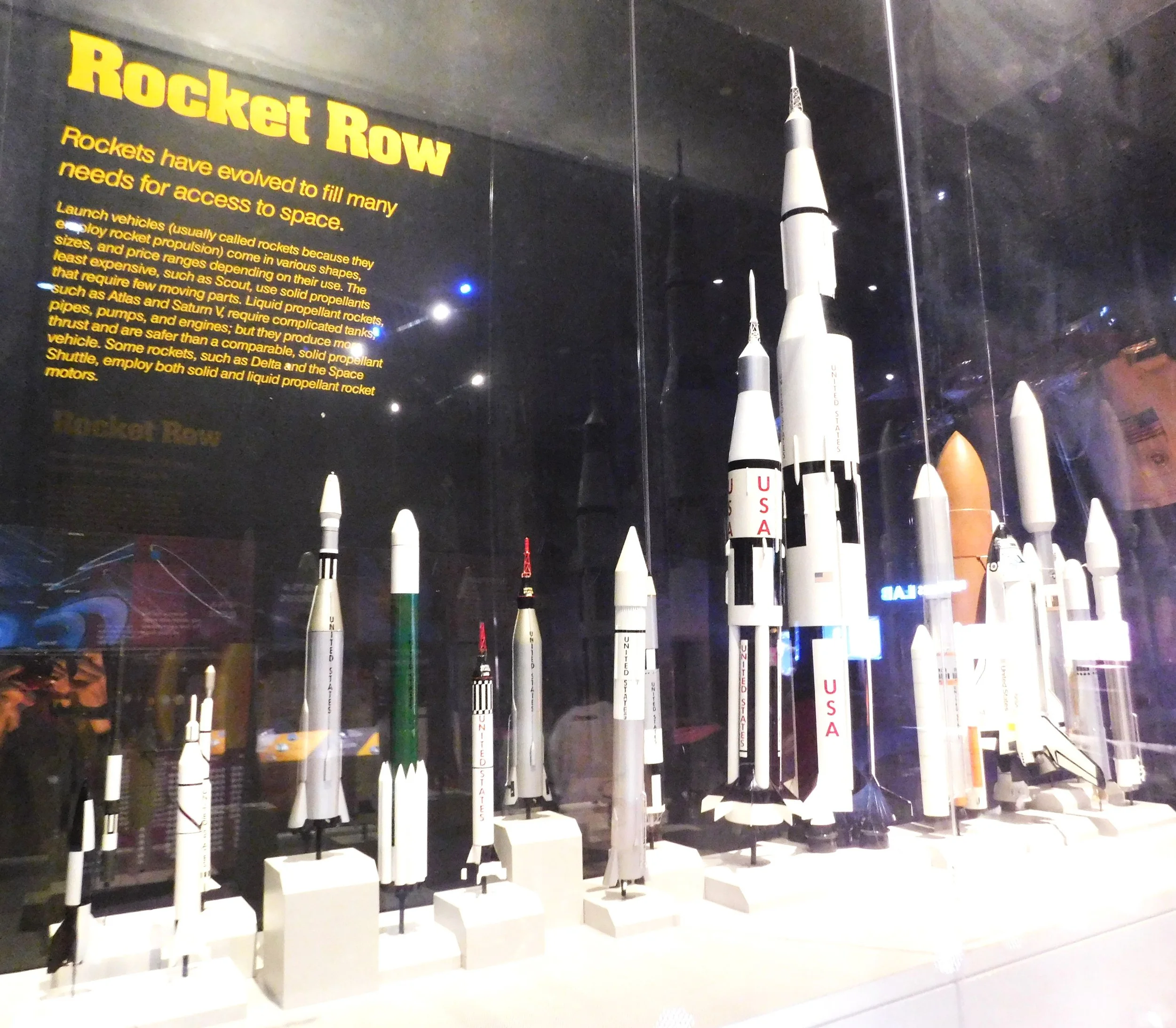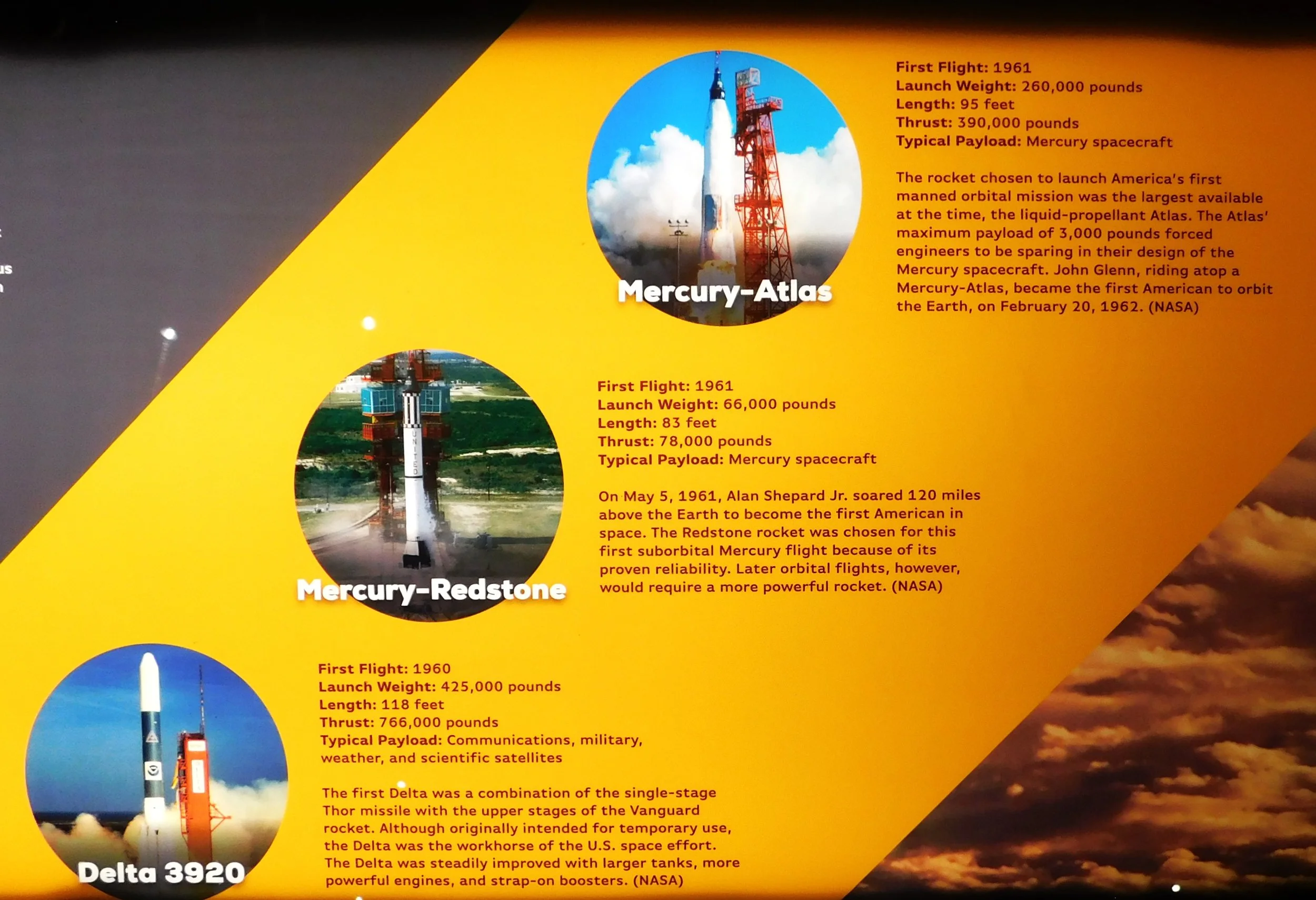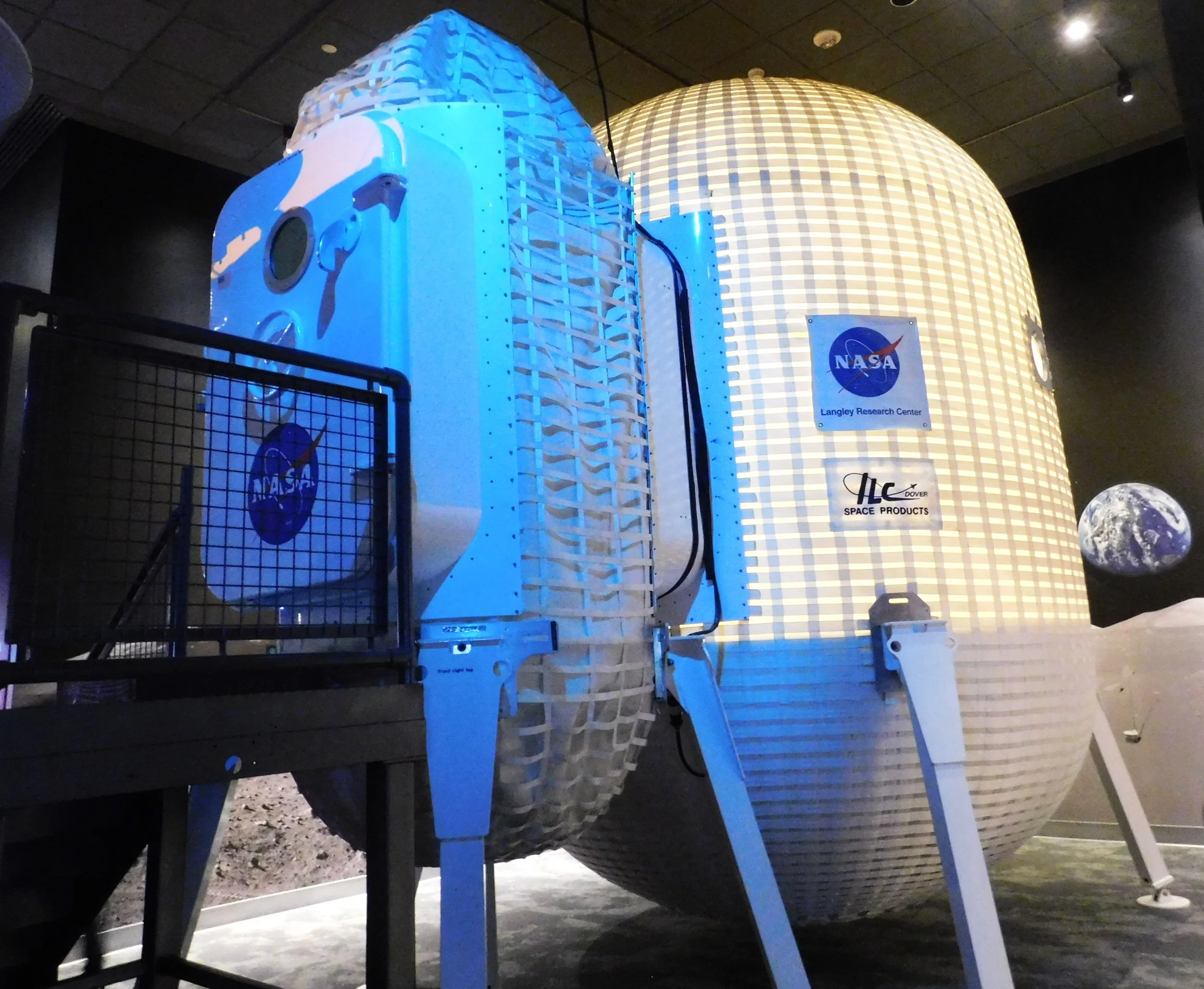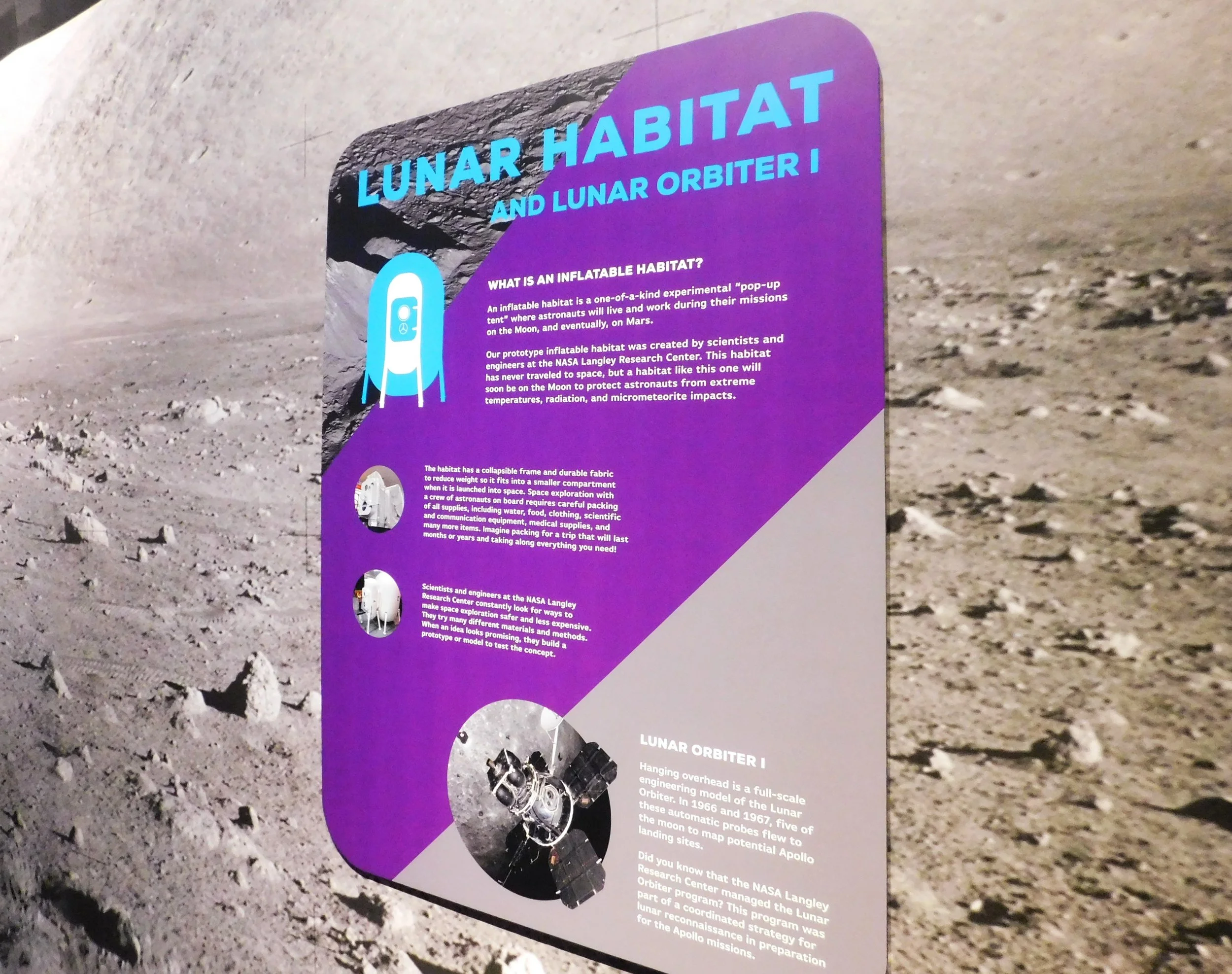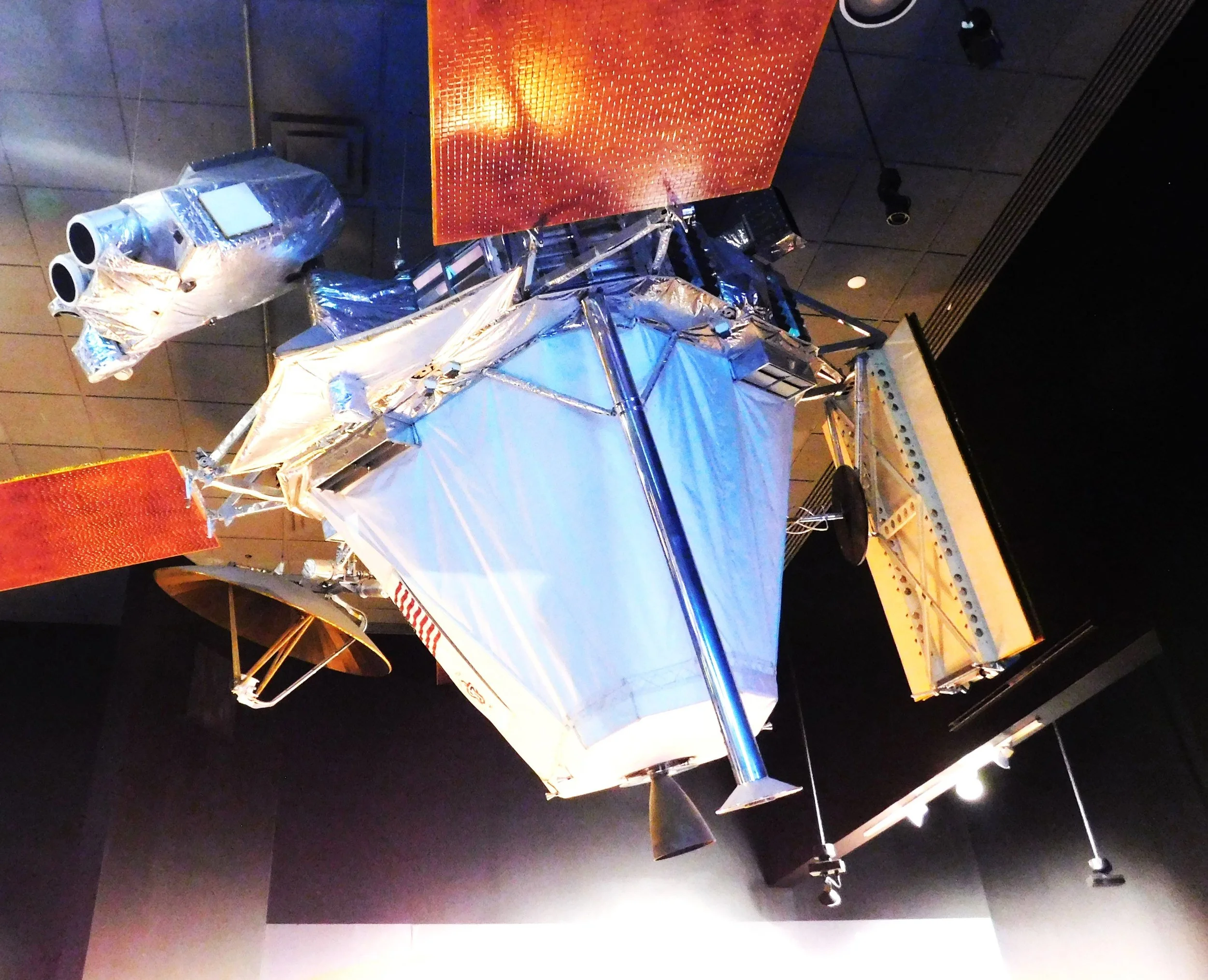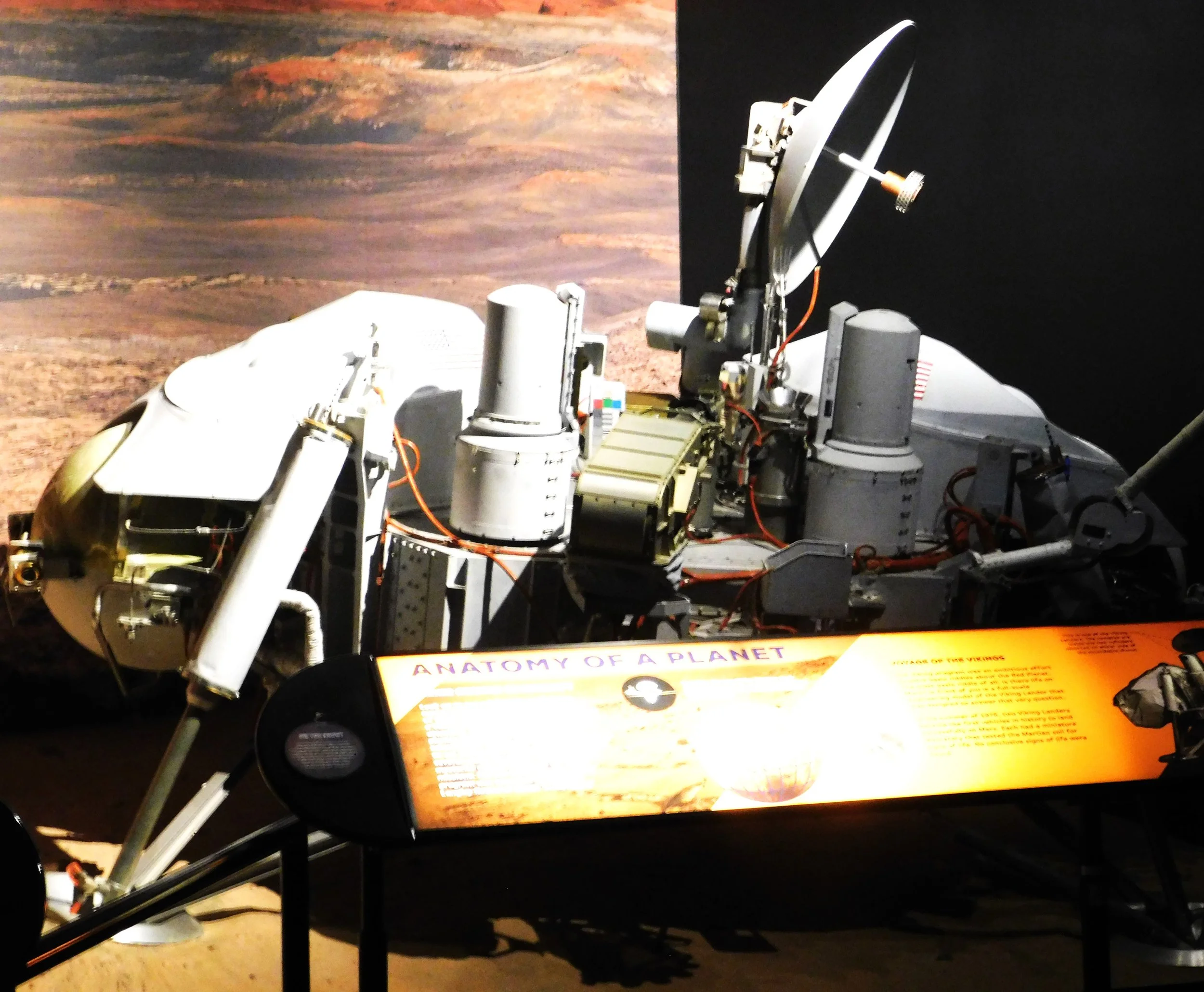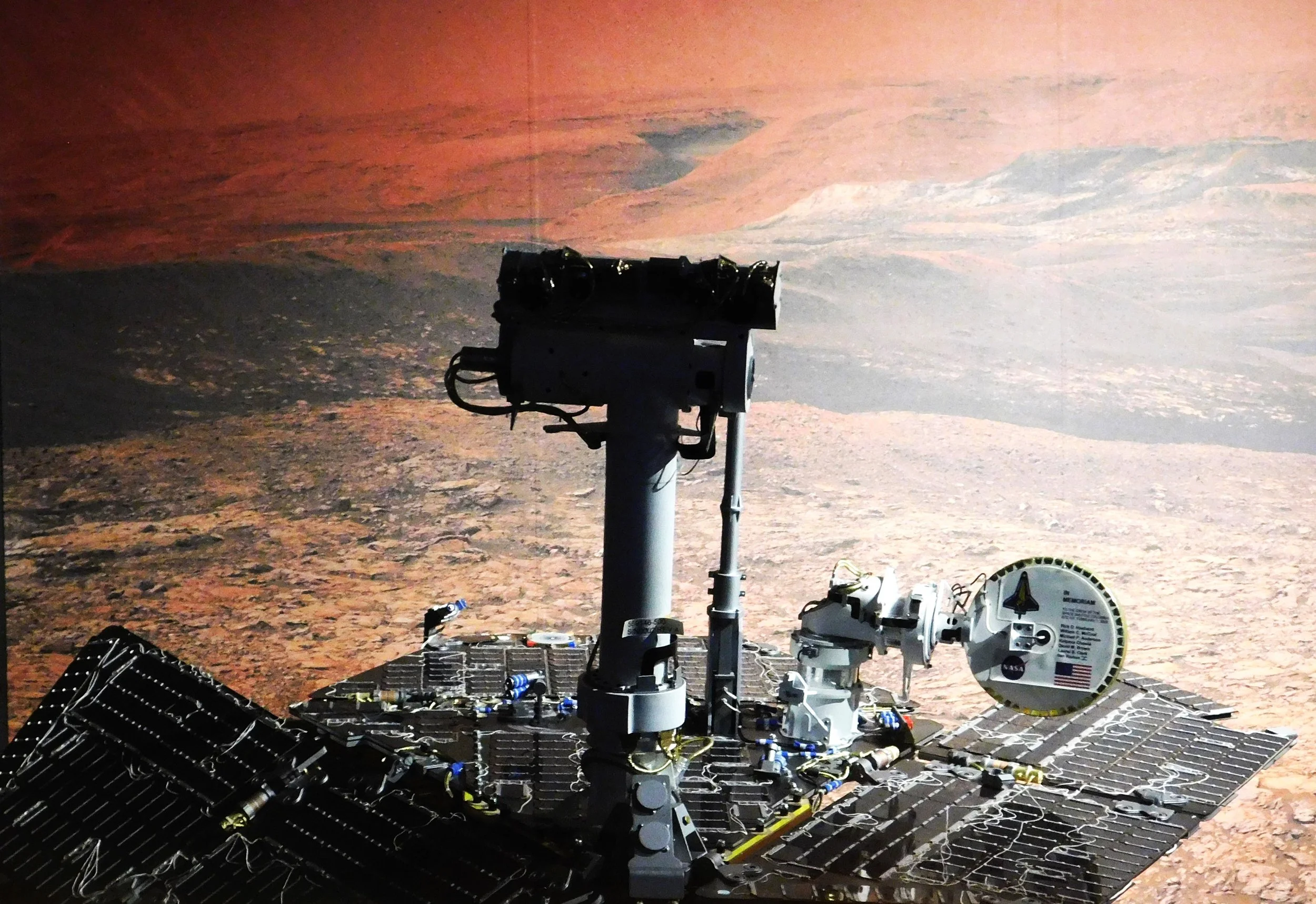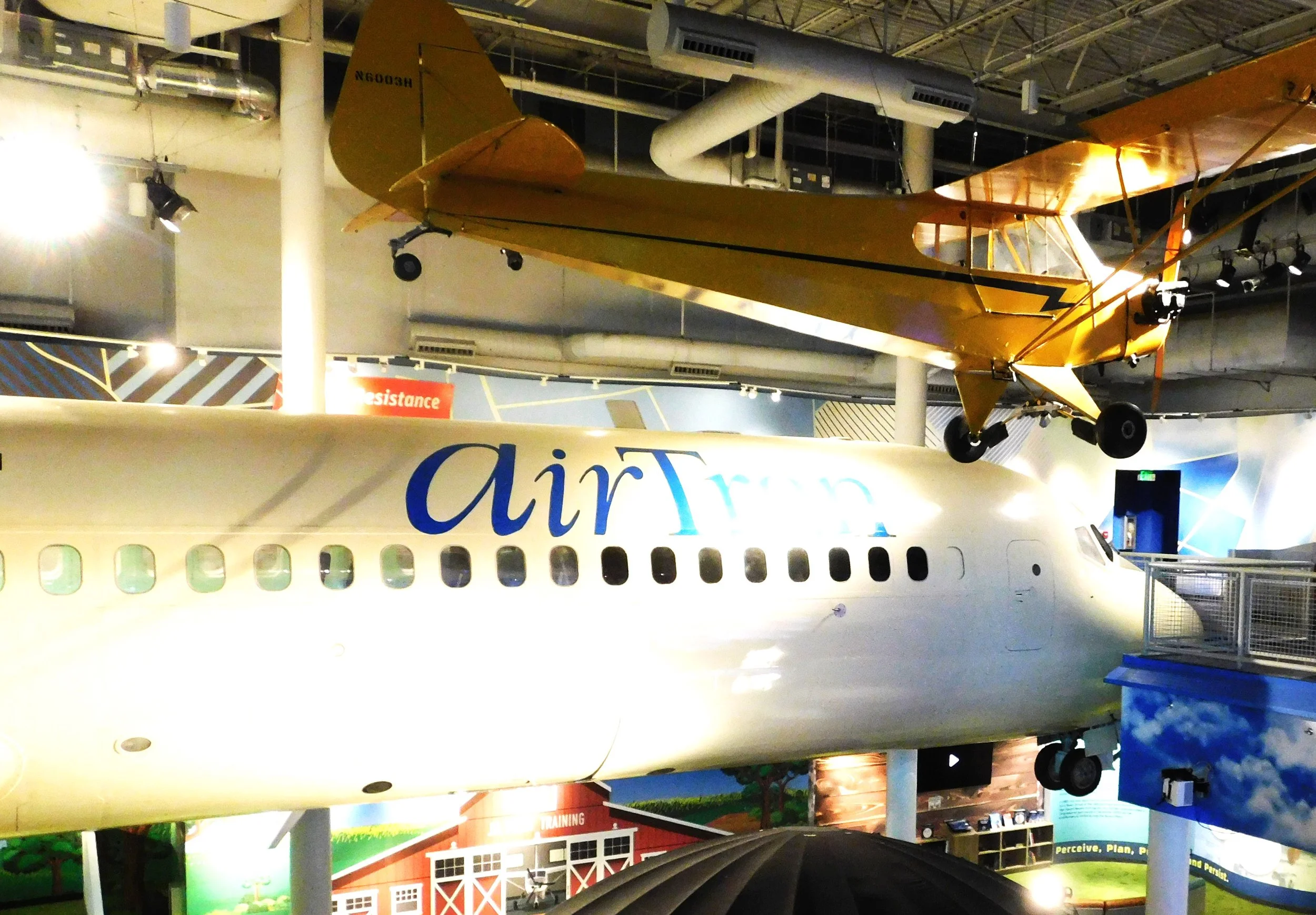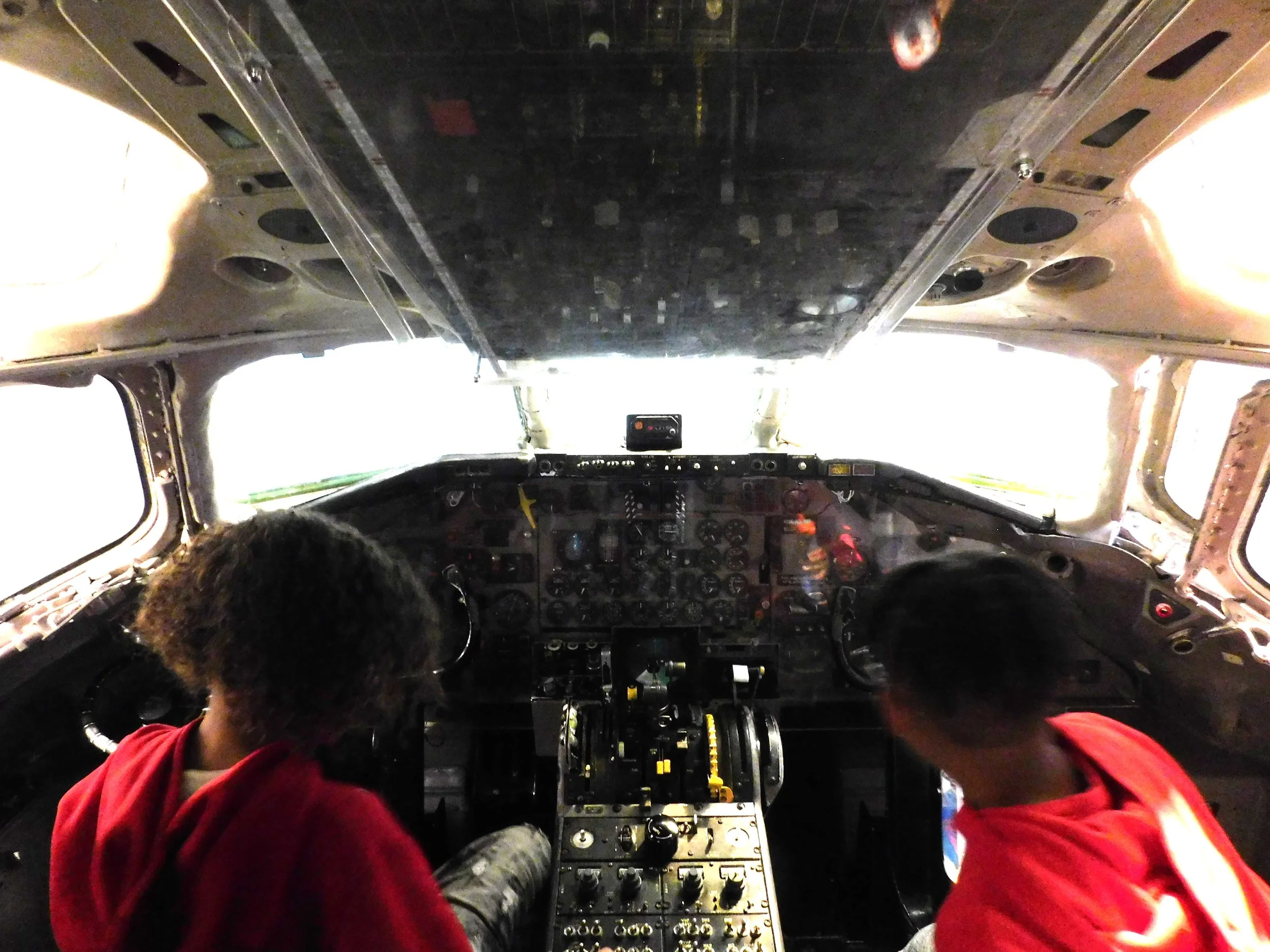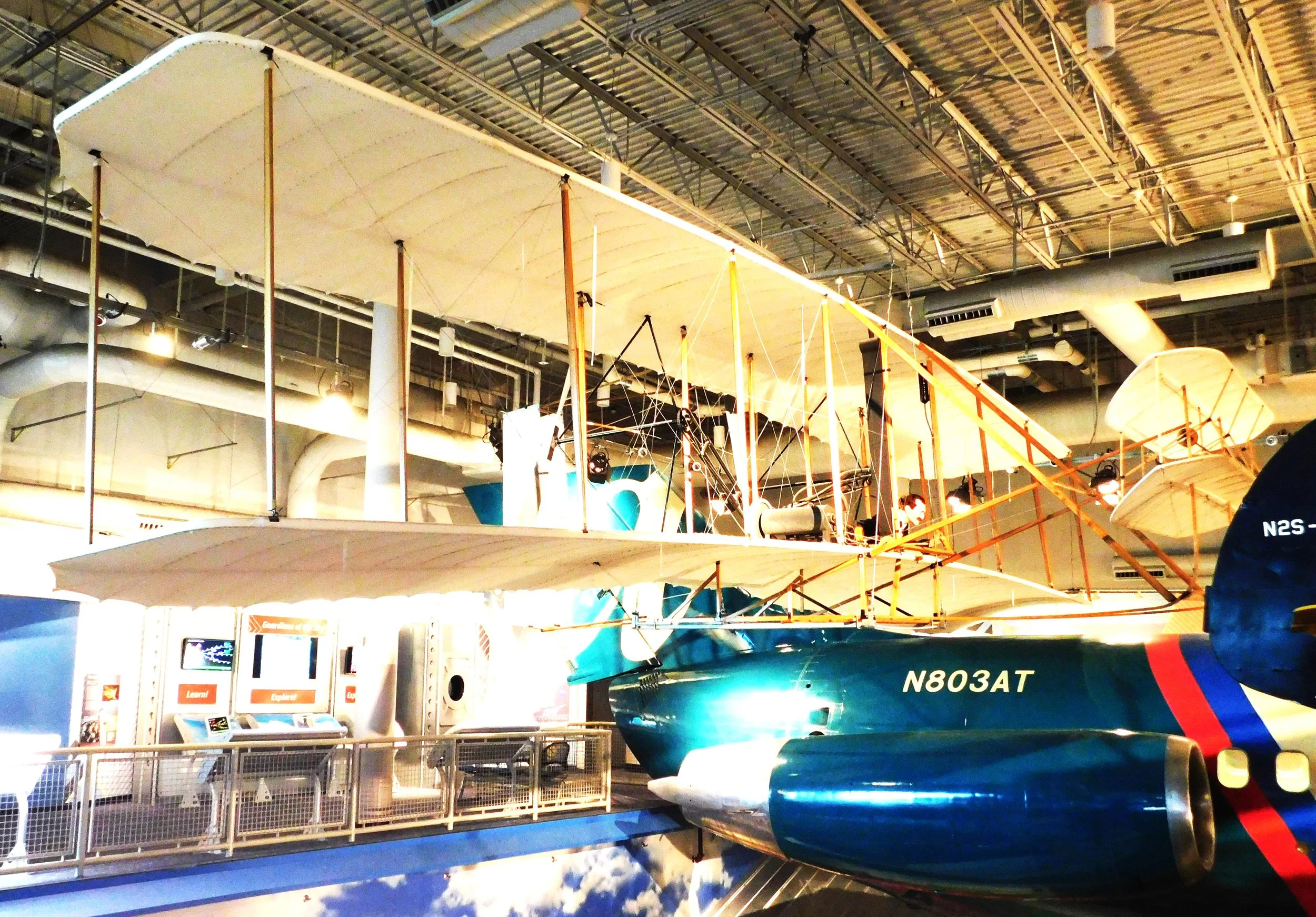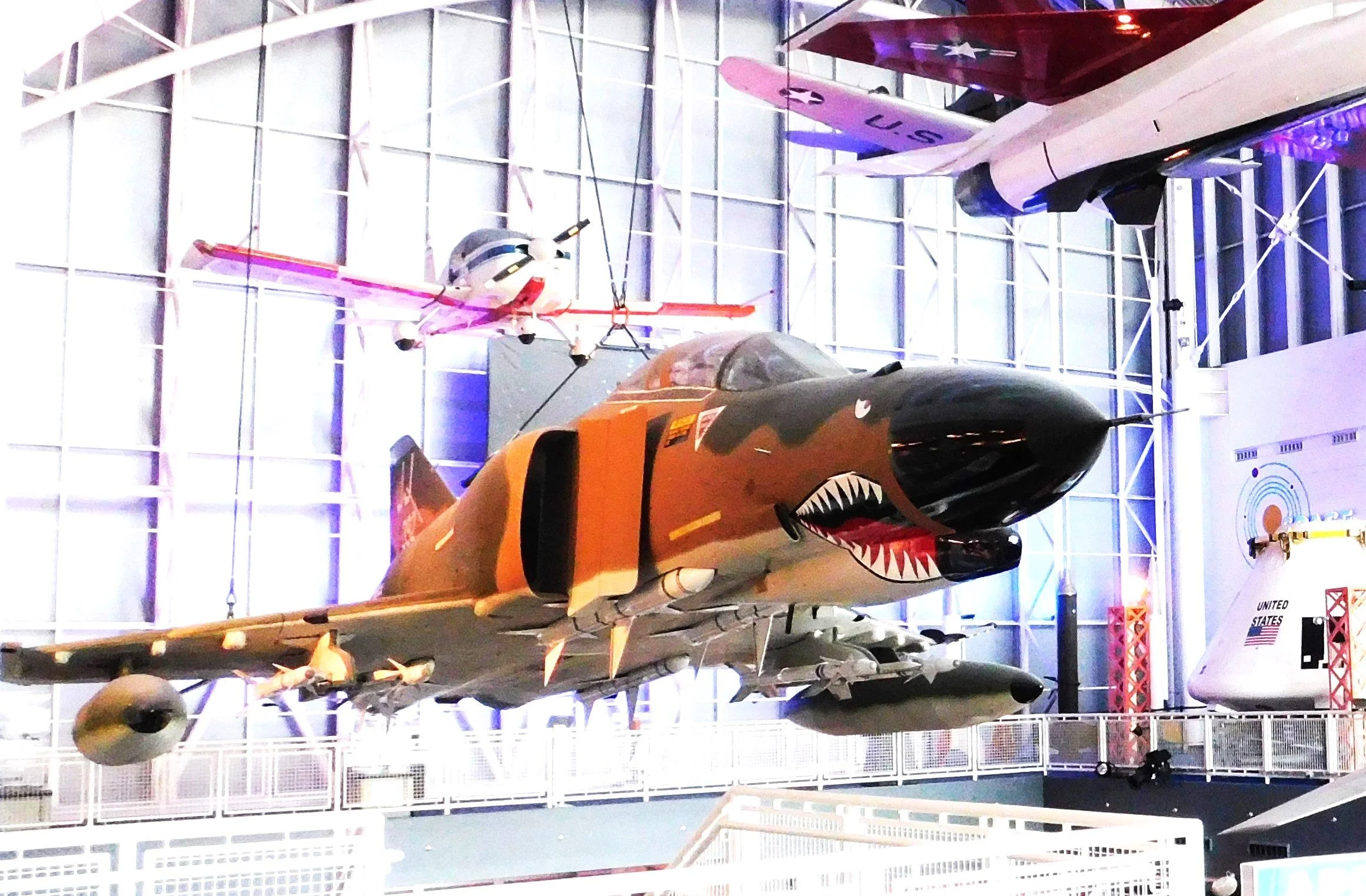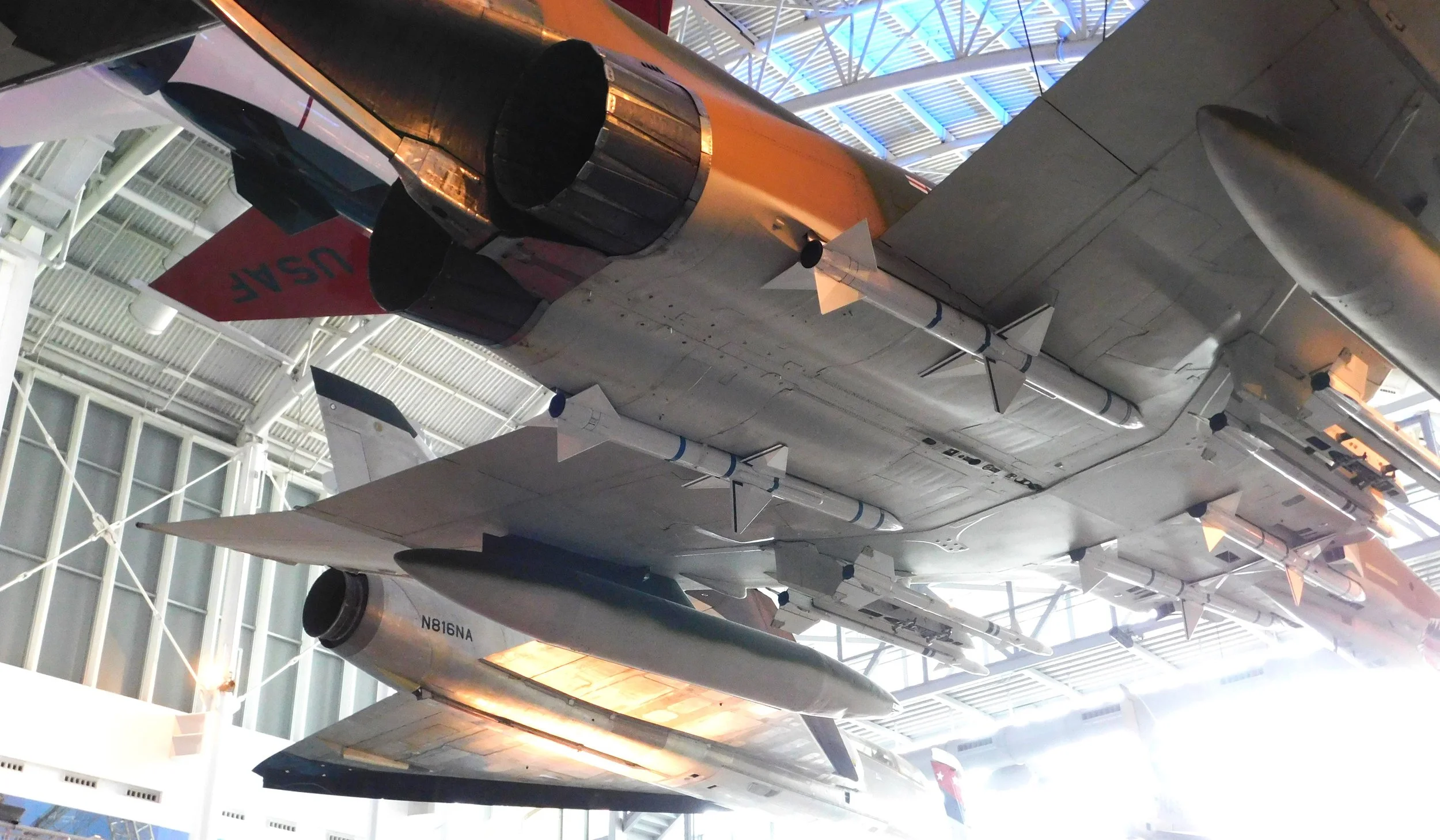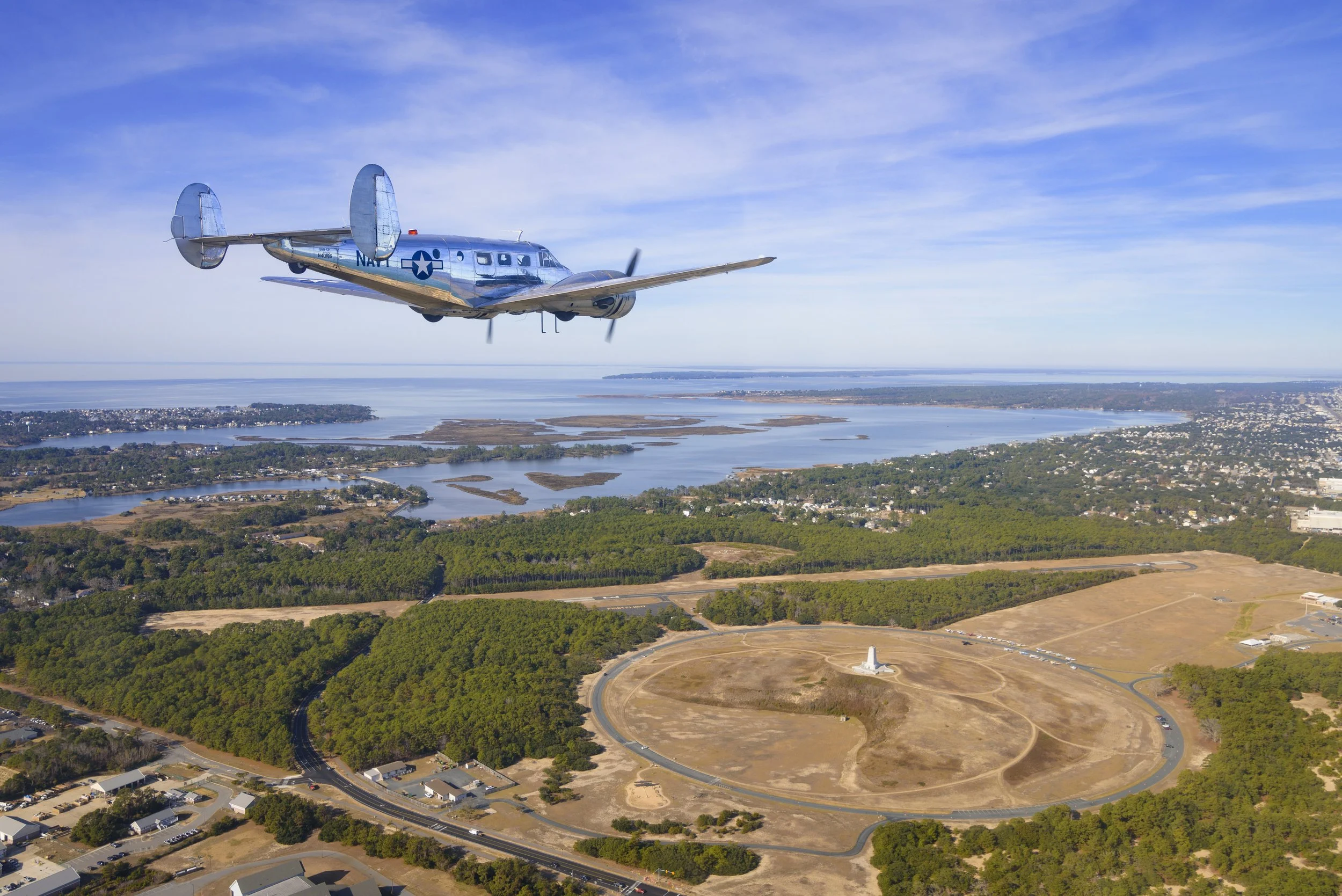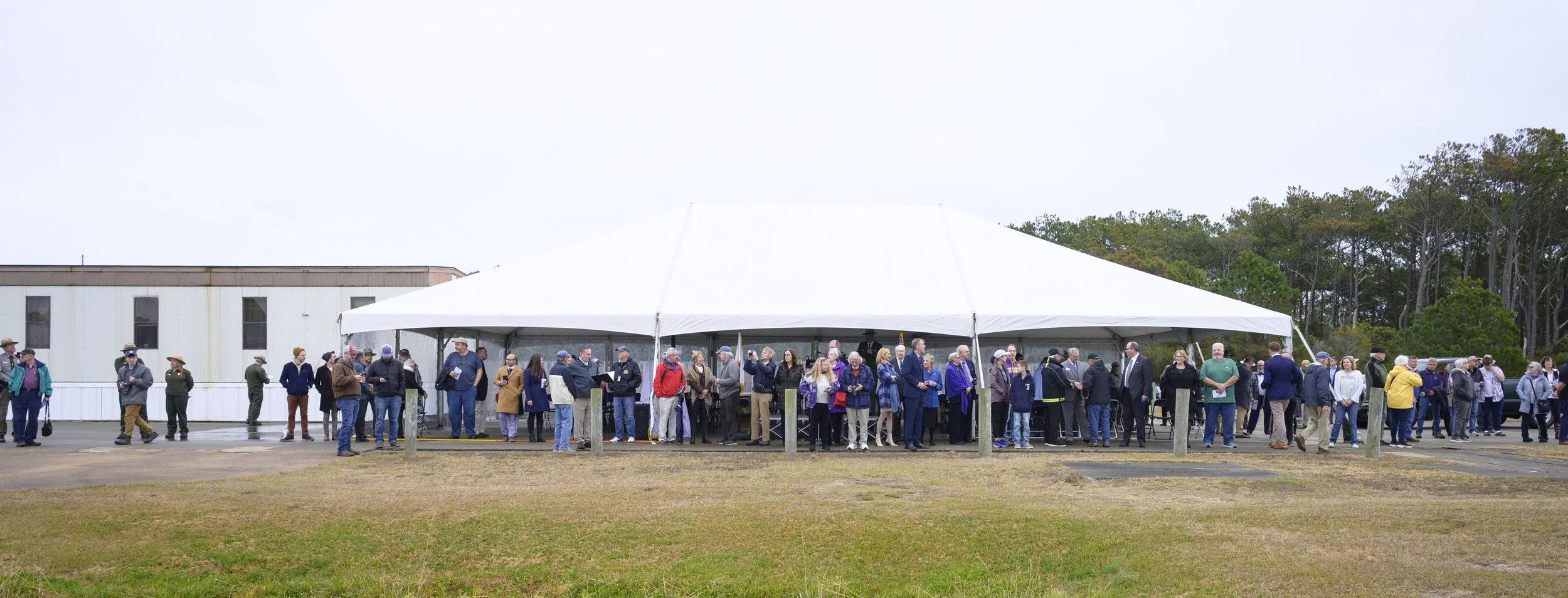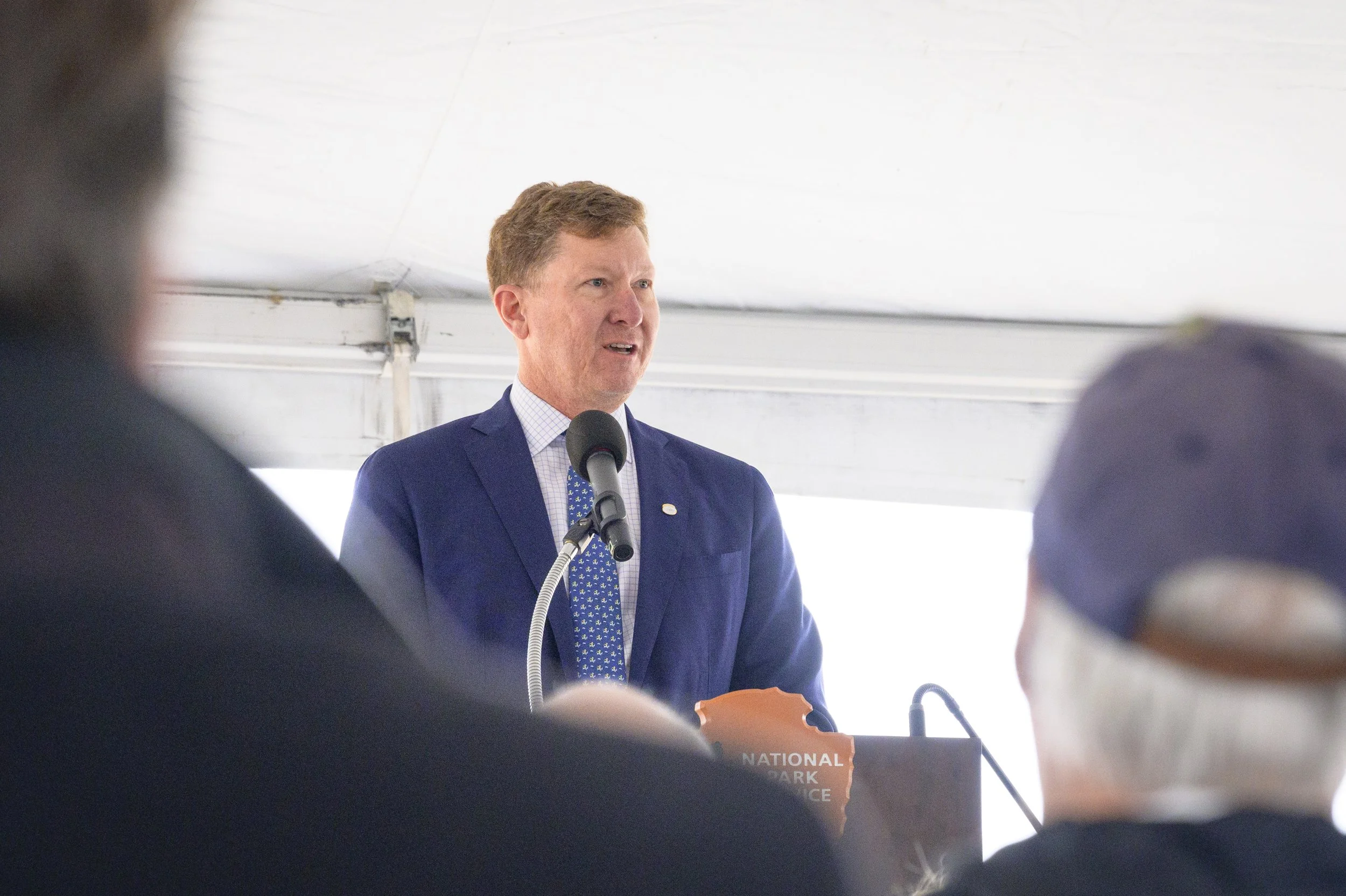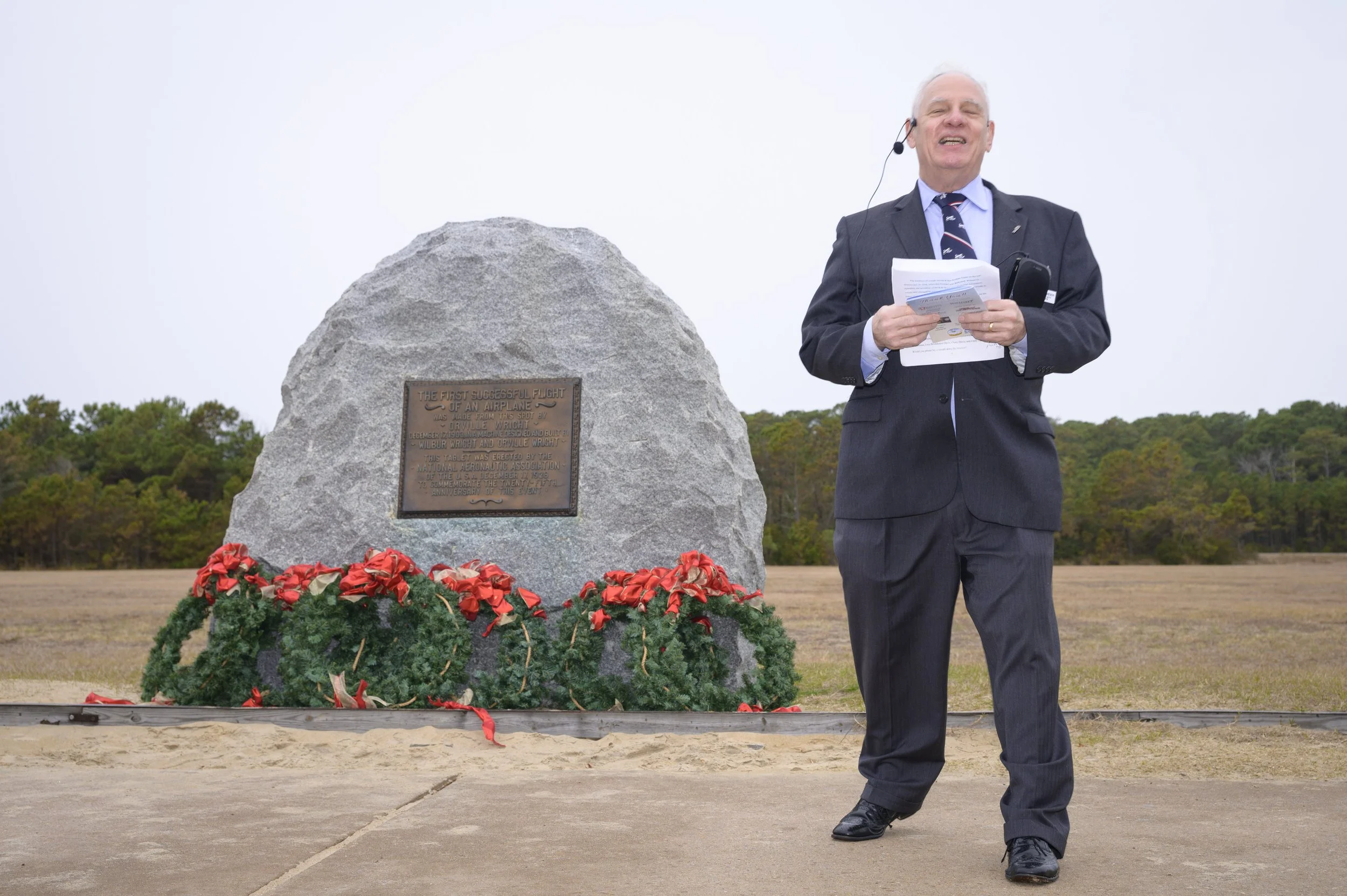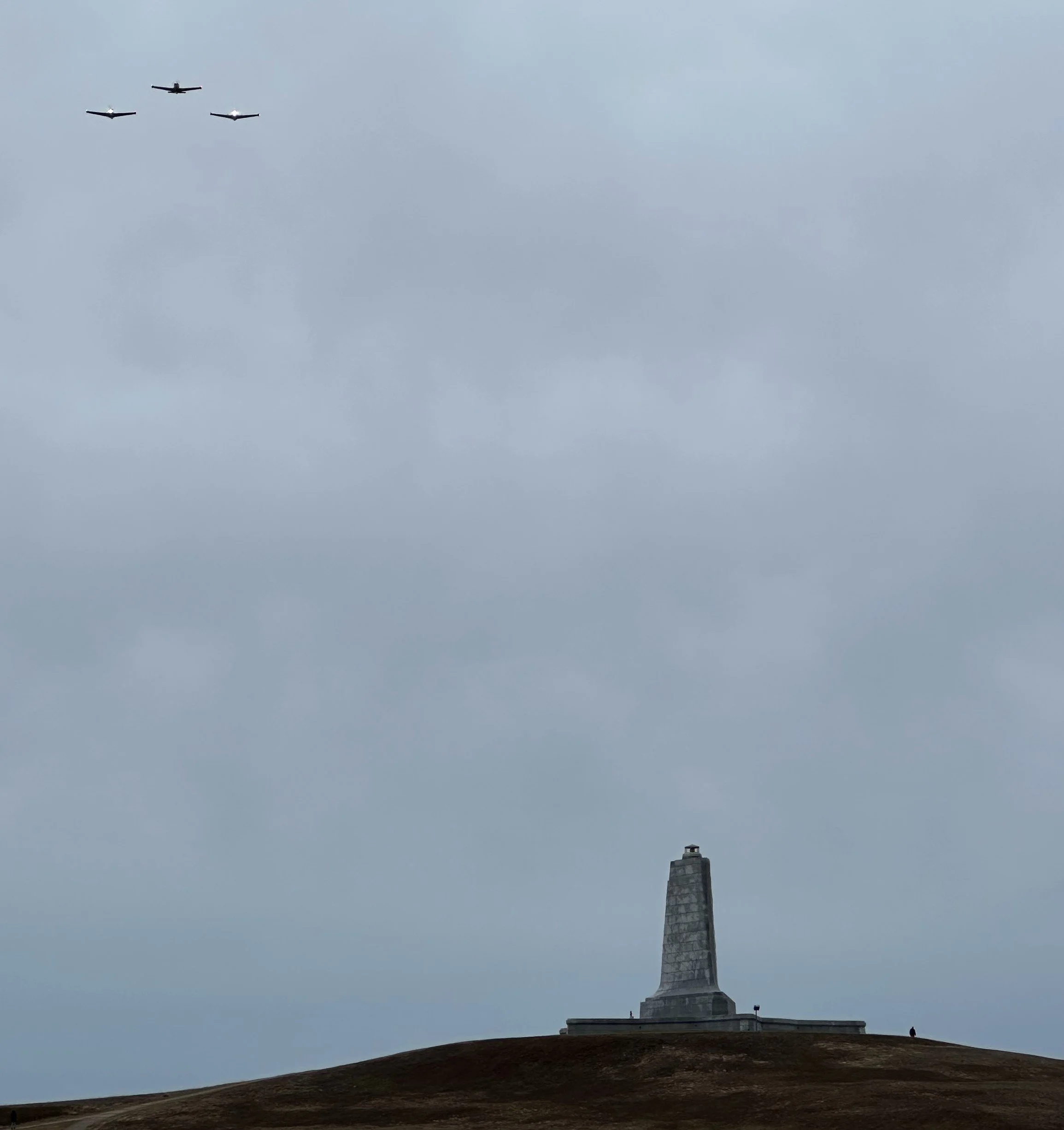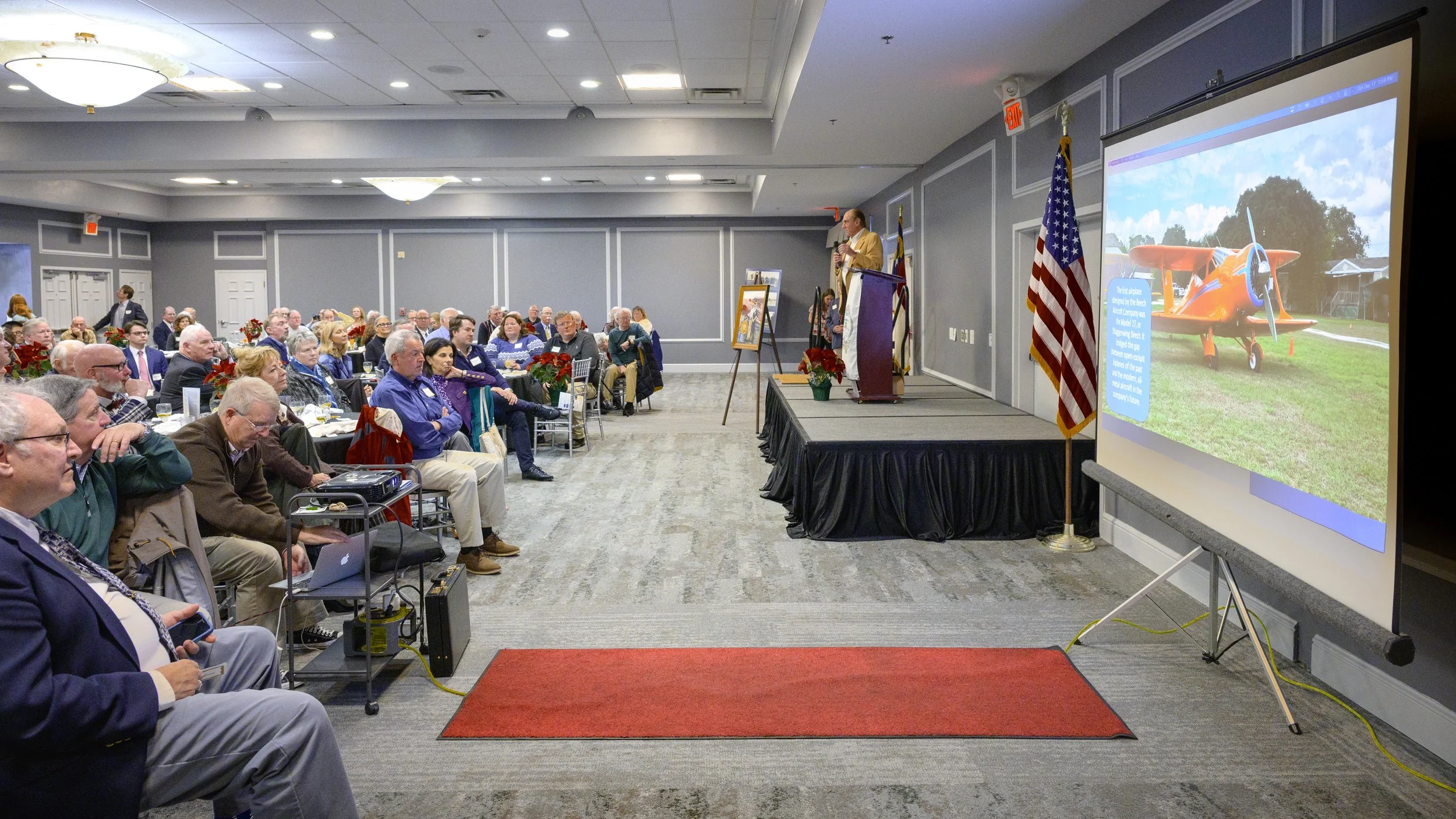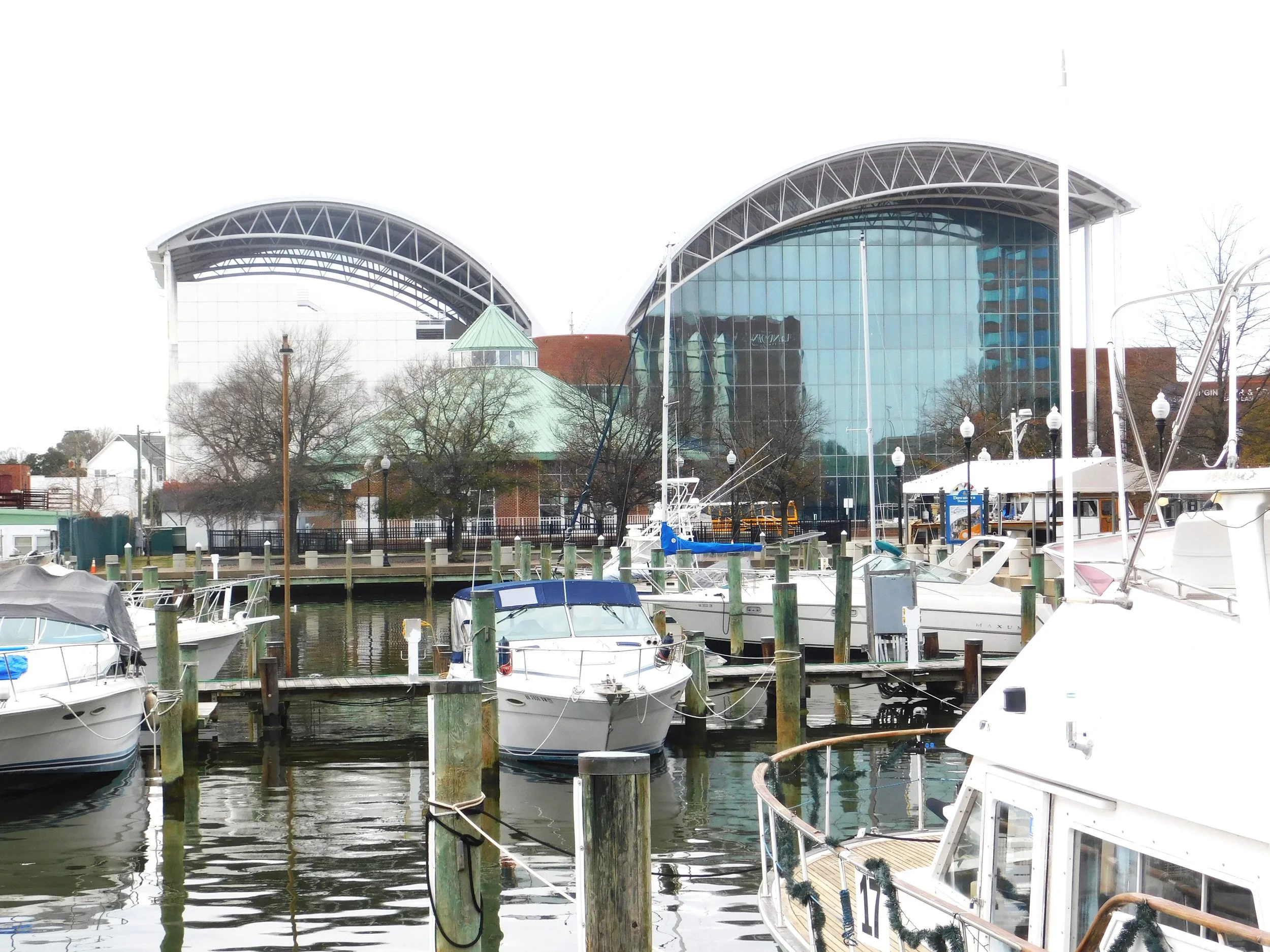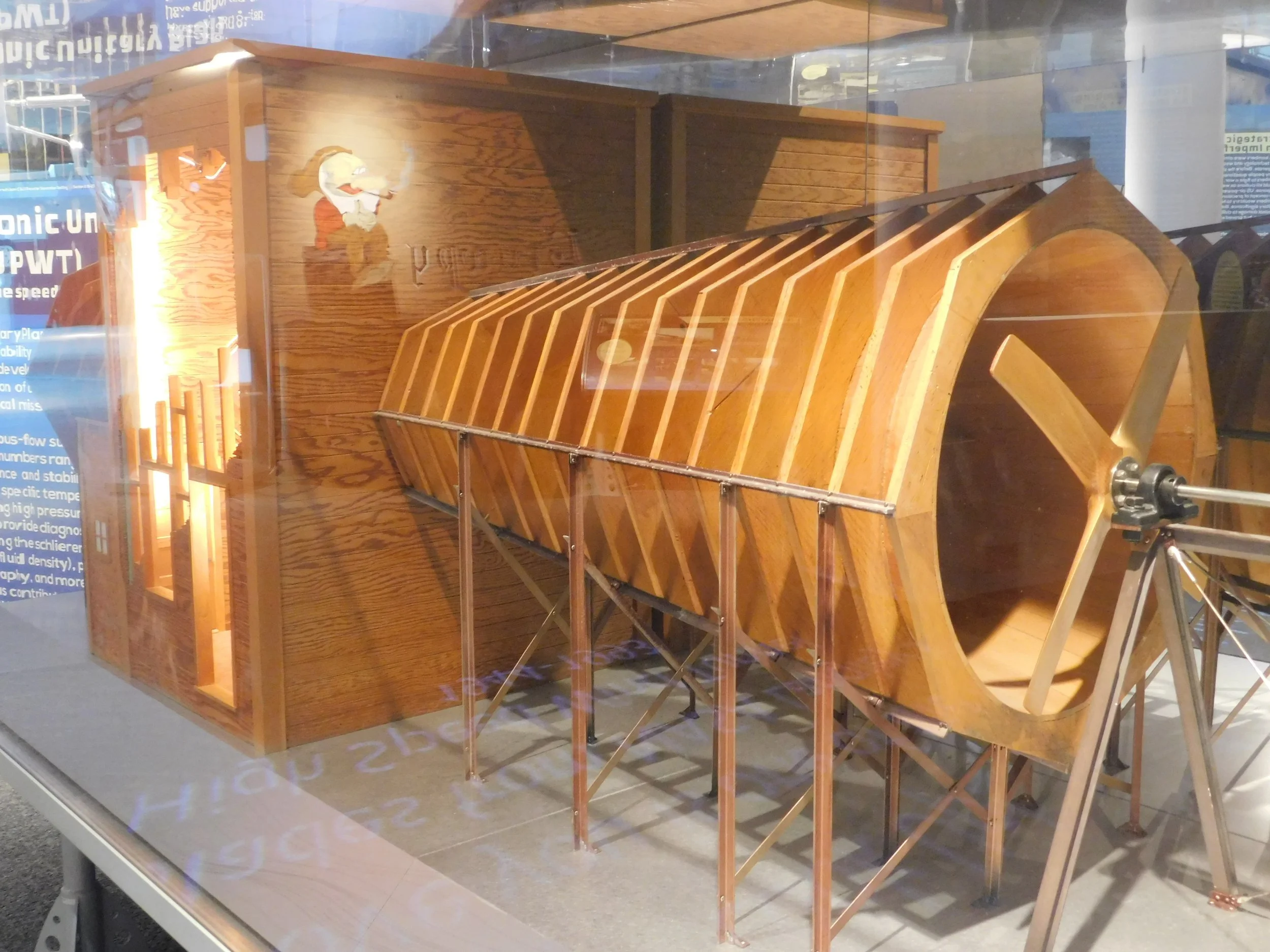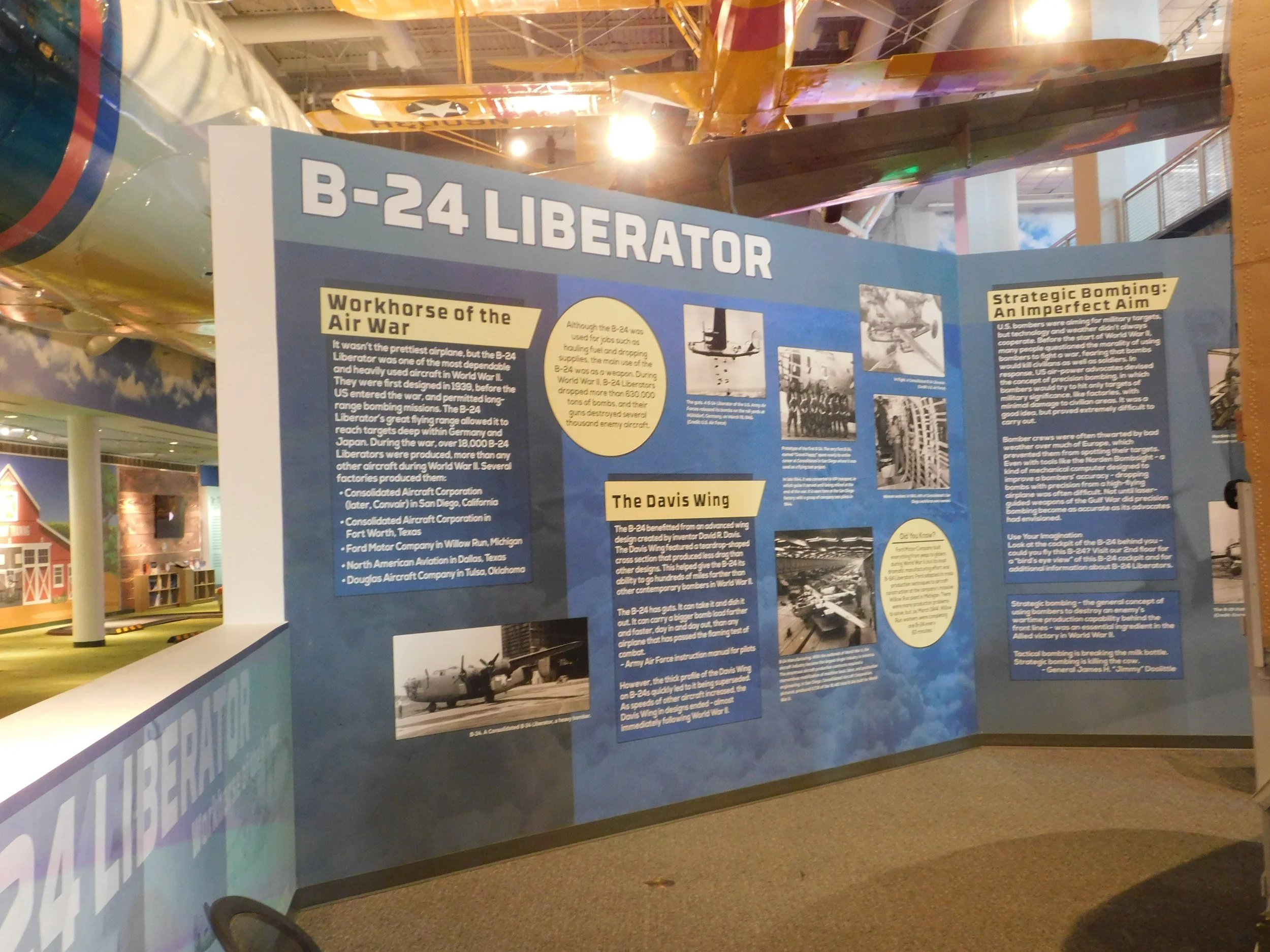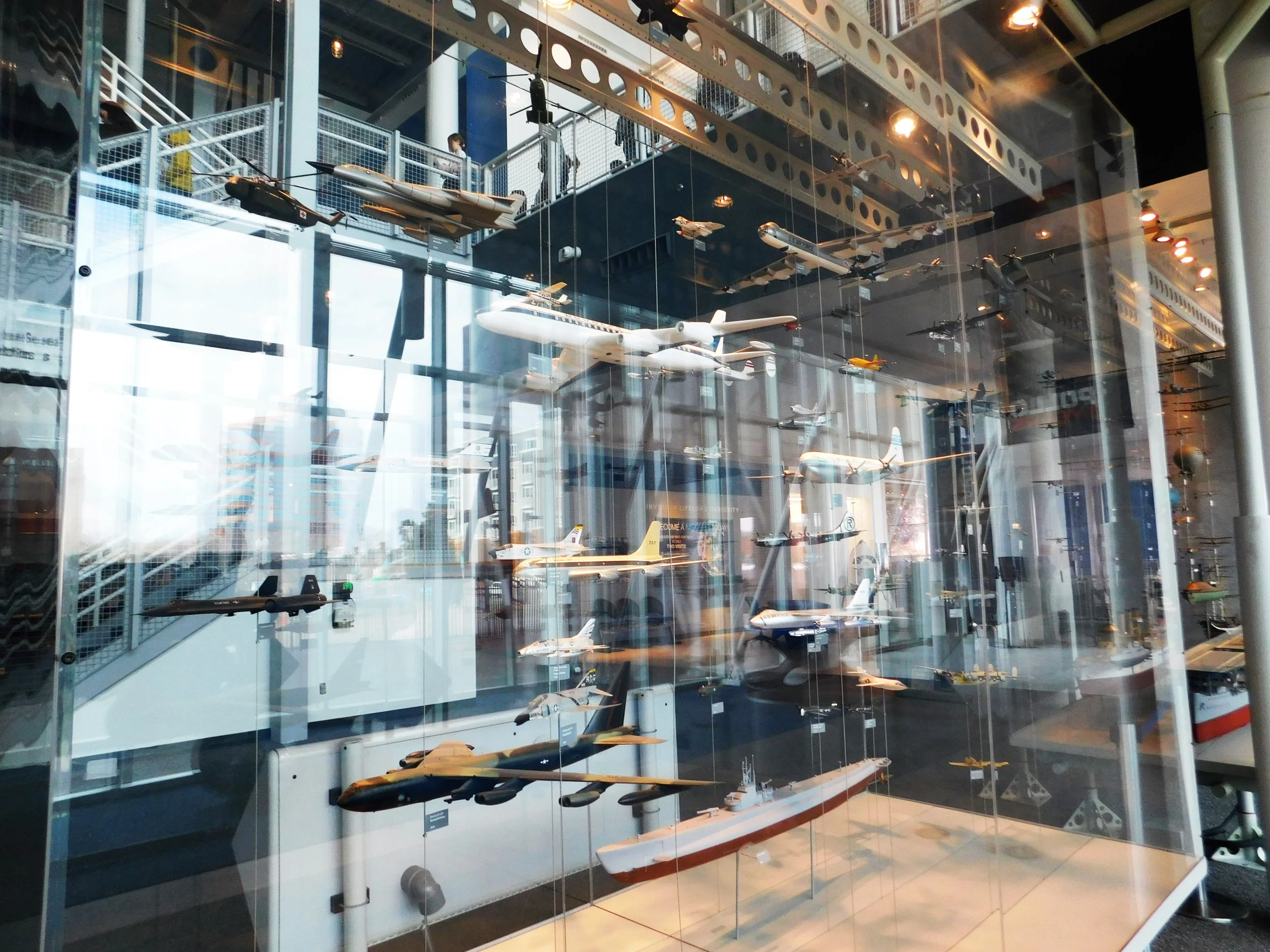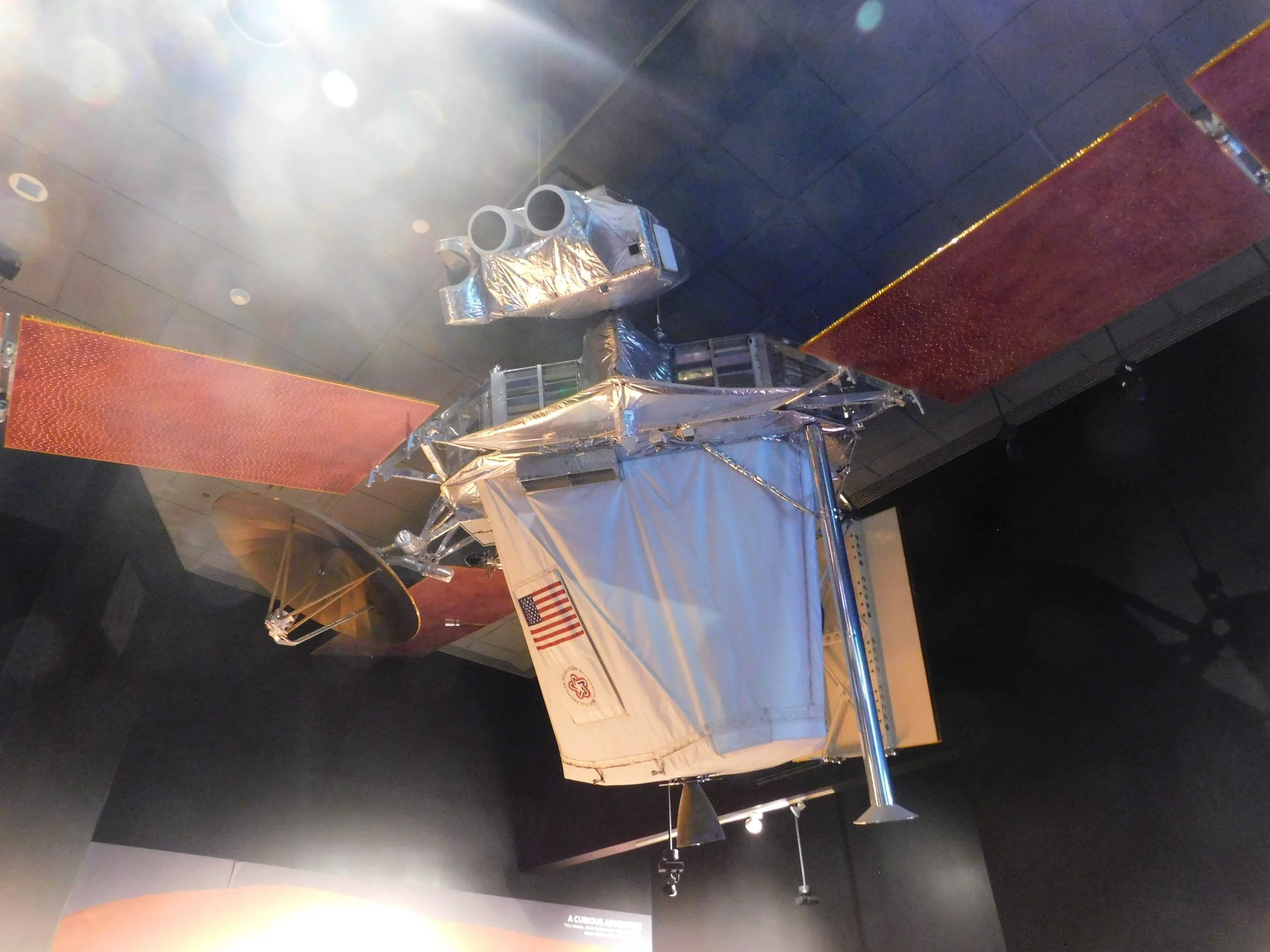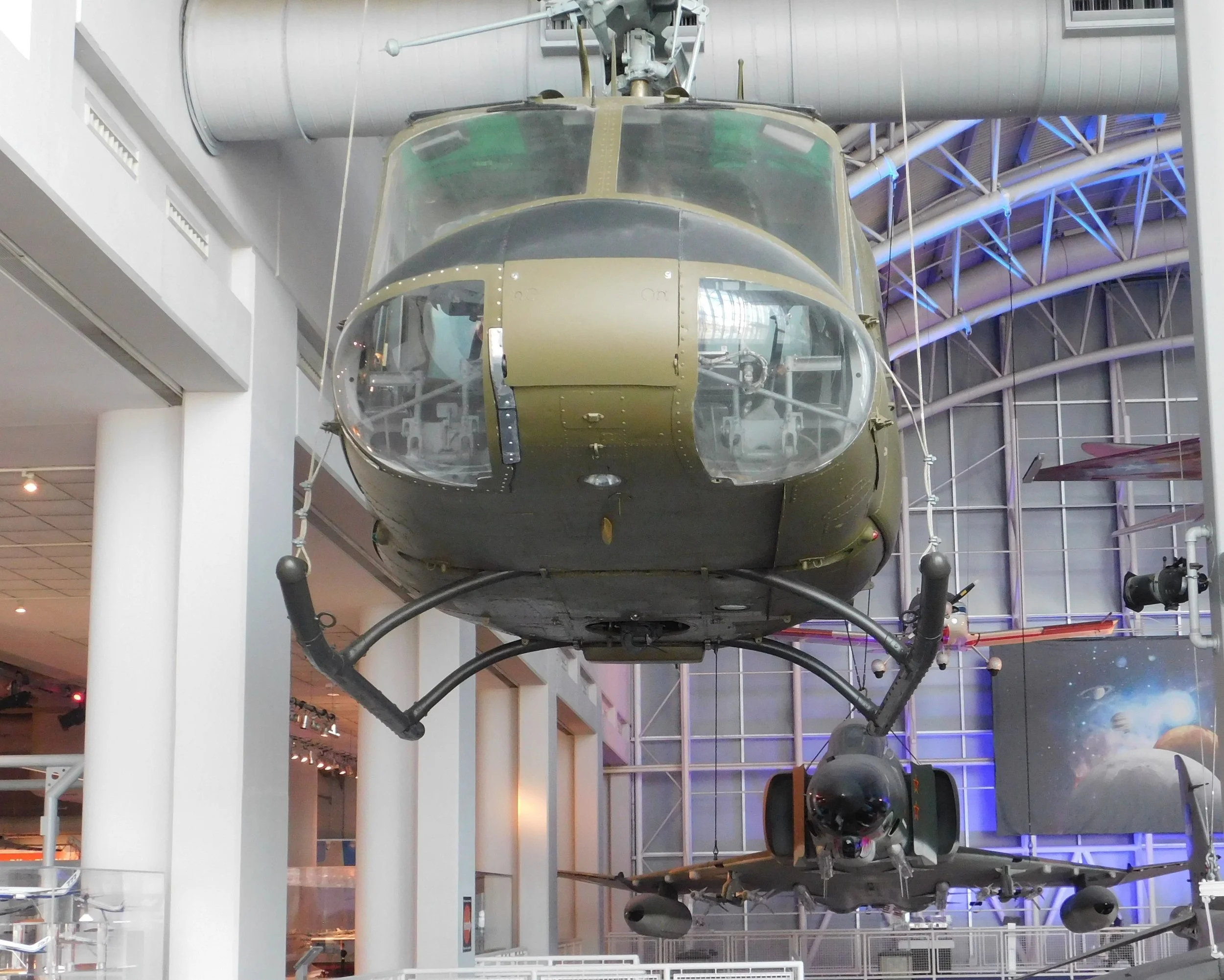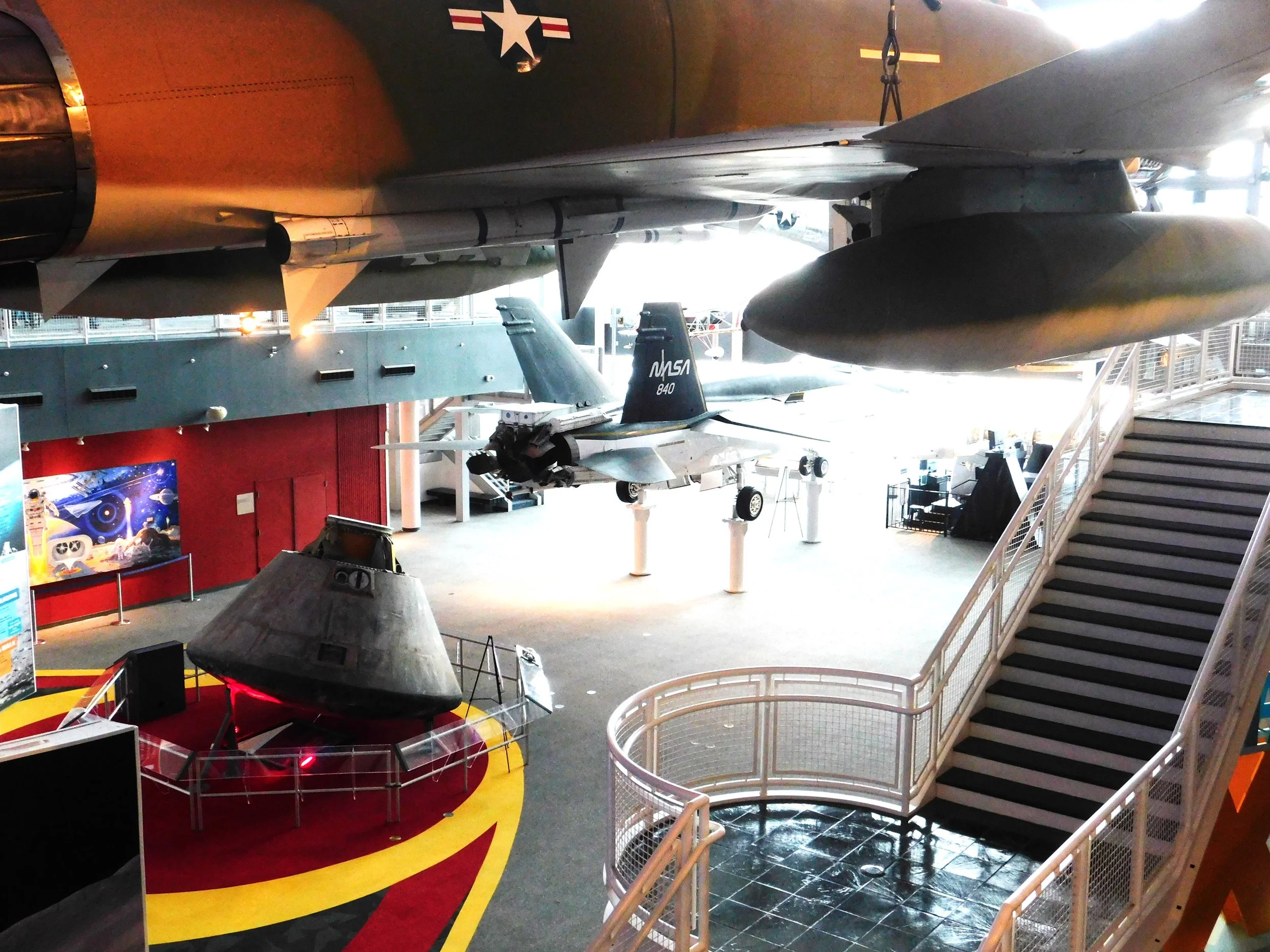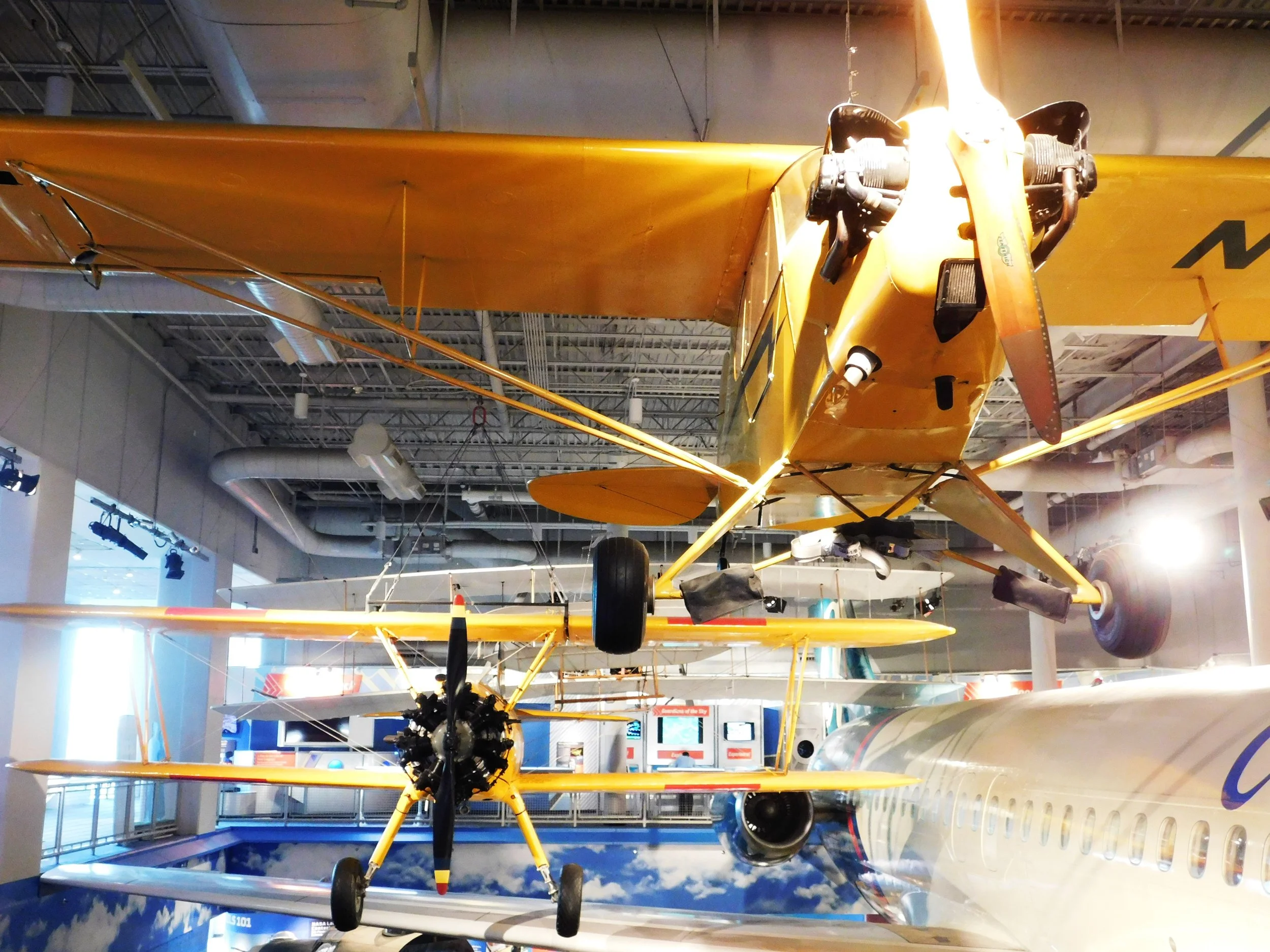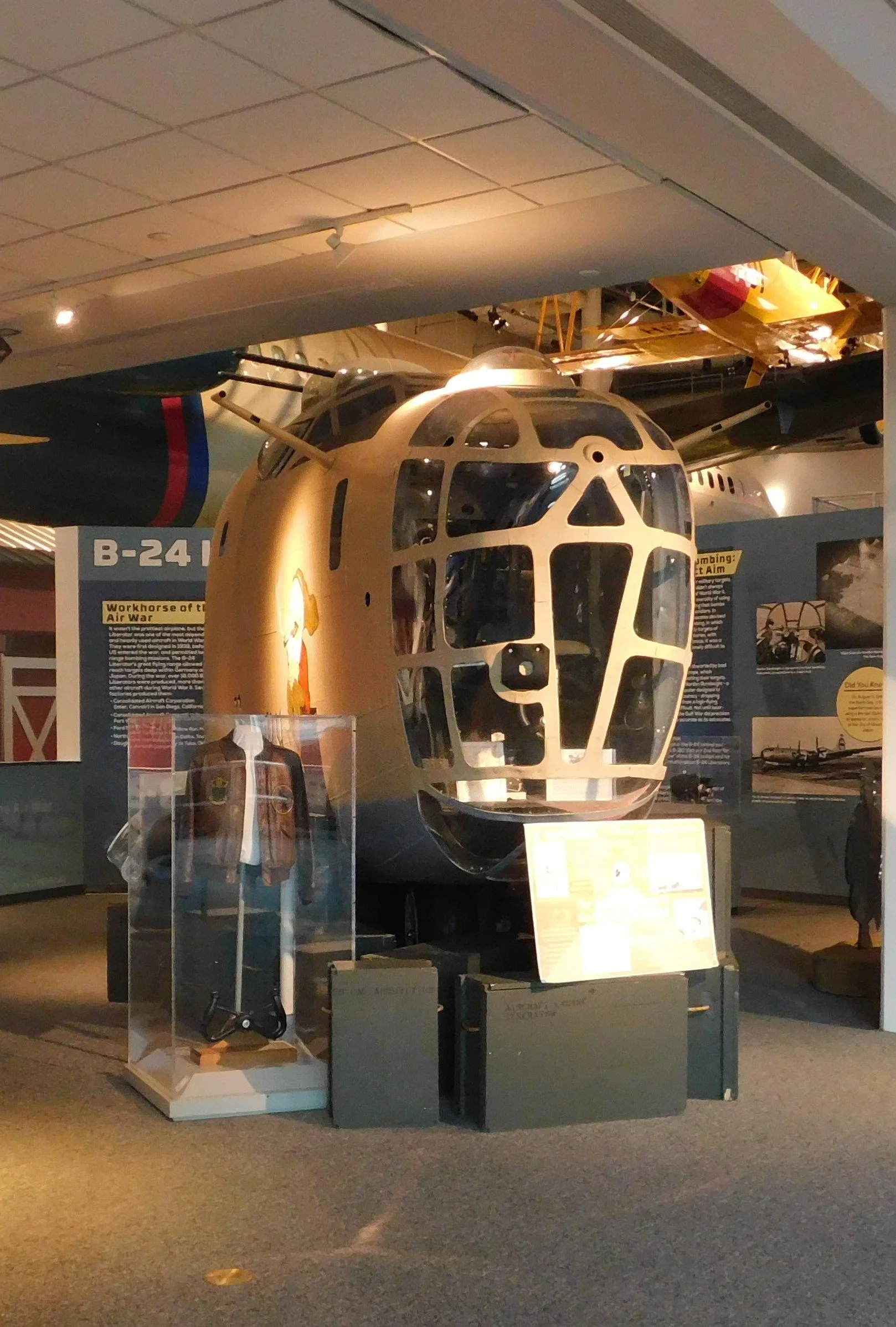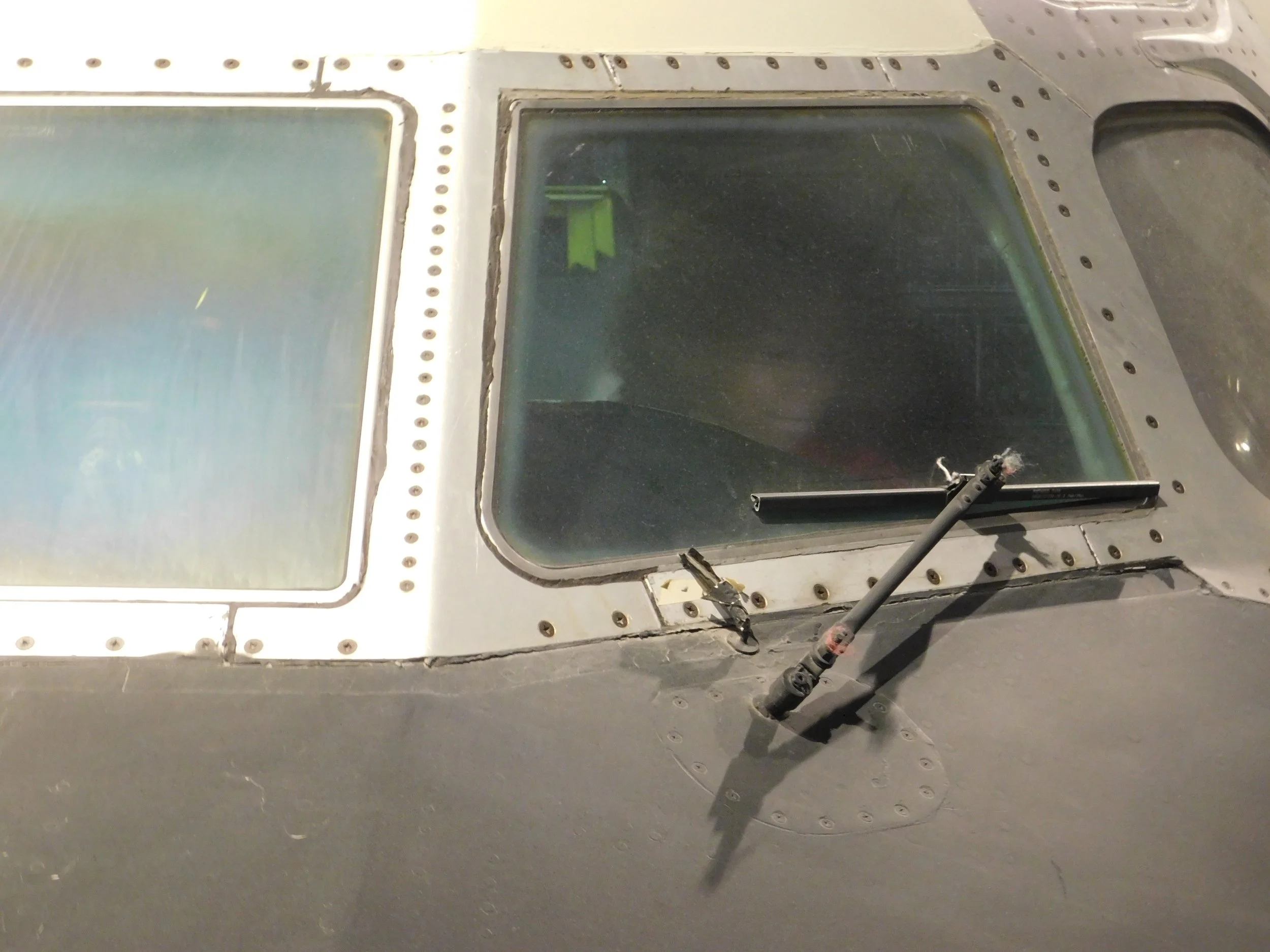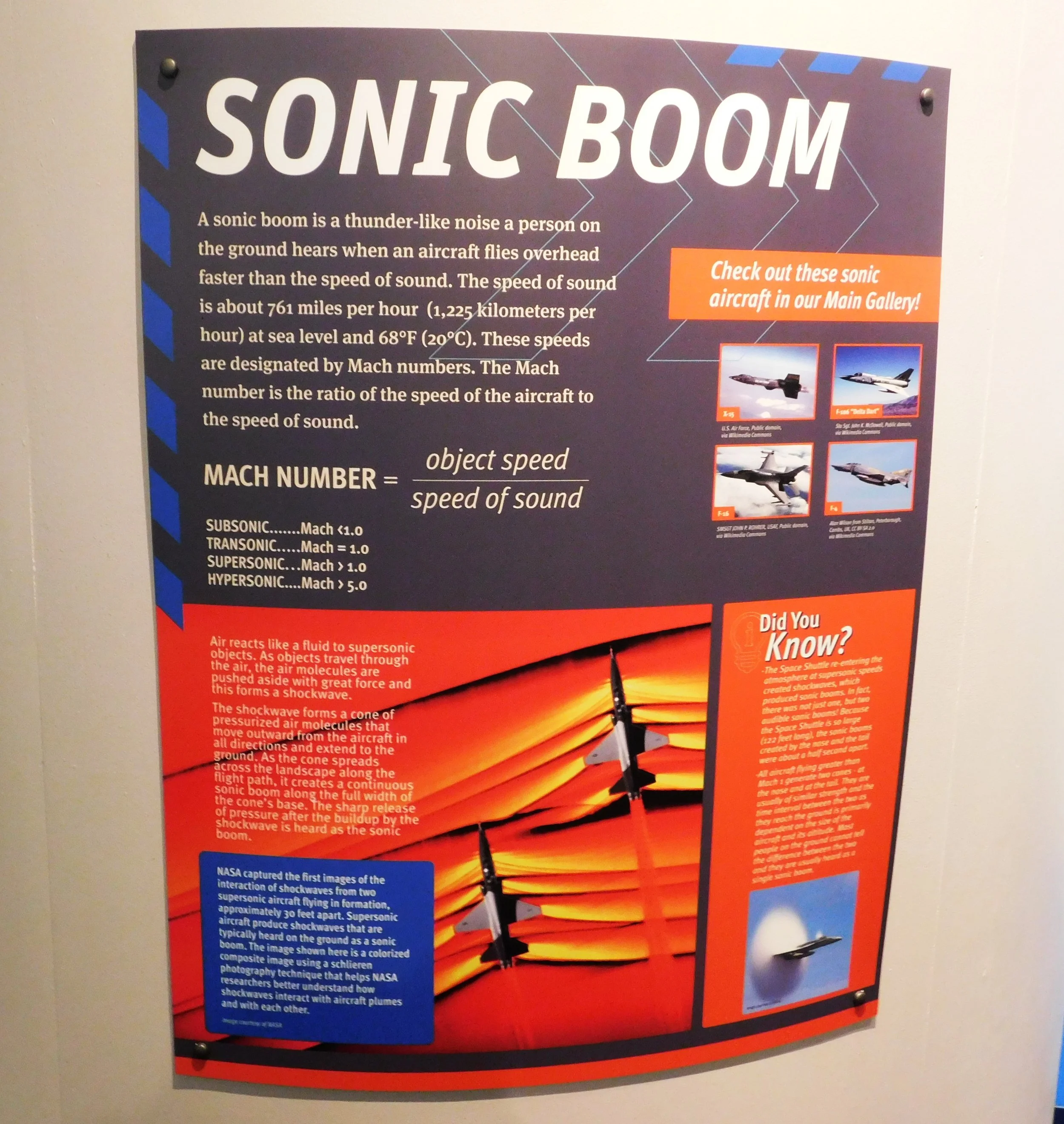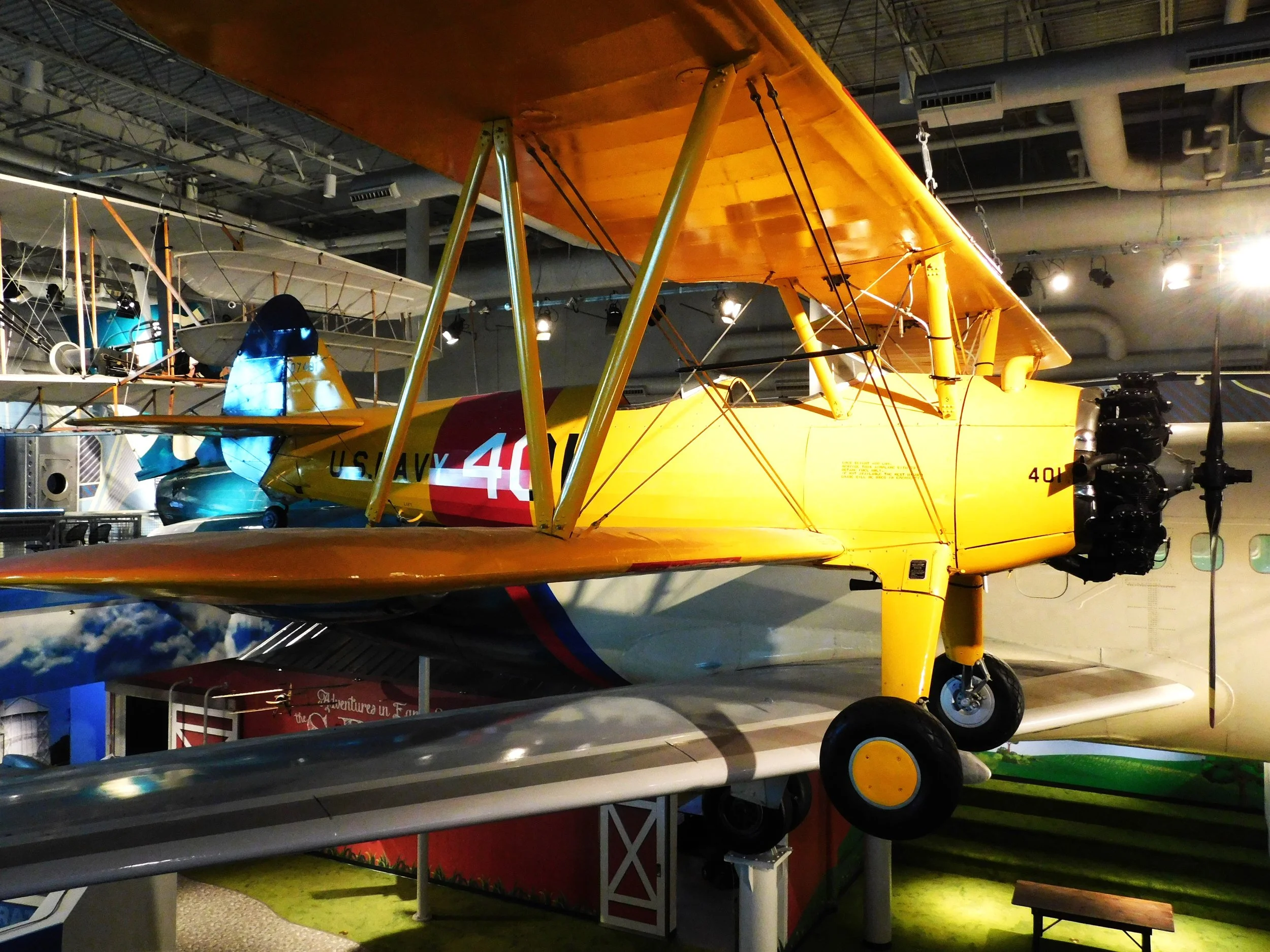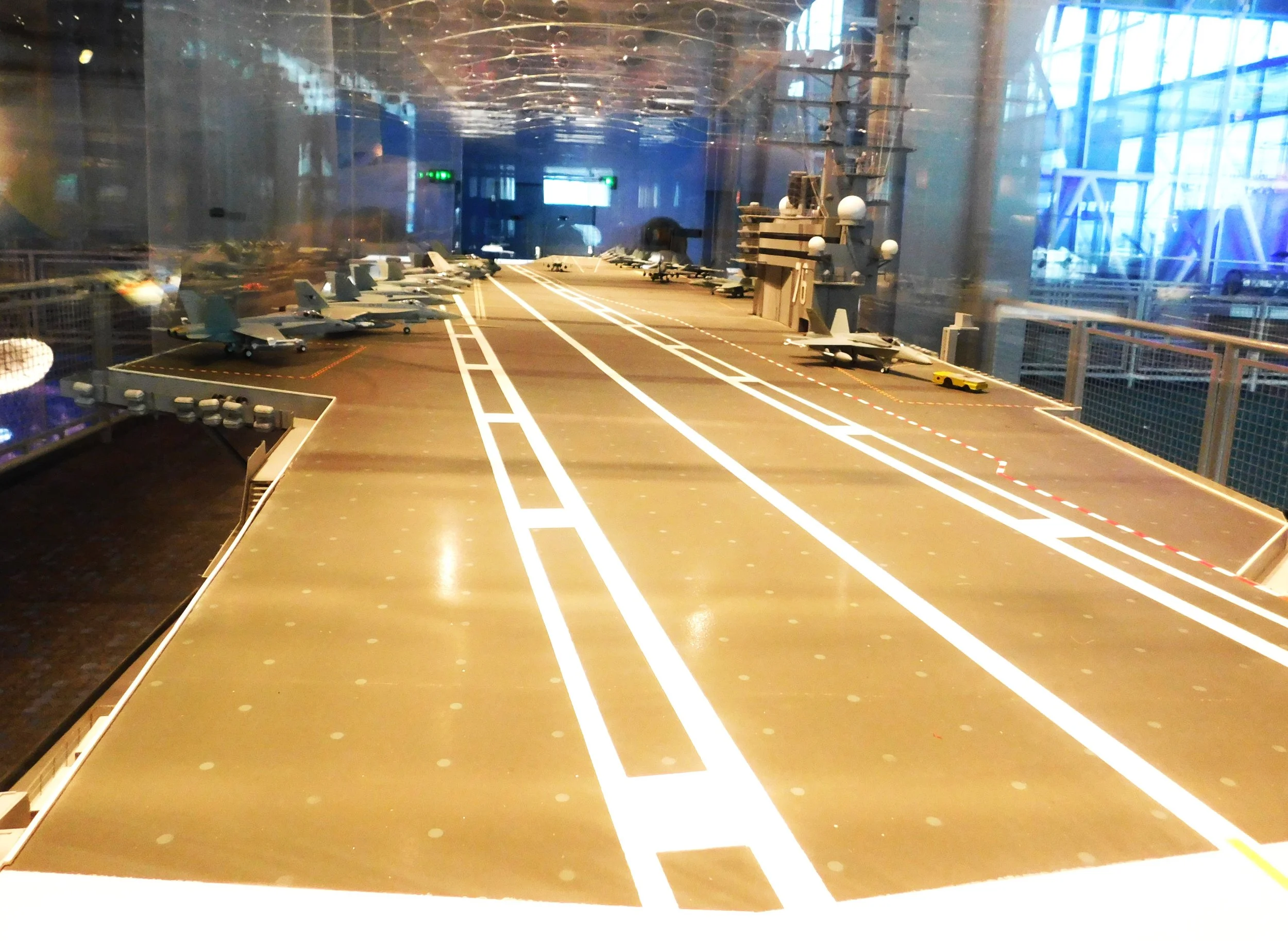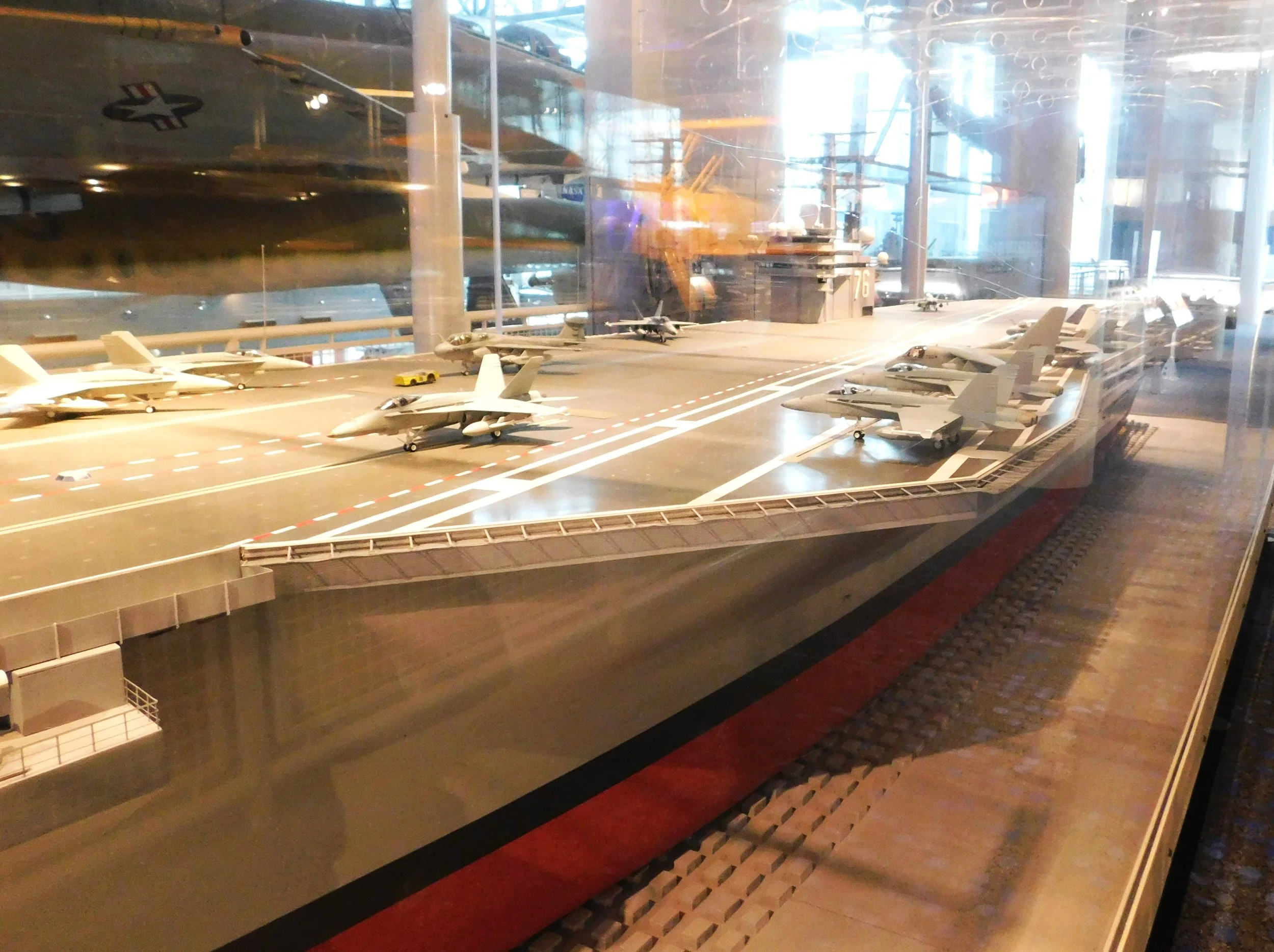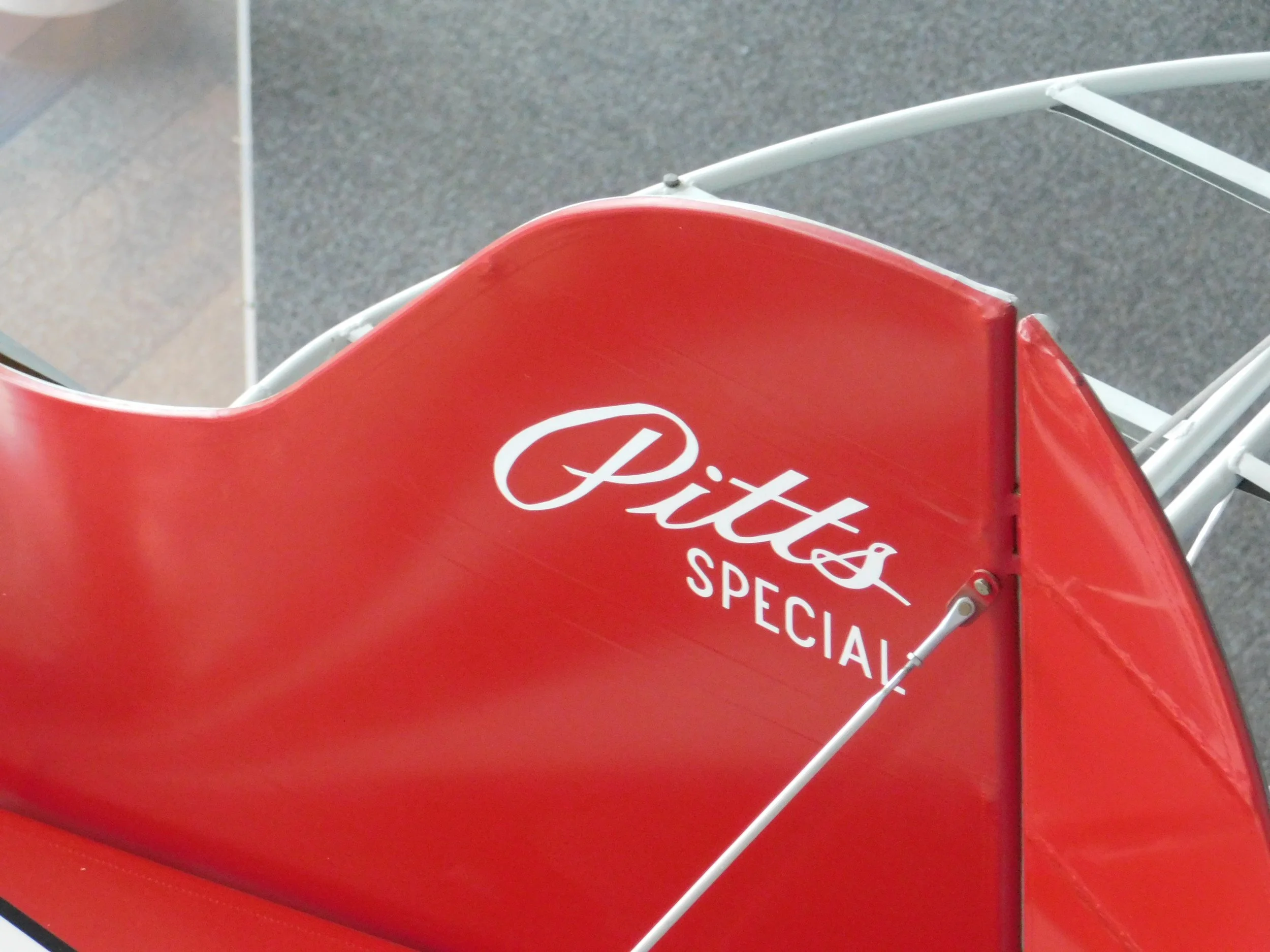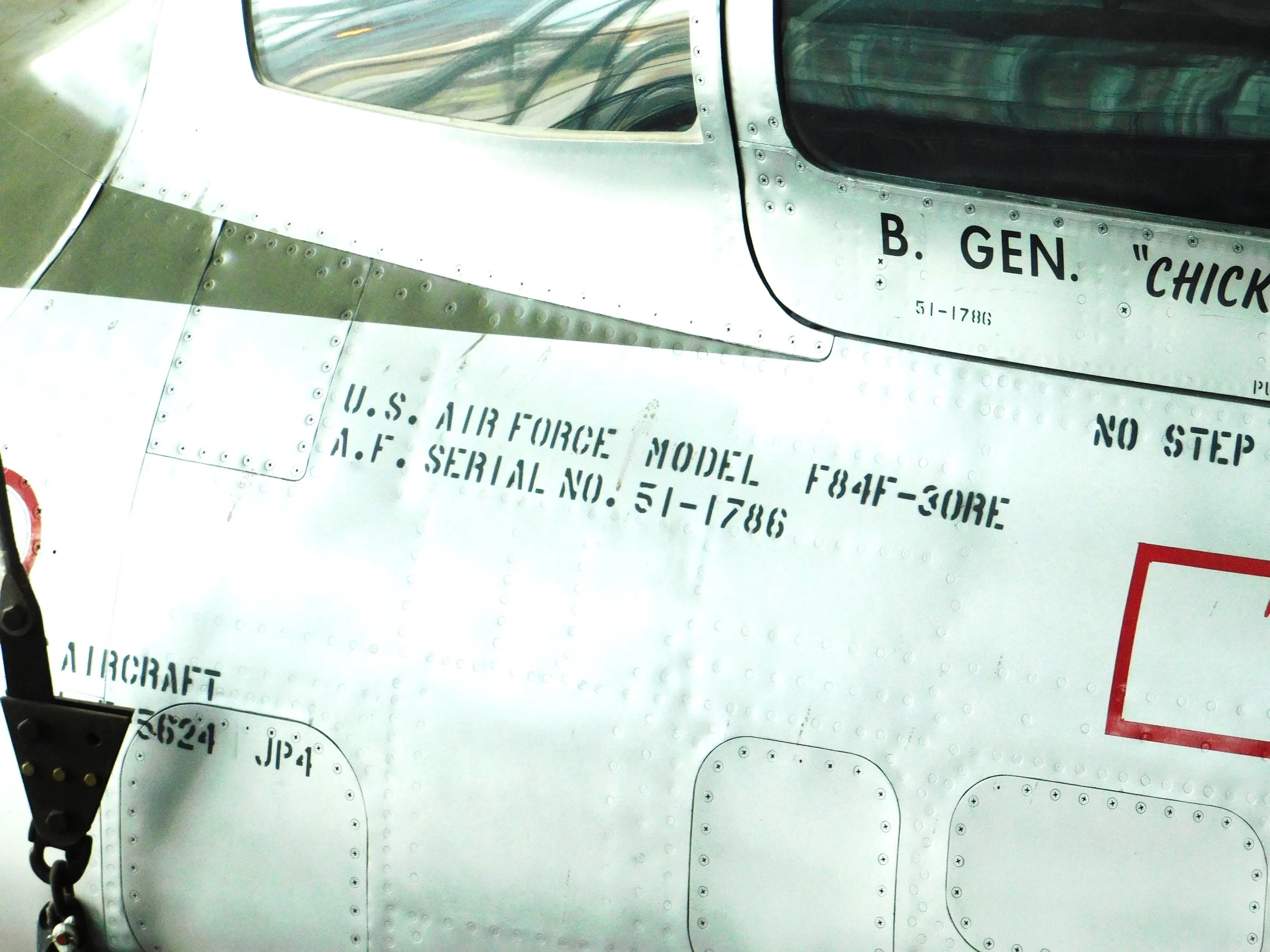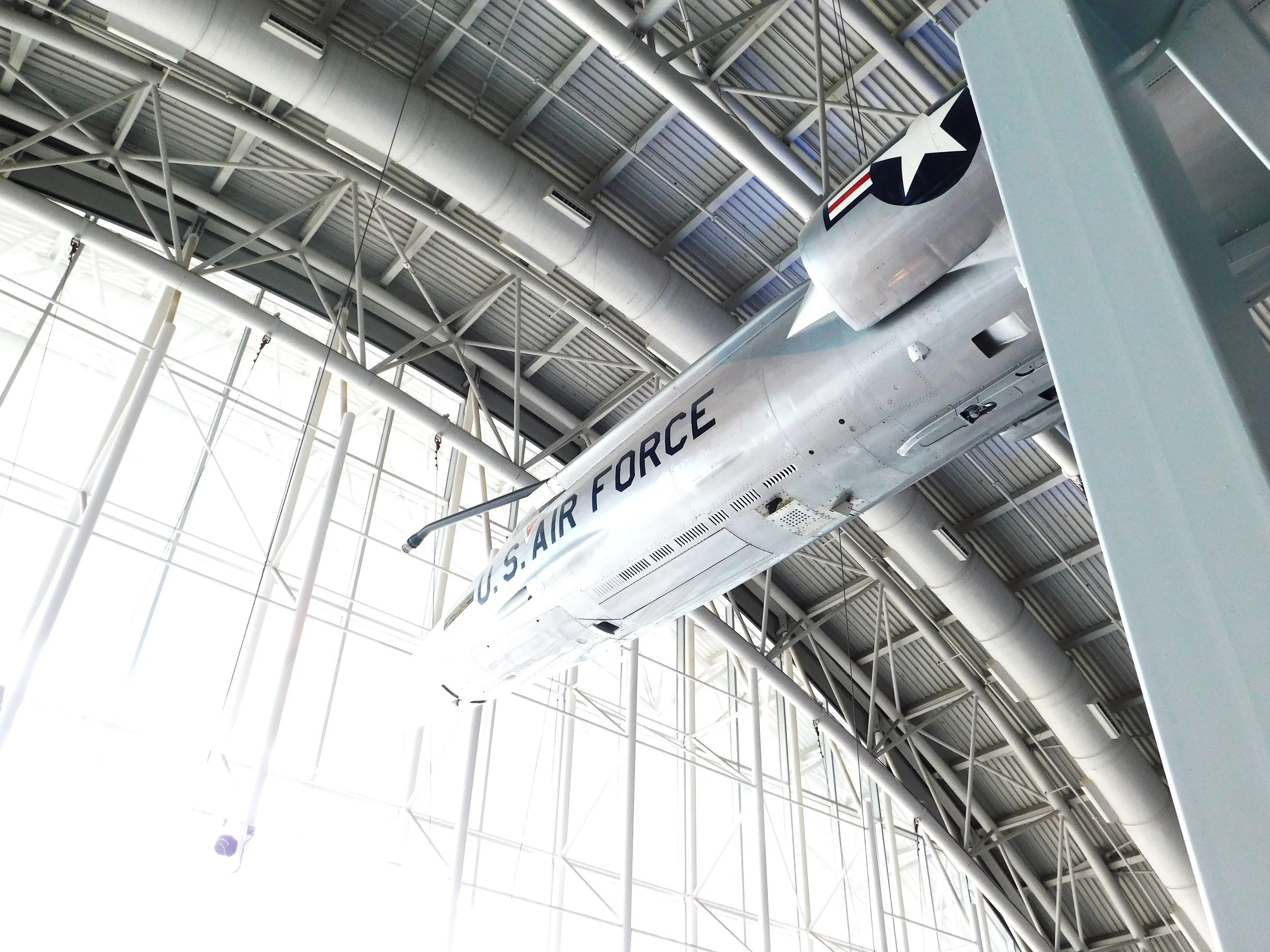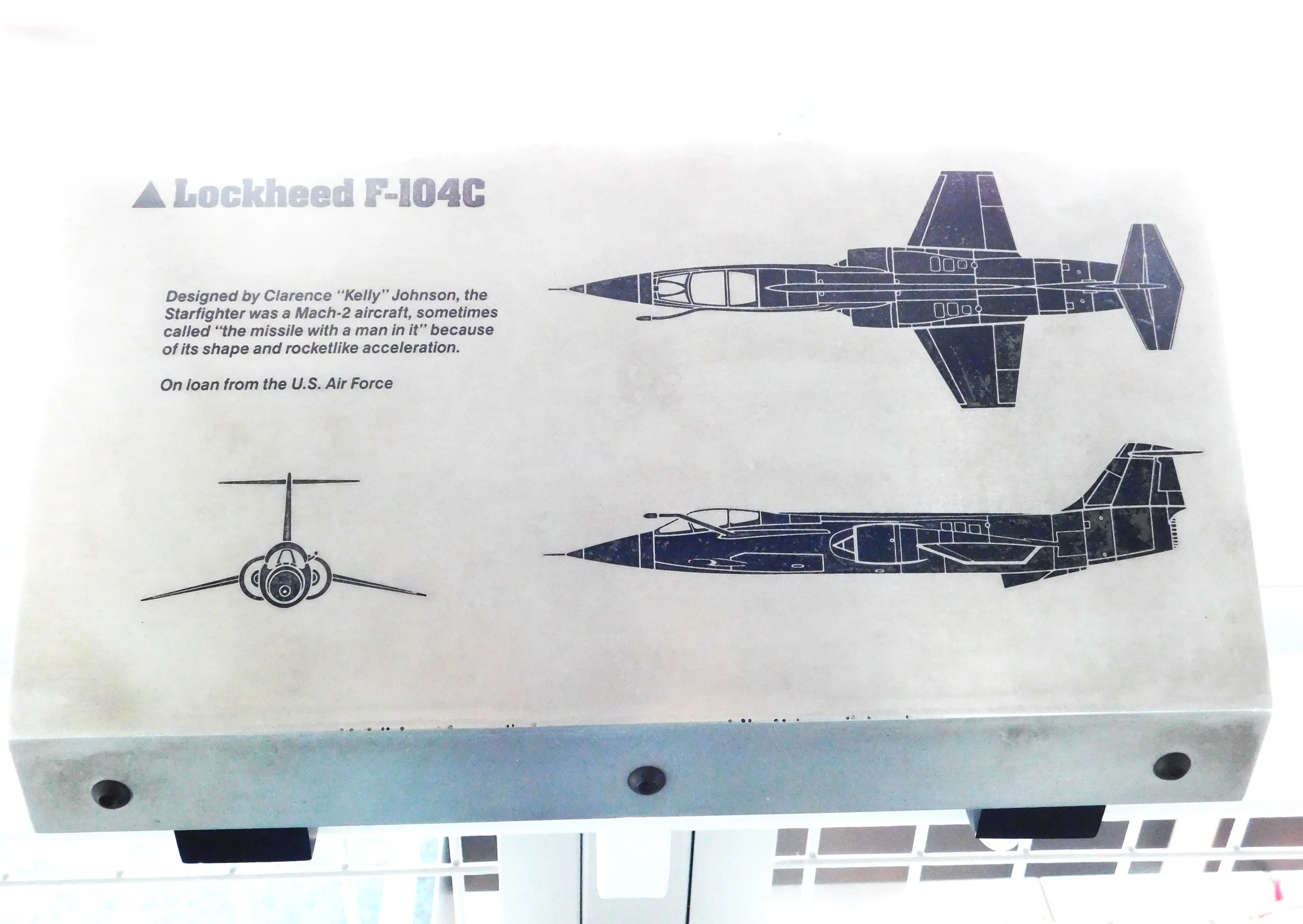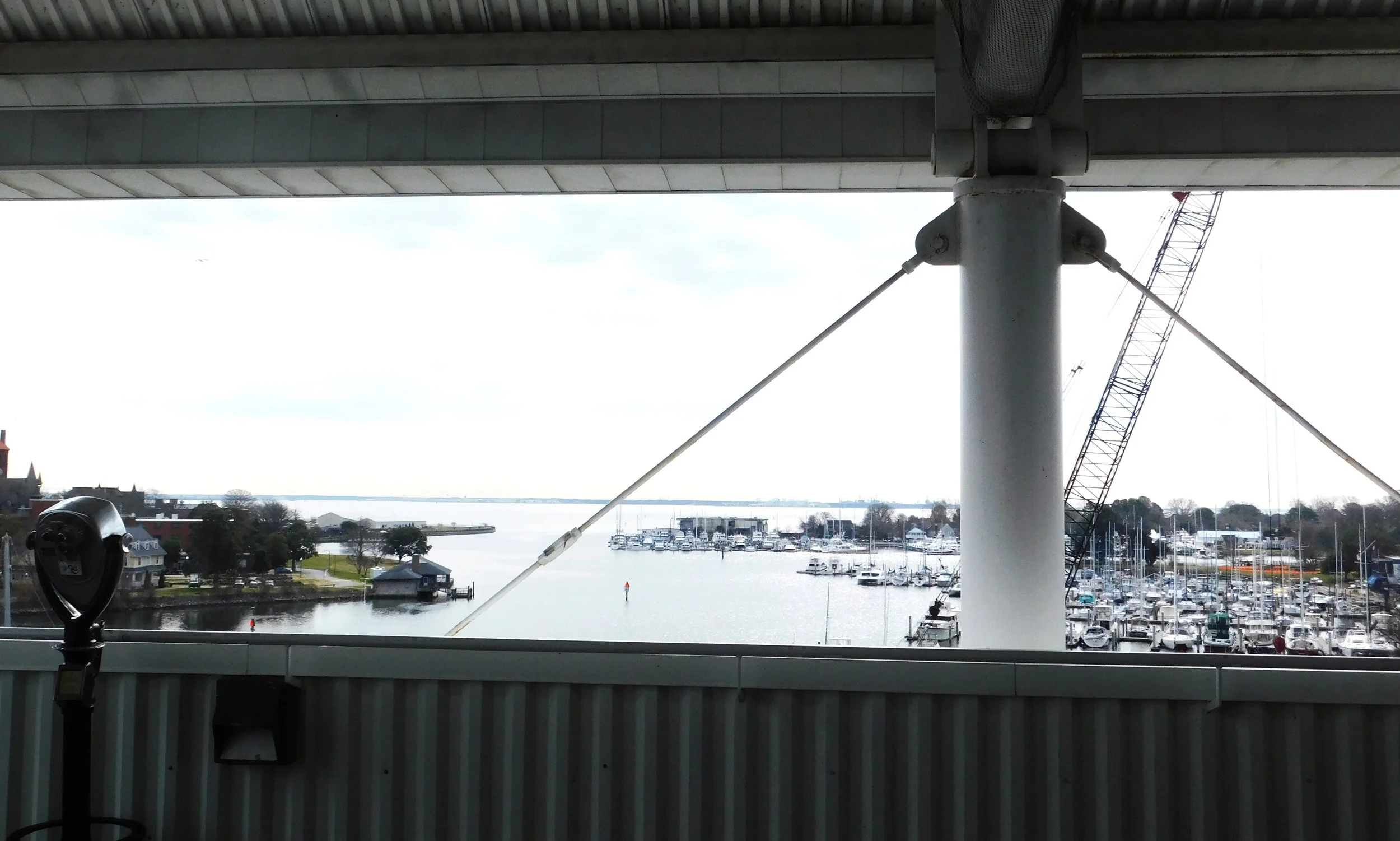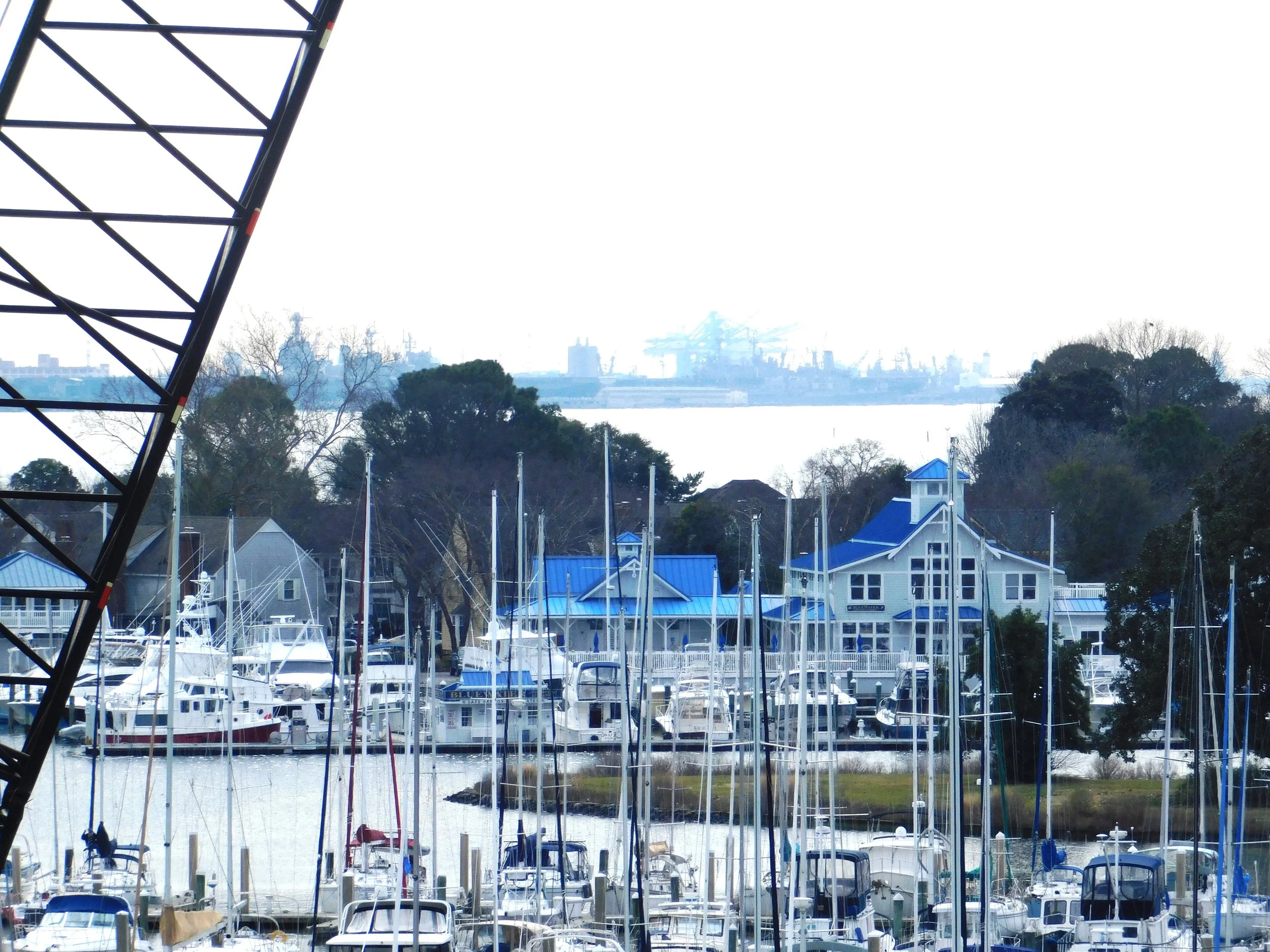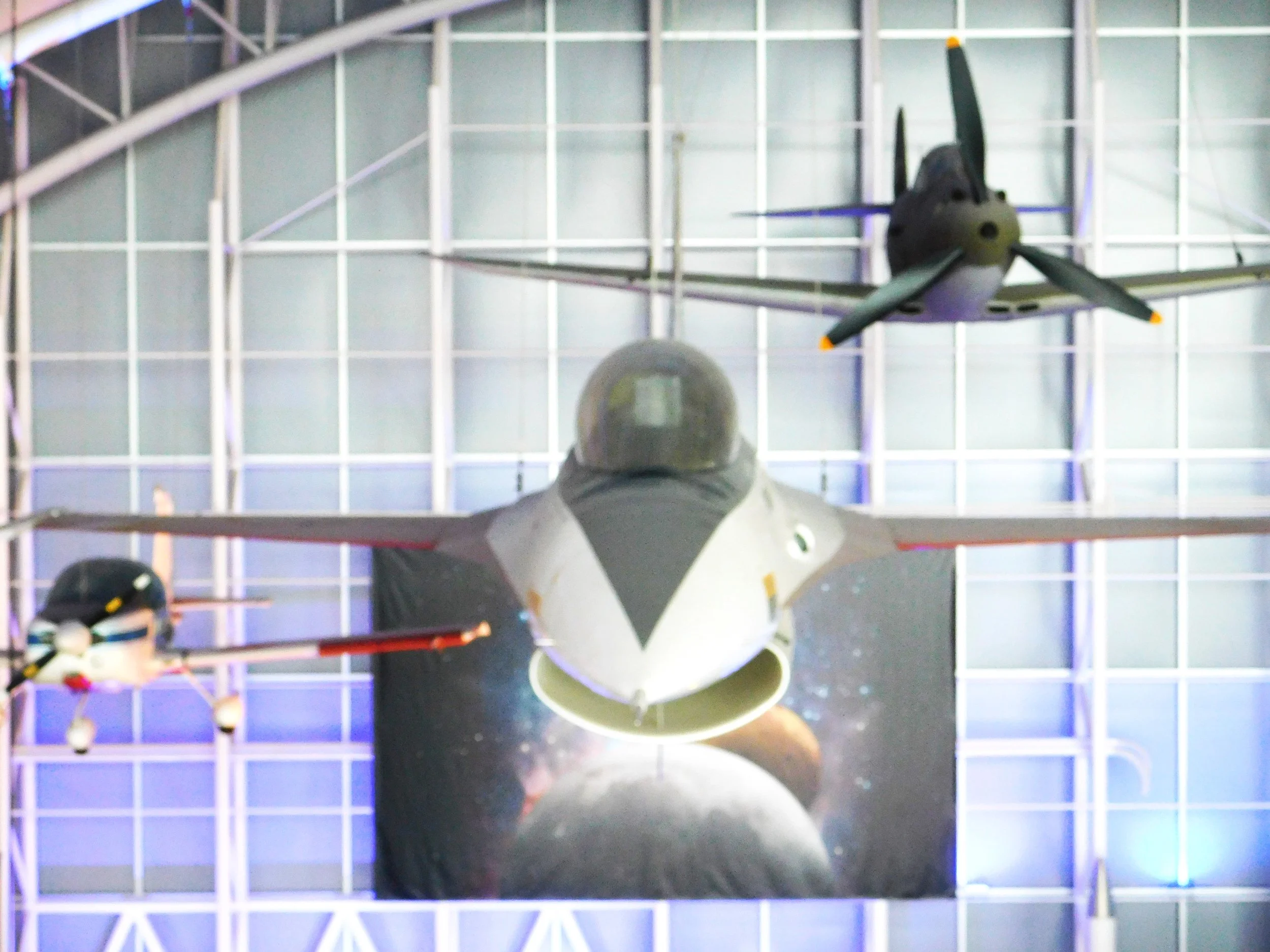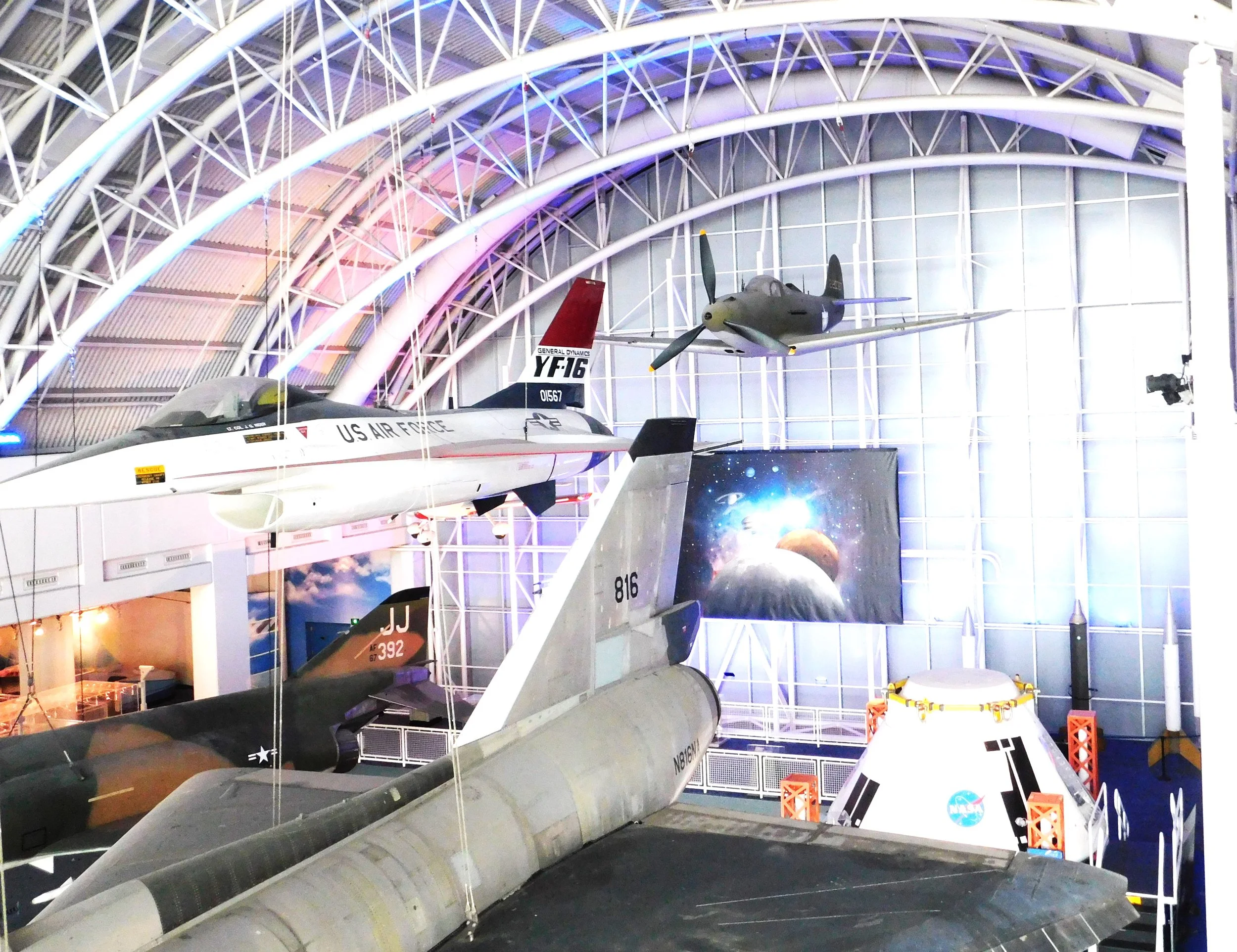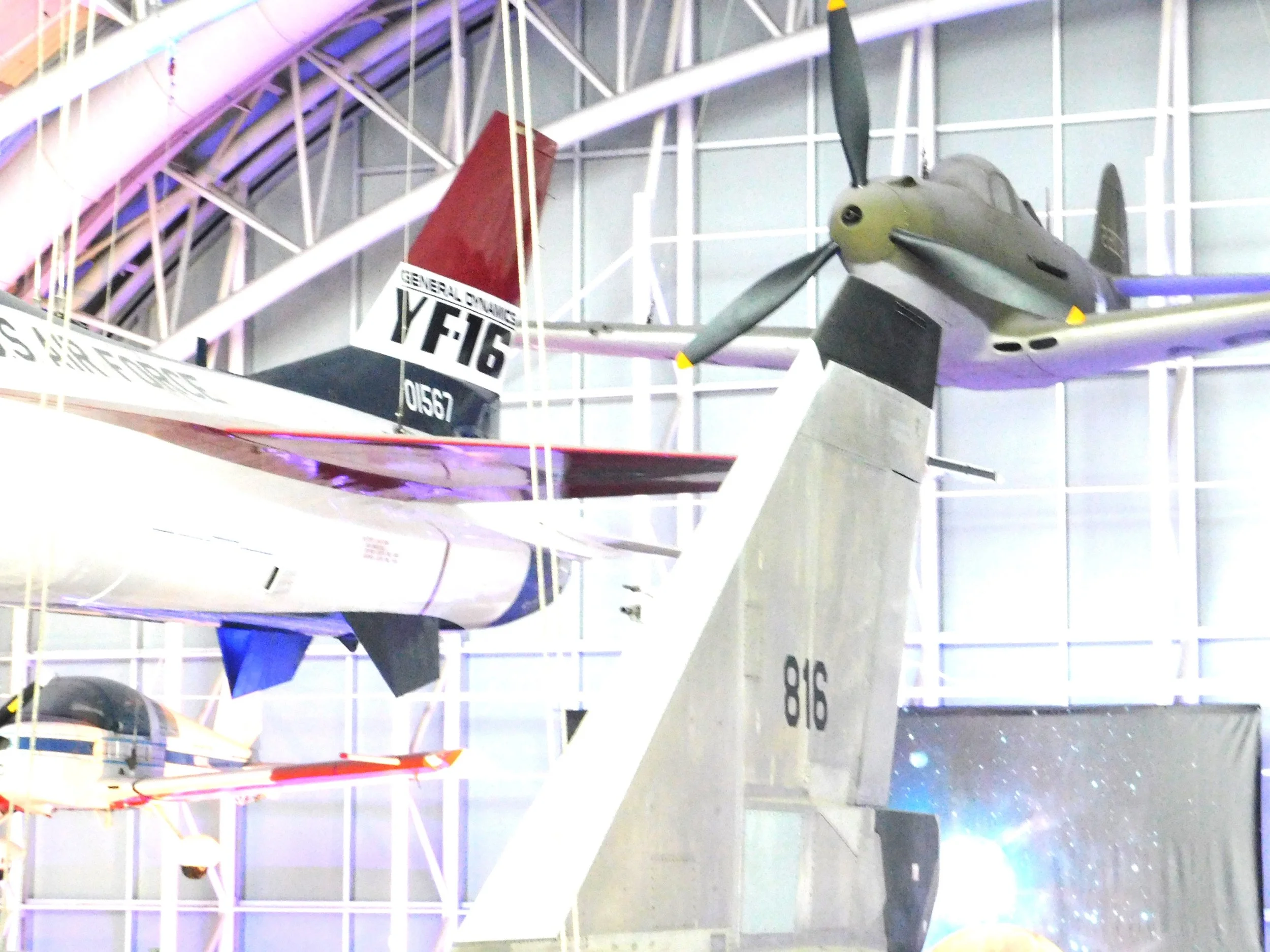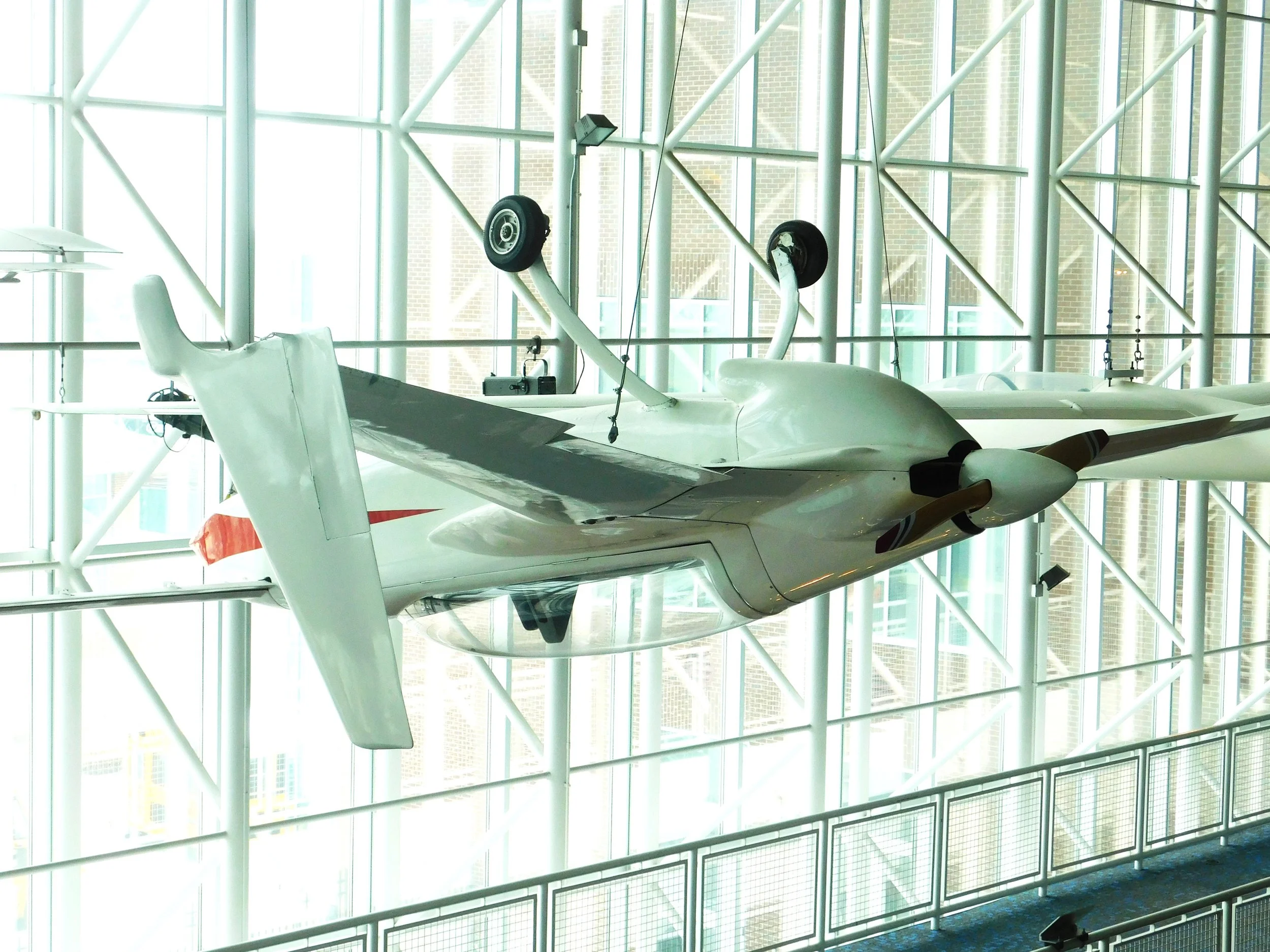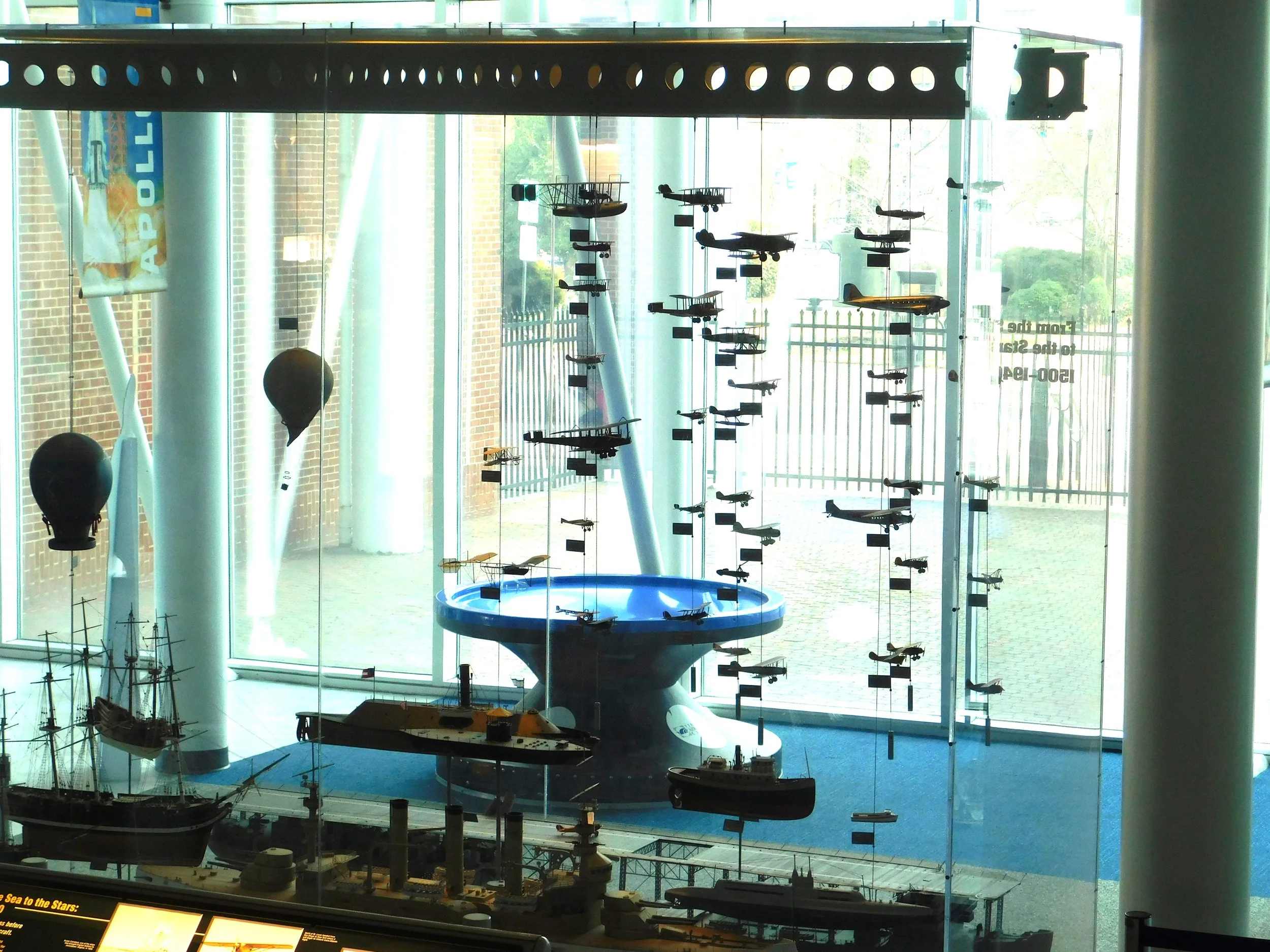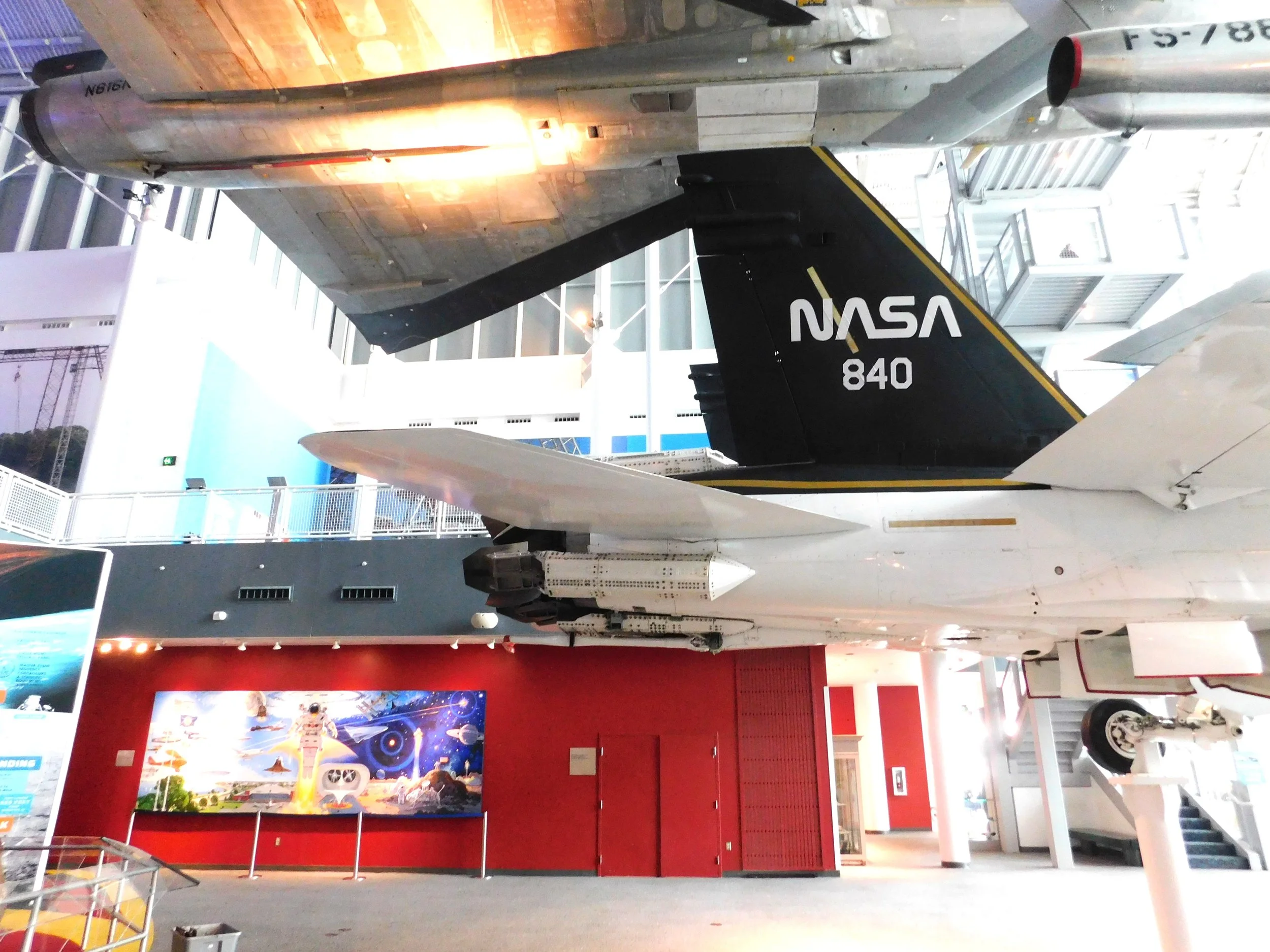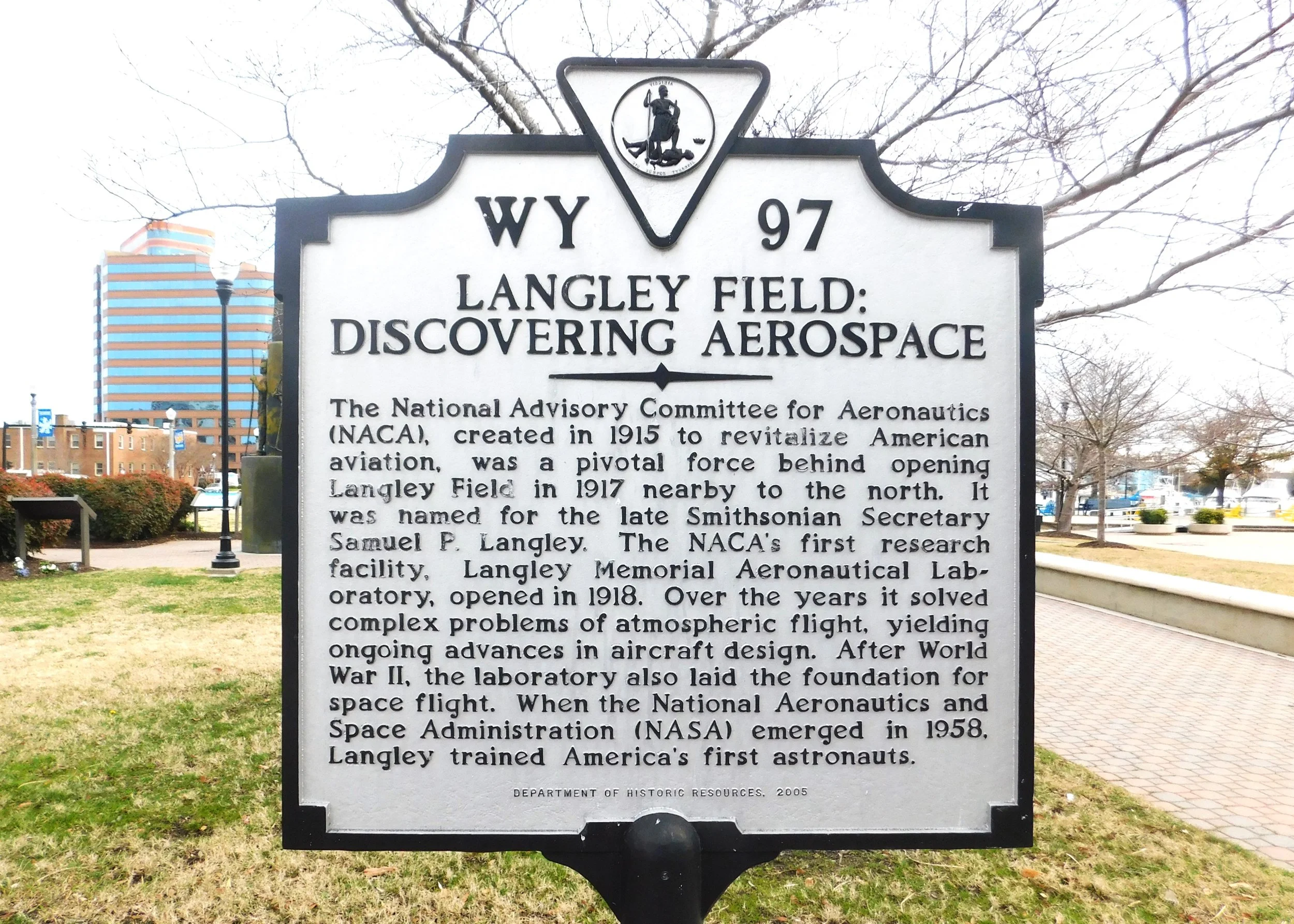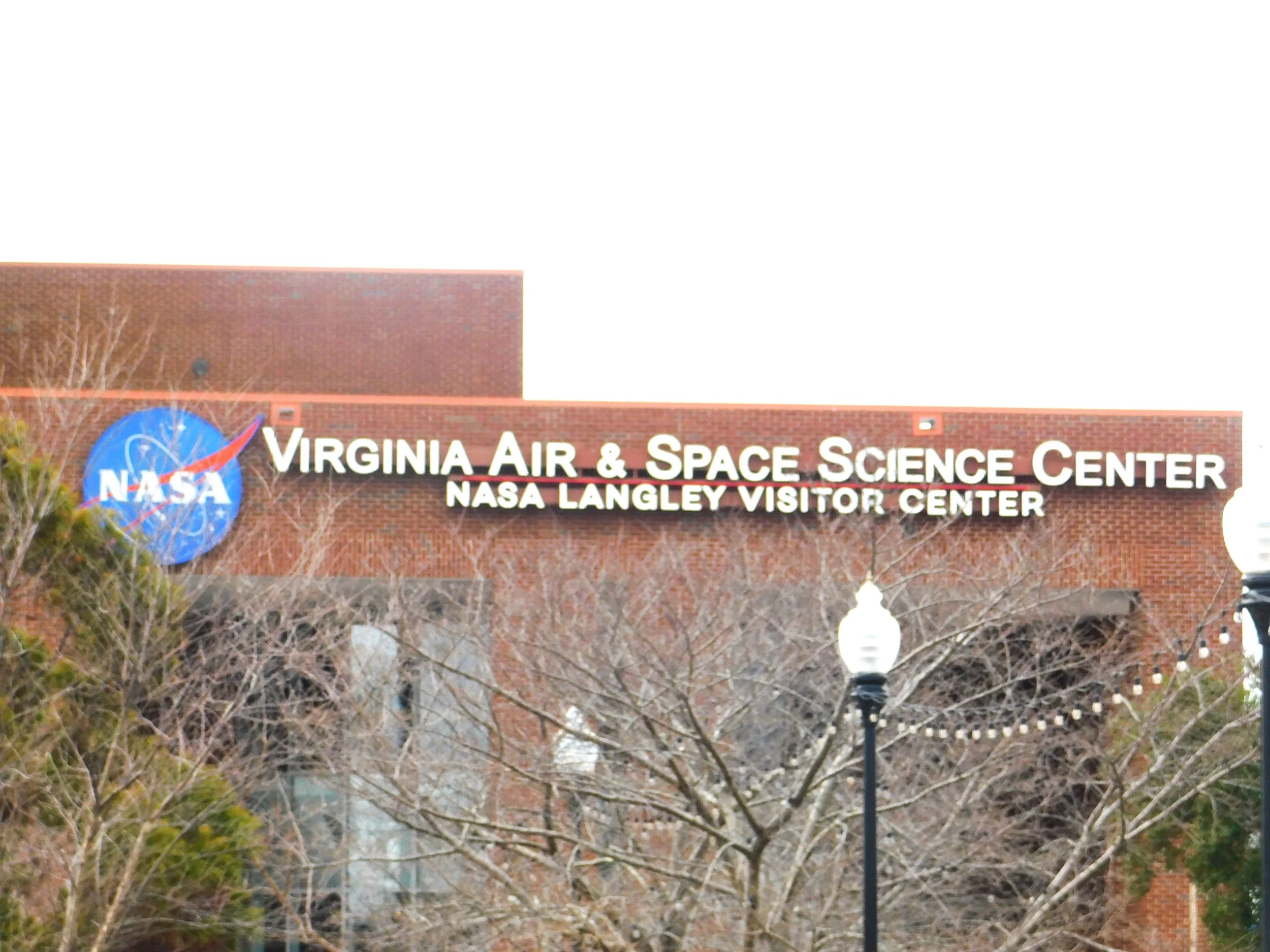Virginia Air & Space Science Center
Issue 45 A visit to the Virginia Air & Space Science Center in Hampton Virginia
The morning of November 14,1969 was rainy and overcast at the Kennedy Space Center as Apollo XII sat waiting to launch. At 11:22, with President Nixon watching live and much of the world watching on TV, the Saturn V rocket lifted off on the second lunar landing mission. This would be the first time a crewed space mission would be launched into overcast skies. Moments after liftoff, the rocket was hit by lightning. The three fuel cells that powered the spacecraft systems were knocked out, leaving it on just battery power. Fifteen seconds later, a second bolt of lightning struck the rocket, which knocked out the attitude indicator and garbled the telemetry stream into Mission Control. On board the command module, the three astronauts had nothing but red warning lights in front of them, with no indication of what the problem was. One of the specialists in Misson Control remembered seeing the same telemetry pattern during an earlier test. He radioed the astronauts- "Flight, EECOM. Try SCE to Aux". Of the hundreds of switches on board, this one was fairly obscure, and Misson Commander Pete Conrad did not know where it was. Alan Bean, the Lunar Module Pilot (LMP) recalled the switch and flipped it. Telemetry resumed to Mission Control and a review of all systems showed that there were no major malfunctions. Bean put the fuel cells back on line and the mission continued, but a major concern remained in Mission Control. There were explosive bolts on the Command Module that would open a compartment to deploy parachutes after reentry. It was determined that the lightning strikes could have damaged the bolts. After much discussion, the decision was made not to tell the astronauts about the problem. There was nothing they could do about it anyway. Ten days later, after a successful lunar landing, the crew returned to earth and the parachutes opened successfully. The crew: Pete Conrad, Alan Bean, and Richard Gordon, all Navy Commanders, were picked up in the Pacific Ocean and taken aboard the carrier, USS Hornet. The module was also recovered and is now on display, in the condition it was in after reentry, at the Virginia Air and Space Science Center in Hampton Virgnia.
———————————————————————————————————-
Opened in 1992, the Virginia Air & Space Science Center has the mission to educate, entertain, and inspire explorers of all ages. The museum was founded as a collaboration between the City of Hampton and NASA’s Langley Research Center. As such, it also serves as the visitor center for NASA Langley. Regular readers know that when a museum has aircraft and spacecraft on display, I tend to concentrate on the aircraft. This museum though, is equally focused on air and space, so we will look at both of those areas. True to its mission, the museum has numerous displays and activities aimed towards younger visitors, and it is a great museum to visit with children.
Let’s start with some of the aircraft. Most of the planes on display are dramatically hung from the ceiling. There are stairs (and an elevator) leading up and around the planes so that visitors have the unique opportunity to view them from different levels.
Republic F-84F viewed from above
Built by Republic in Farmingdale New York, this F-84F Thunderstreak, serial number 51-1786, was delivered to the US Air Force in 1954. The F-84 was originally built as a straight-wing fighter, but experience with the North American F-86 showed the superiority of the swept-wing. Production delays of the first swept-wing version F-84 resulted in a new run of straight-wing versions. This new and upgraded straight-wing F-84 was designated the F-84G, delivered before the F-84F became operational.
As you enter the museum, you pass by three large glass cabinets that display a timeline of the developments of aviation and space travel. Although difficult to photograph, the display is a dramatic, scale representation of aircraft in chronological order. To add to the displays and give context of time and scale, the cabinets also have ship models of the same scale and era.
As mentioned earlier, the museum is also the visitor’s center for NASA Langley.
Founded in 1915, The National Advisory Committee for Aeronautics (NACA) was the forerunner of NASA and the Langley Research Center was established in 1917 in Hampton, VA, as the Agency’s original field center. It continues today as a research, science, technology, and development facility for NASA.
Wind tunnels, of course, are an important part of aviation research. The museum has a highly detailed model of one of the original wind tunnels at the Langley facility.
The intriguing display has lots of details, as well as extensive information and photos about past and current wind tunnel experiments.
Langley has always been a center for a wide variety of research. In the late 90s, I participated in a research project at Langley for the introduction of TCAS (Traffic collision avoidance system). There had been a request for 757 captains to do some simulator flying to develop escape maneuver procedures for this new safety system. It was interesting to see the original plans for what pilots should do after receiving a TA and then RA (Traffic Alert, Resolution Advisory). The original maneuver, that we tested in the simulator, was aggressive, even violent- much like a windshear escape maneuver. Today, the maneuver is rather mundane, mainly due to those tests and further development of the TCAS system.
This Convair F-106B Delta Dart, 57-2516, served with NASA since its delivery to the Lewis Research Center in Cleveland in 1969. The 2-seater F-106 was flown on various research missions in Ohio and at Edwards AFB in California. From 1980 to 1986, this Delta Dart was used at Langley to study lightning strikes (the composite nose was replaced with a metallic nose for the study). On one particular one-hour flight, this plane recorded 72 lightning strikes.
NASA Photo by: Jim Ross, public domain
The F-106 is an example of supersonic “area rule” fuselage design. Originally formulated in Germany during WWII, the technique was further developed by NASA at Langley. Also known as the “coke bottle design”, the fuselage is pinched in the middle to reduce drag at supersonic speeds. In basic terms, the surface area of the plane is kept as even as possible throughout the length of the aircraft- leading to a reduction in fuselage area at the wing location, and a reduction in drag.
This F-106B has been in the museum collection since its retirement from NASA in 1986.
Hawker XV-6A Kestrel, 64-18263
The Hawker P.1127 first flew in 1960 and scale models were originally tested in a Langley wind tunnel. Six of the original P.1127s were built and then nine of an upgraded version, the Kestral, were built and tested. One of these, tail number 521, was used as a research aircraft by NASA Langley from 1968 to 1974. Eventually, the aircraft entered production (in 1967) as the Hawker Siddeley Harrier which served with the U.S. Marines from 1971 until 2006.
Researchers at Langley have not only experimented with jet aircraft, but also with light aircraft such as this Rutan Vari-Ez homebuilt that helped spur the homebuilt industry, and this Schleicher ASW-12 Glider, an early high-performance glider.
Photo courtesy of Mike Ganoe Jr, RaptorGino Photography,
Also on display is a Grumman-American Yankee. Built in 1969, this aircraft was the first Yankee built, serial number 001. It was used by NASA for stall and spin testing.
One area that is clearly a favorite of kids (and adults) is this large space explorer gallery. With numerous displays and hands on activities, there is a lot to see and do.
Echoing the display cases in the main hall, these rocket models show relative size as well as era. They are each thoroughly described in the accompanying placards.
Created at the Langley Research Center, this lunar habitat, a type of “pop-up” tent, allows visitors to explore the type of facility that will soon be used by researchers on the moon and, eventually, on Mars.
Displayed from the ceiling is this full-scale engineering model of a Viking Orbiter. In the fall of 1975, two identical spacecraft- Viking 1 and Viking 2, were launched atop Titan IIIE rockets. The two craft reached Mars orbits in the summer of 1976. The spacecraft spent a month photographing Mars and sending the photos to earth. After picking good landing spots, each spacecraft launched its Mars Lander, both of which made a soft landing on Mars.
Mars lander (1976)
The two orbiters and two landers, which were managed by NASA’s Langley Research Center, provided a huge amount of information about Mars- the bulk of what was known about the planet until 21st century missions. The two orbiters and two landers transmitted data for two to six years until each failed.
Mars Rover (2004)
Displayed next to the 1976 lander is a full-scale model of a mobile robot named Opportunity, part of NASA’s Mars Exploration Rovers project, which was launched in 2003. Similar to the Viking project, two mobile robots named Spirit and Opportunity were launched to the surface of Mars from two satellites. Opportunity sent information back to Earth from 2004 until contact was lost during a dust storm in 2018. The sister craft to the Rover Opportunity, named Spirit, transmitted data from 2004 until it got stuck in sand in 2010, when the craft’s batteries apparently failed.
The McDonnell Douglas DC-9 was a mainstay of shorter, domestic airline routes for many years. First flown in 1965, 976 of the type were built from 1965-1982. The DC-9 was then stretched and re-named the MD-80. After Boeing merged with McDonnell Douglas in 1997, the final version of the type, which was similar in length and wing to the DC-9-30, was renamed the Boeing 717.
The entire DC-9 fuselage is on display and the interior is open to visitors, including the cockpit.
I didn’t want to disturb these young men with the flash, but they were really enjoying playing “airline pilot”.
Displayed above the DC-9 is this full scale, very accurate, replica of the 1903 Wright Flyer. When the Wright Brothers visited the Outer Banks from 1900-1903 to conduct their flying experiments, they travelled from Dayton to the Norfolk area by train. They arrived in Hampton Roads, very close to the location of the Virginia Air and Space Science Center. From there they took a steamship across the Chesapeake Bay to Norfolk. They then continued by train to Elizabeth City, NC where they caught a boat to the Outer Banks. In 1900, Wilbur made the first journey (Orville followed a week later, after attending to business at their bike shop). Wilbur’s first trip to Kitty Hawk was quite eventful- you can read about it in this previous blog-
Another McDonnell Douglas aircraft of the 1960s, very different from the DC-9, was the F-4 Phantom II. The F-4 was the primary supersonic fighter throughout the cold war. The large, two-seat, Mach 2.2 fighter was produced from 1959 to 1981 with 5,195 built. The Phantom II was used extensively during the Vietnam War by the Navy, Air Force, and Marines. All five American pilots who earned “ace” status (five kills) during Vietnam flew the F-4.
Various versions of the F-4 were used in a wide variety of testing and research roles. One of those roles by NASA, in the 1960s, was to photograph Titan II missile launches. The F-4 would be put into a Mach 1.2 dive timed to reach the surface just as the Titan lifted off. The F-4 would then climb vertically with the rocket, taking photos. The F-4 was able to stay with the missile until around 68,000’.
The F-4E, serial number 67-0392, on display at the Virginia Air & Space Science Center recorded two kills while serving in the Vietnam War.
Like any museum of this size, there are many more displays than are covered here. Take a look at the photo gallery at the end to see more, or, better yet, visit the museum yourself!
————————————————————————————————————————————
To learn about museum hours and costs as well as books to read and other interesting odds and ends, keep reading! At the end you will find a photo gallery of the entire museum.
PLANNING YOUR VISIT
Hours of Operation
Monday Closed
Tuesday Closed
Wednesday 10:00 am – 5:00 pm
Thursday 10:00 am – 5:00 pm
Friday 10:00 am – 5:00 pm
Saturday 10:00 am – 5:00 pm
Sunday 12:00 pm- 5:00 pm
$22.50 Adult
$19.00 Child* (under 3 free)
$20.50 Senior
$19.50 Active Military/NASA*
Members free
FLYING IN
Newport News/Williamsburg airport (KPHF) is 15 miles north of the museum. Norfolk International Airport (KORF) is located 15 miles to the southeast, but it is on the other side of the Chesapeake Bay, with a tunnel in between.
SUGGESTED READING
“I guess there are never enough books.” John Steinbeck.
“The Great Air Race” by John Lancaster is about a coast-to-coast air race, and back, that took place in 1919. The purpose was to develop interest in commercial flying as well as to encourage the building of municipal airfields and navigational facilities so that reliable air mail service could be established. The brainchild of General Billy Mitchell (and others), the race took place on the cusp of The Golden Age of Aviation (and probably helped usher it in). The race was run west to east, and east to west at the same time and the book follows the progress of many of the fliers. It includes interesting anecdotes,pictures, and first hand accounts. This is a well-researched and documented book, that is also a great read.
Thanks to my friend and AME, Charlie Davidson, for this recommendation.
WRIGHT BROTHERS STORIES
Note- this is a new section of the blog- a look at Wright Brothers Stories, many of them lesser known. Two previous sections have been removed to make space- “Where to Eat” and “Local Attractions.” With the help of the internet, these are pretty easy to find, but if a museum recommends anything special, I will still include that information.
This edition is about the December 2023 120th anniversary of the first flight held at the Wright Brothers Memorial. As events chair of the First Flight Society, I co-chaired the event with Robin Snyder and Adair Raybon of the National Park Service.
Note: all photos in this section are courtesy of Biff Jennings. Thanks Biff for all the great photos!
Jon Berndsen’s 1937 Beechcraft 17 Staggerwing
Every year, since 1928, The First Flight Society, in conjunction with the National Park Service, has held a celebration at the exact location where the historic first flight took place- at the base of Kill Devil Hill. And each year, in addition to honoring the Wright Brothers, the Society honors an inductee into the Paul E Garber Shrine. The Shrine honors those individuals and groups who have achieved significant “firsts” in aviation’s development. For 2023, the award went to Walter and Olive Ann Beech. The weekend festivities included 20 Beechcraft aircraft on display at the foot of the Wright Brothers Monument.
Visitors were also treated to a flyover by a team of Bonanzas.
Besides the Beech Staggerwing, two military Beech 18s were at the celebration and they also took to the air for a flyover.
Mark Jacob’s 1943 Beech SNB (RC-45J). Note aircraft on display, lower right.
John Hess’s AT-11 lands at First Flight Airport.
Click here to see a video of the two aircraft in flight. (Video courtesy of Greg Ingram)
The aircraft display and the flyovers took place on December 16 because a tropical storm hit the Outer Banks on the 17th and most of the planes had to get out of town ahead of the storm.
Rain or shine, the main celebration to honor the Wright Brothers and the Garber honorees always takes place on December 17, although this year, a tent was erected for the viewing area.
After welcoming ceremonies, there were presentations about the Wright Brothers, the First Flight Society, and Walter and Olive Ann Beech, followed by the unveiling of a portrait that will hang in the museum at the Wright Memorial.
C.K.Lee, president of the American Bonanza Society, gave the keynote address about Walter and Olive Ann Beech and the company they founded.
Jennifer Pitt and Jeffrey Pitt, grandchildren of the Beeches, were on hand to accept the portrait of Walter and Olive Ann Beech (painting by Greg Kavalec).
Another highlight of the annual event is the attendance of descendants of the witnesses to the historic first flight. With descendant Paul Wright Jameson acting as emcee, wreaths were placed by each family at the boulder marking the spot of liftoff.
In spite of the worsening weather, three Bonanzas, led by Lee Wenninger, remained to perform a flyover at exactly 10:35, the time that Orville lifted off on the first flight.
As is tradition, a luncheon was held after the events at the memorial and a variety of speeches and presentations capped off a very successful 120th celebration of the Wright Brothers historic flight.
Click here to view a short presentation about Walter and Olive Ann Beech that the family produced for the event.
UP NEXT
Fleet Air Arm Museum, Yeovil, England
MUSEUMS ARE WHERE YOU FIND THEM
This segment is dedicated to finding interesting aviation artifacts that are in public view- but not in an aviation museum. If you see one send a photo!
Driving north on the Delmarva Peninsula, just after you get on route 1 from route 113 in Delaware, this Cessna 150 will catch your eye.
PHOTO GALLERY
Click any photo to enlarge
Issue 45, Copyright©2024, Pilot House Publishing, LLC. All rights reserved.
Except where noted, all photos by the author
